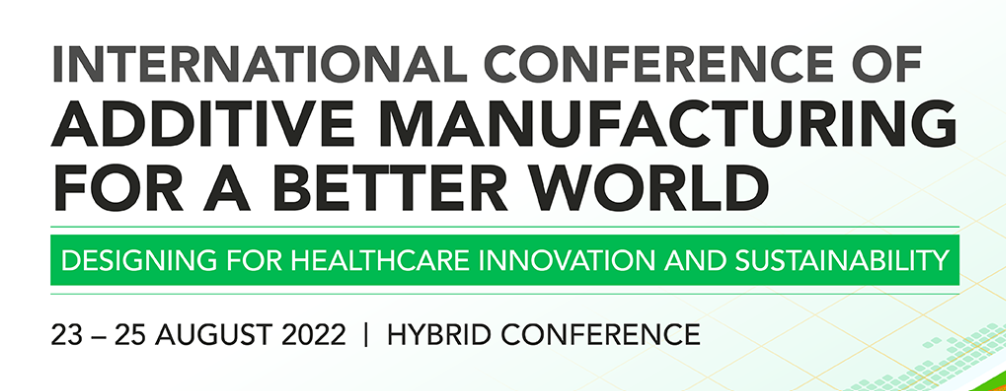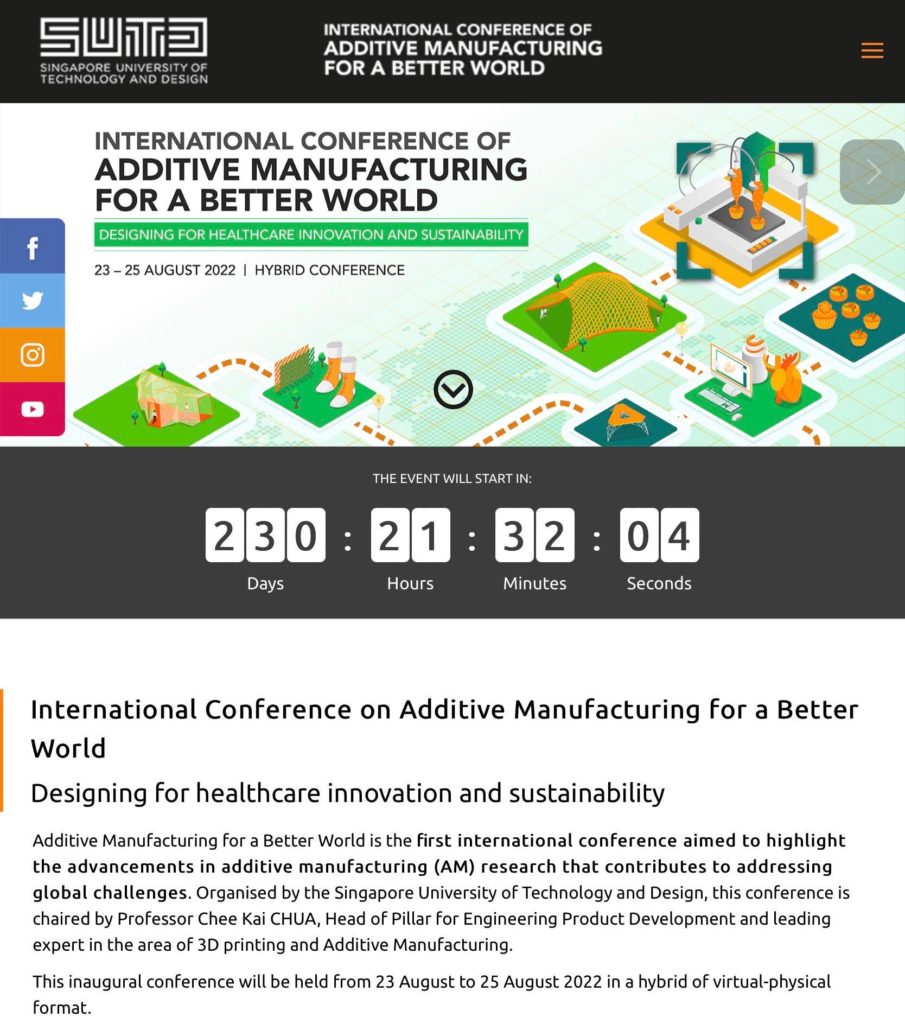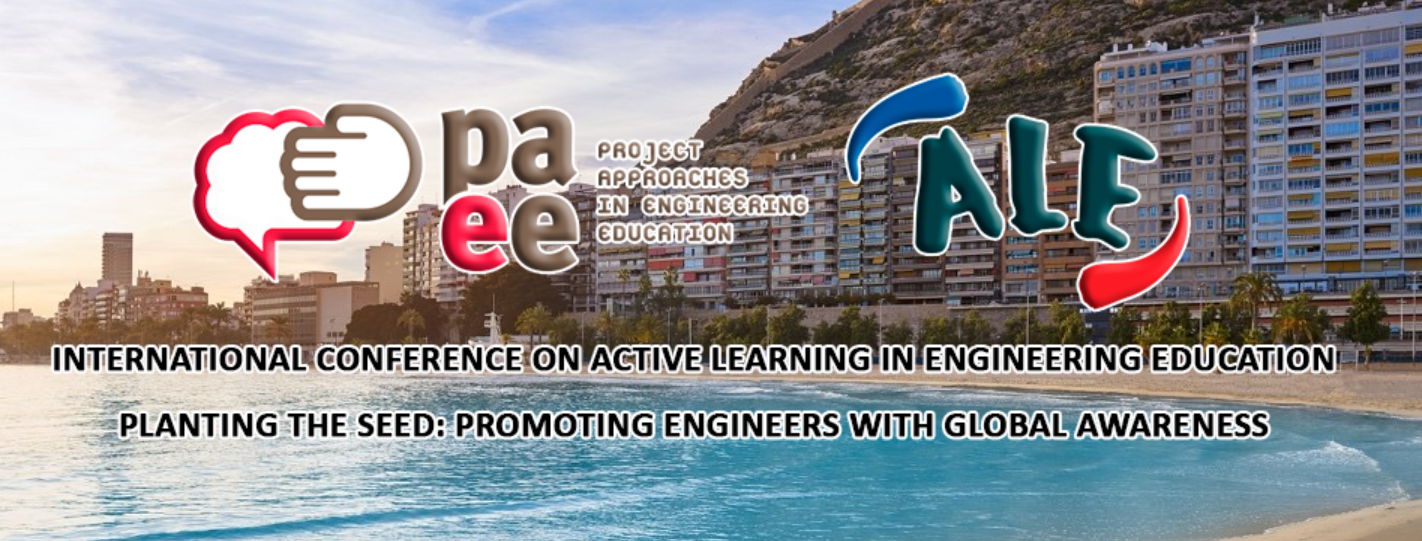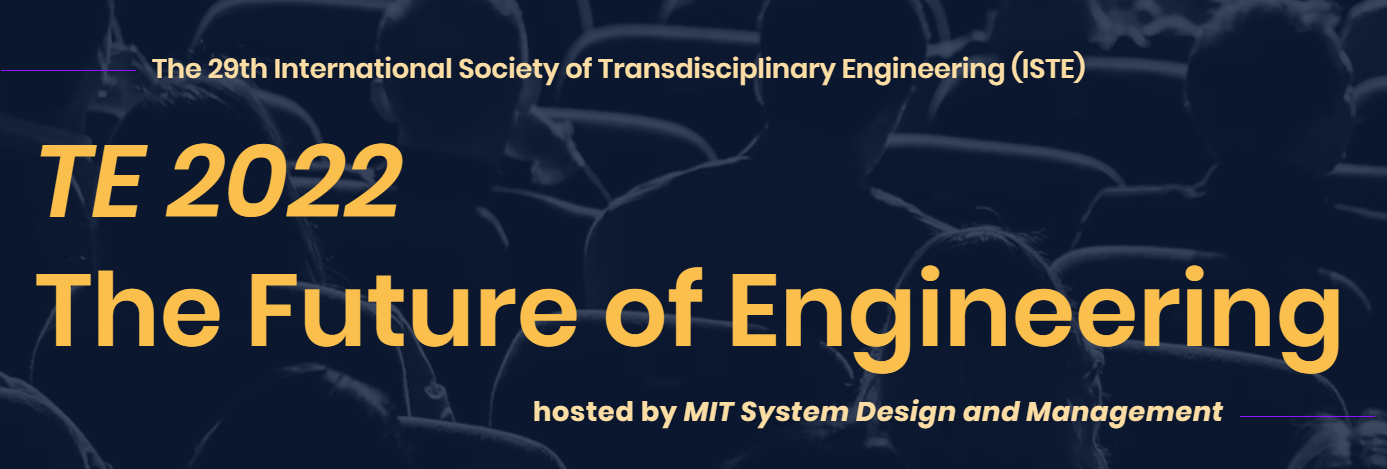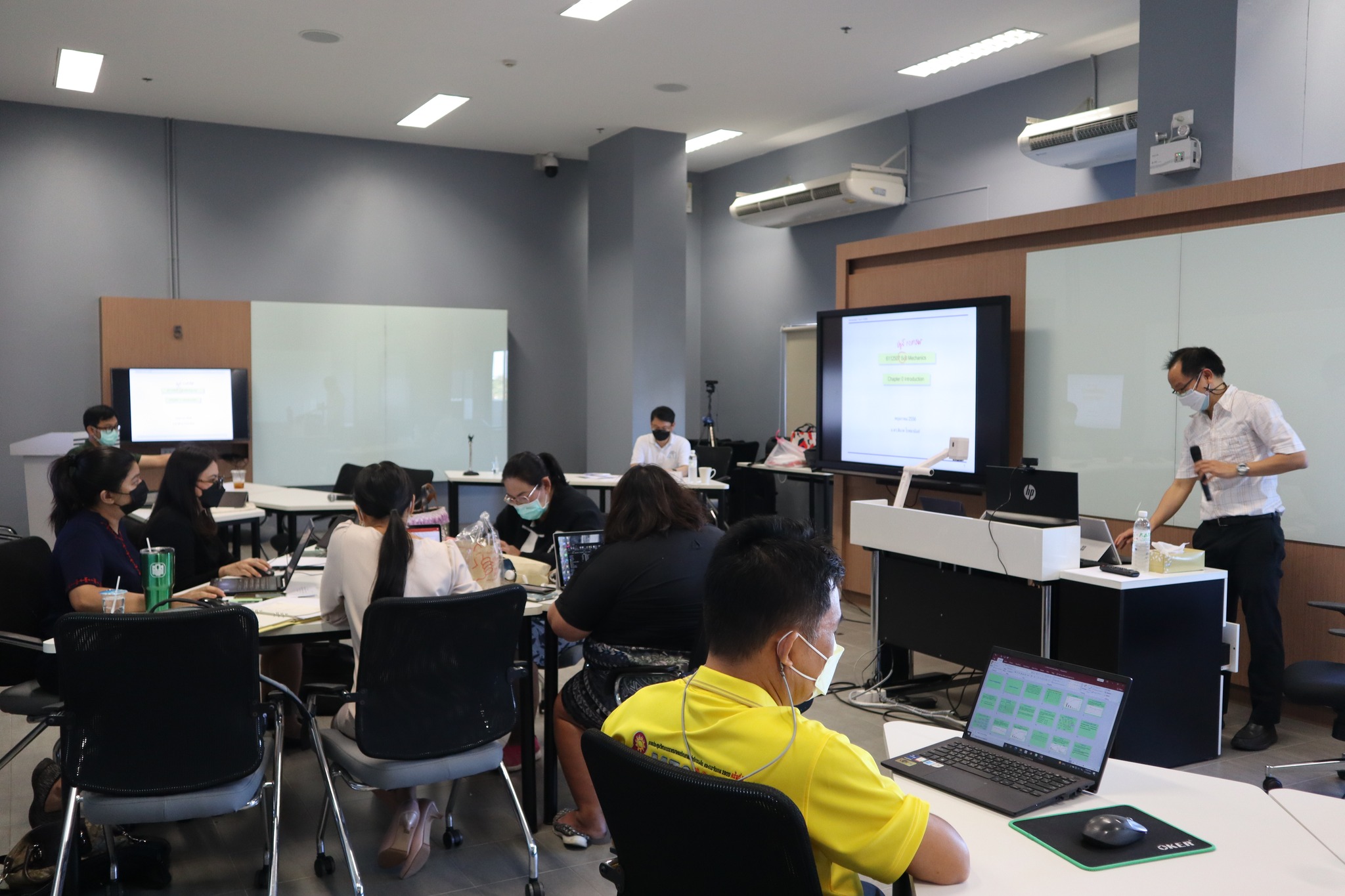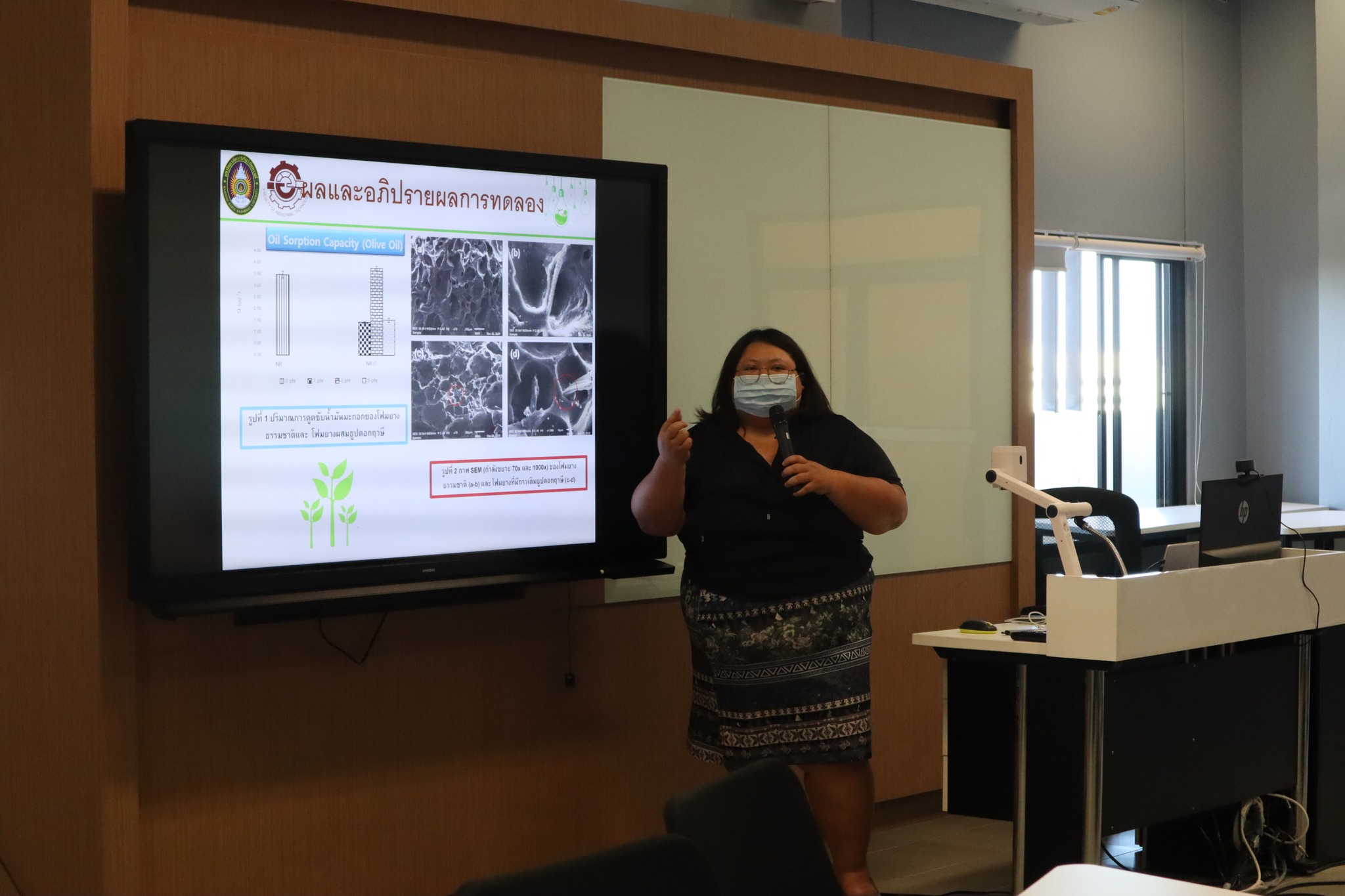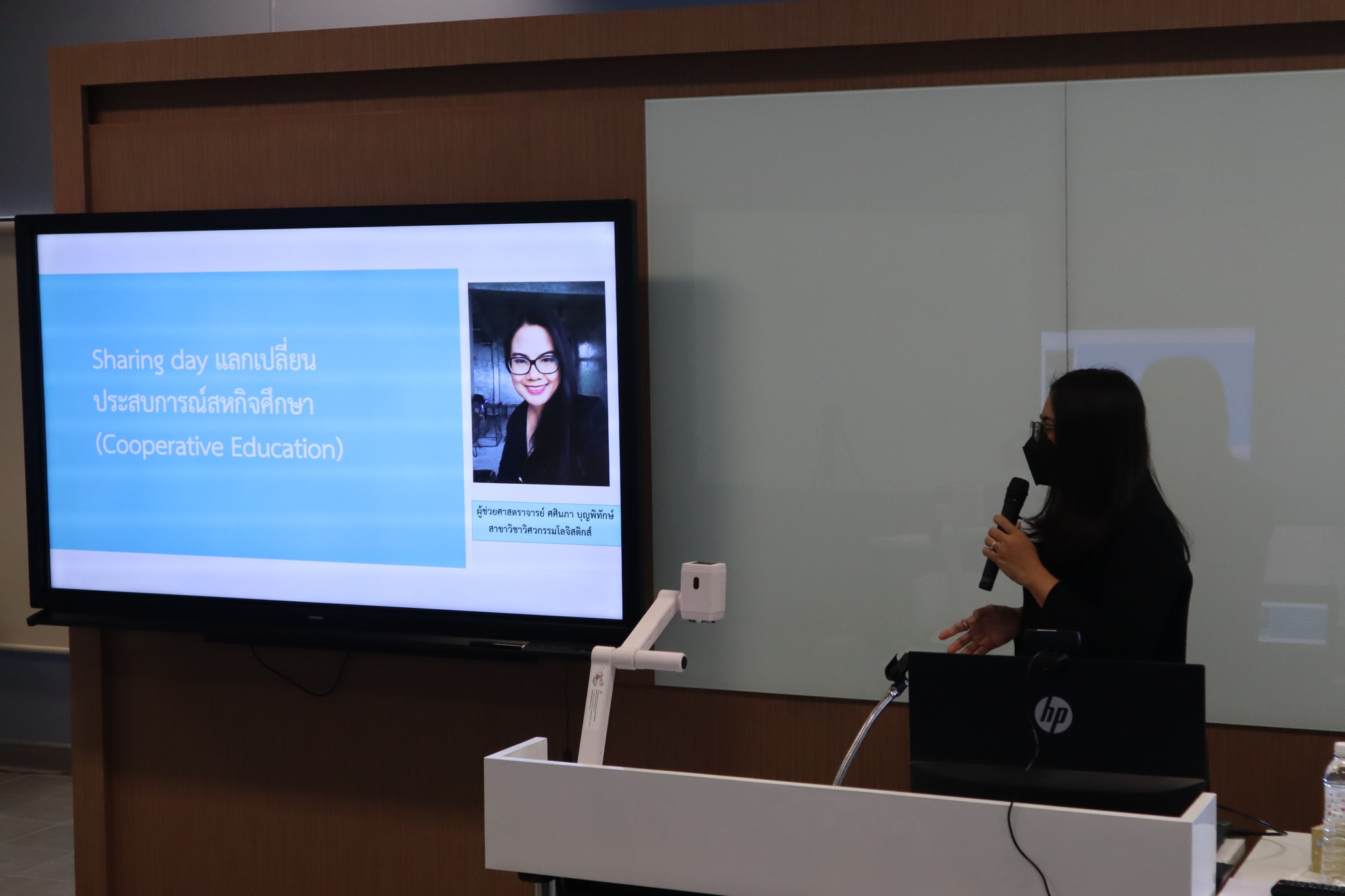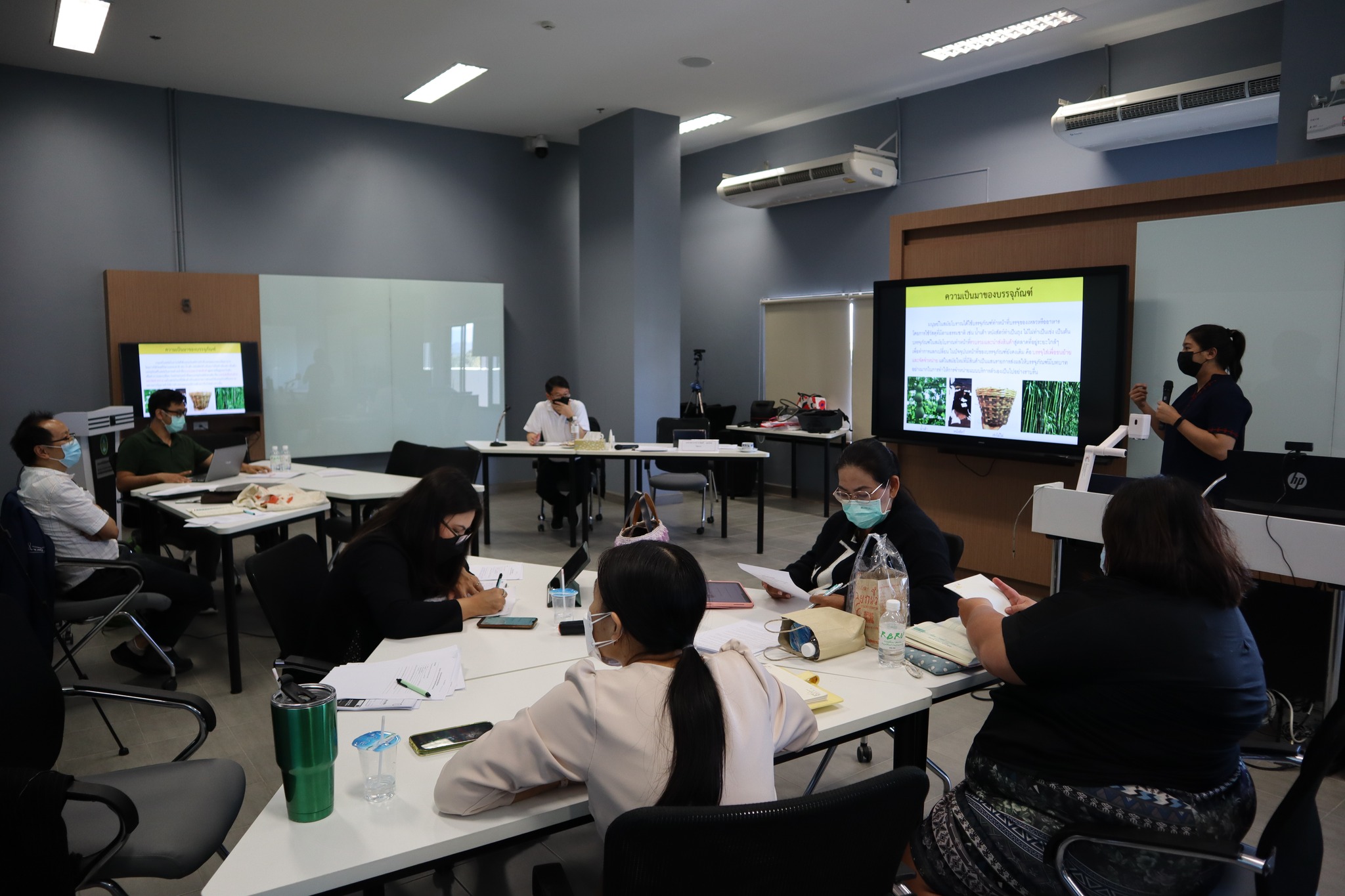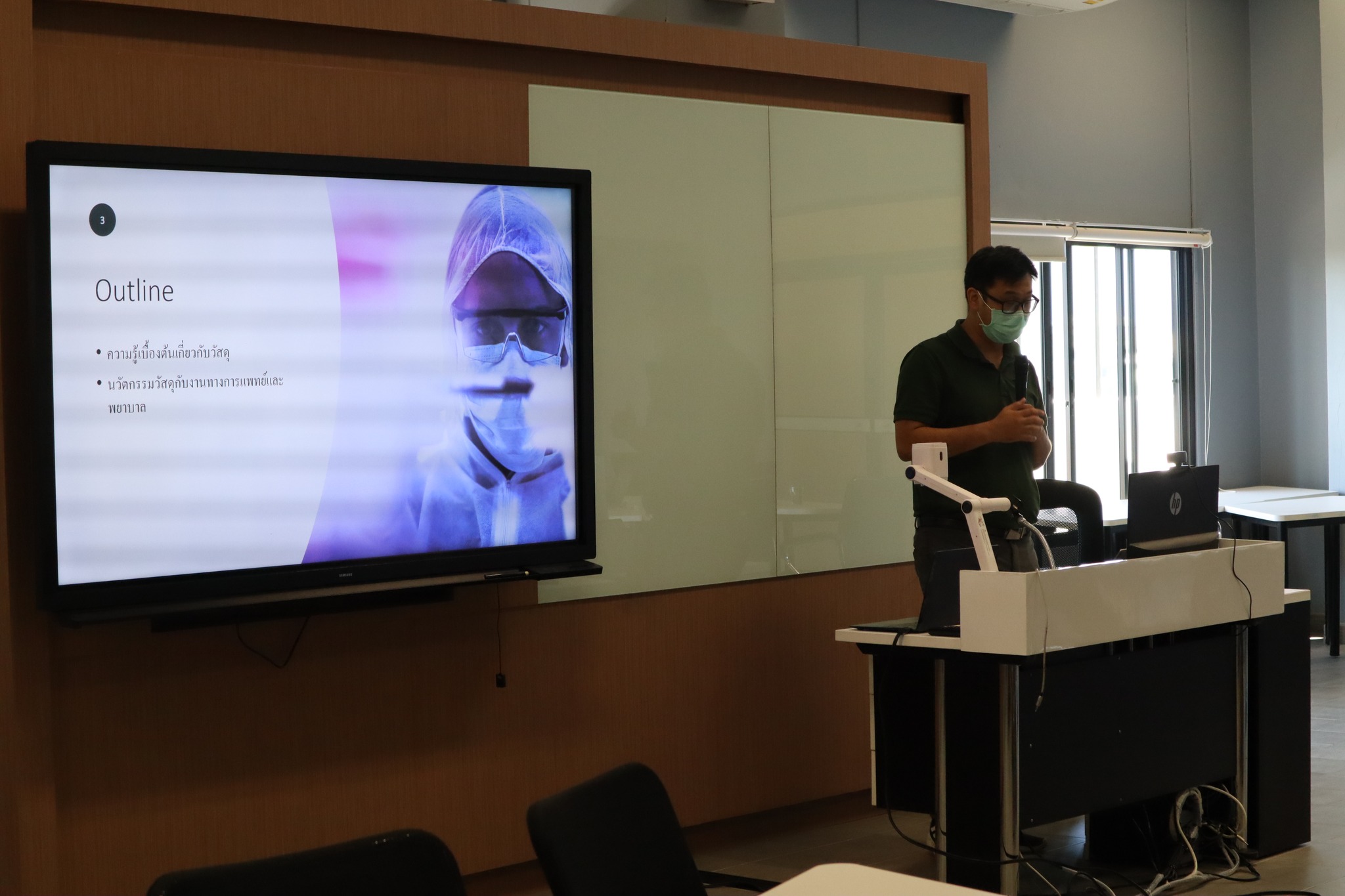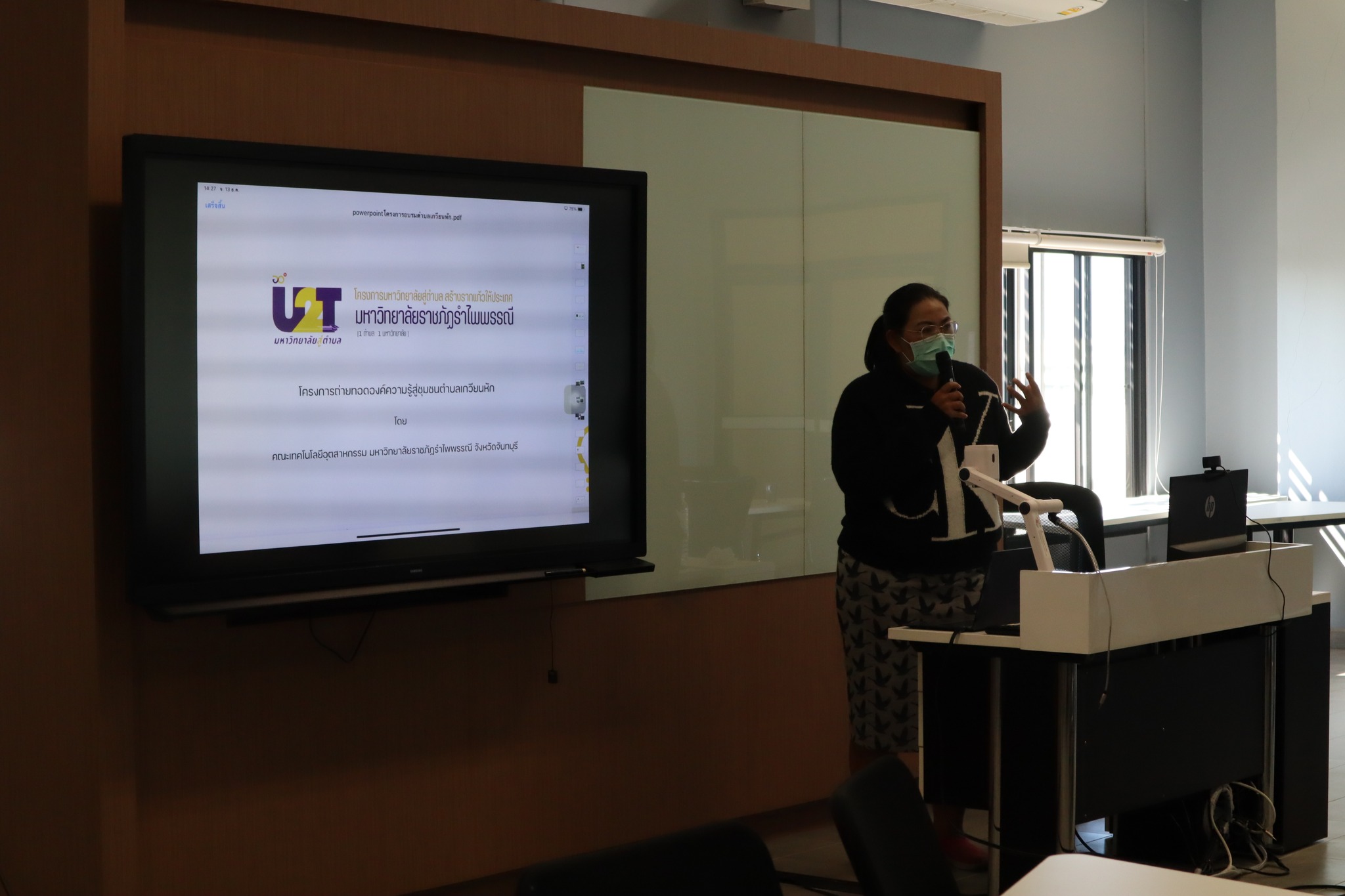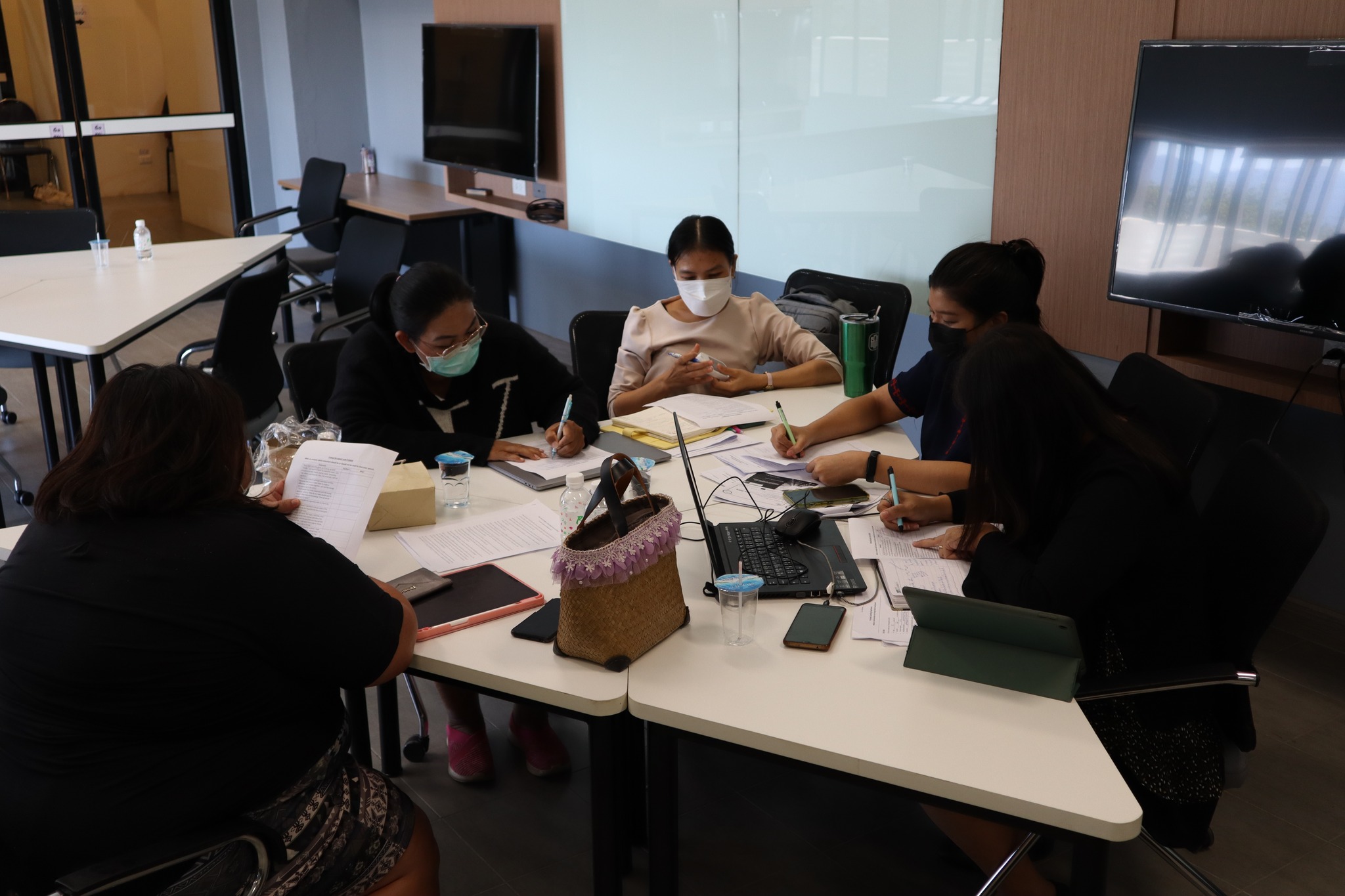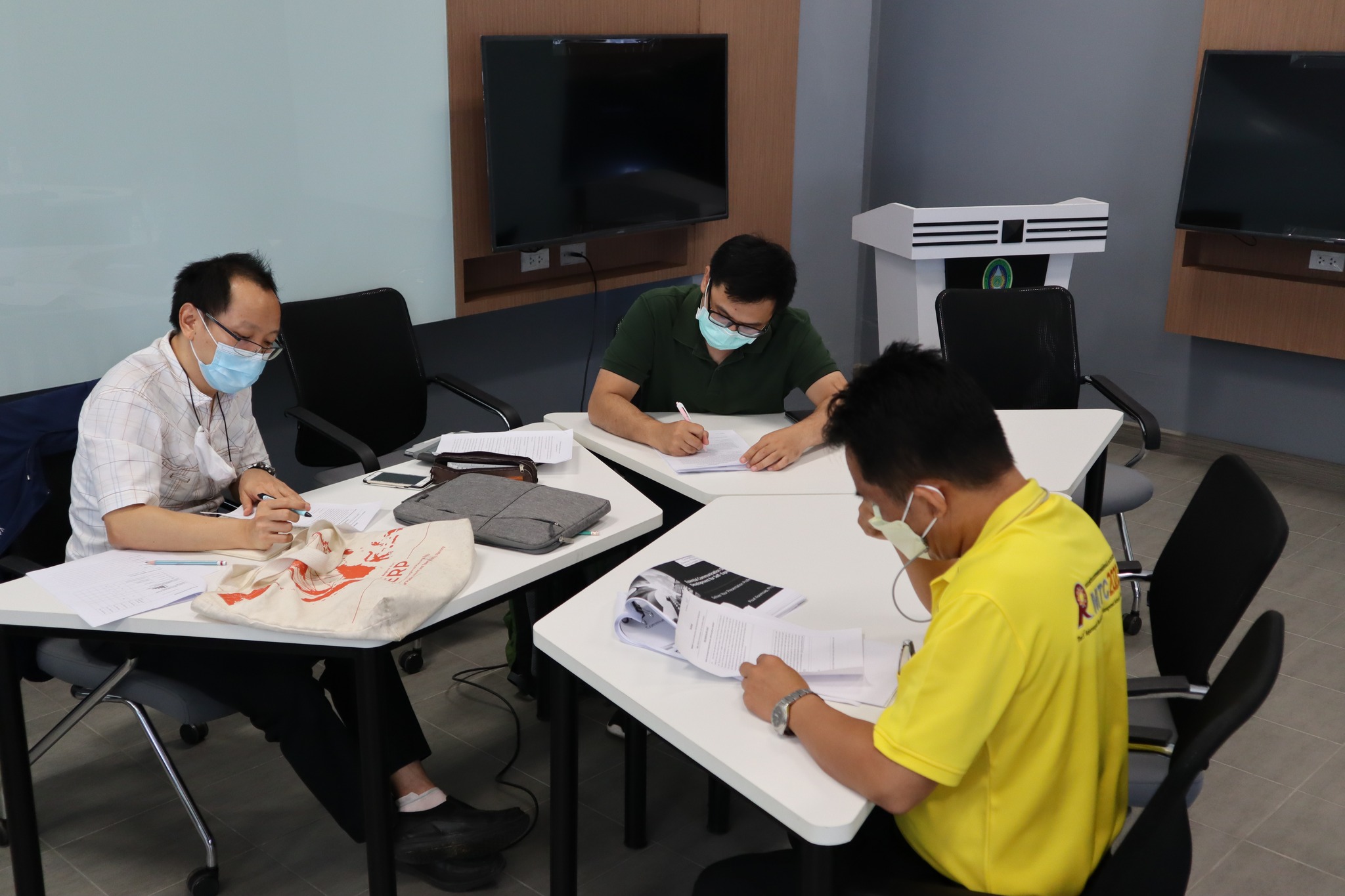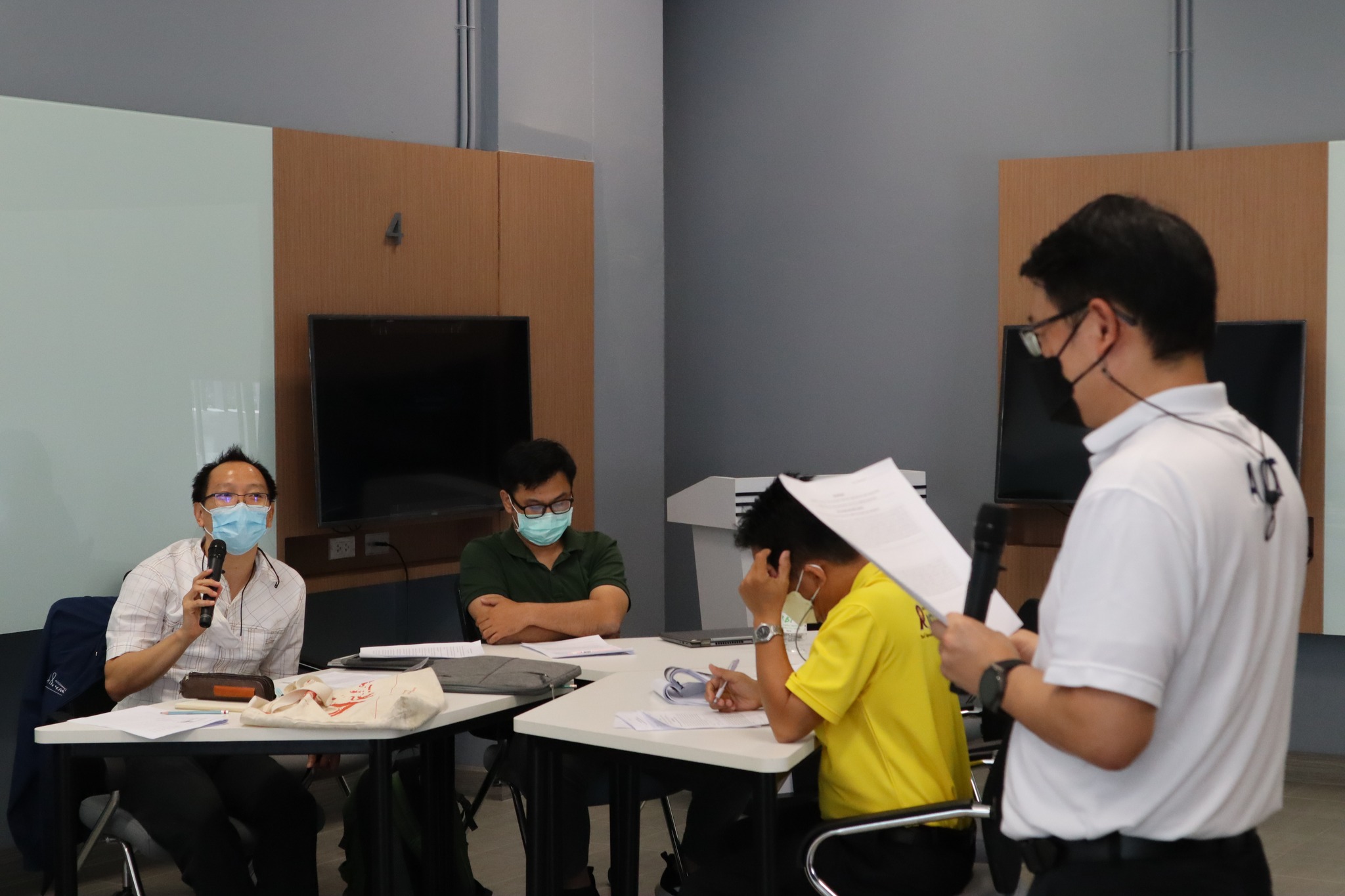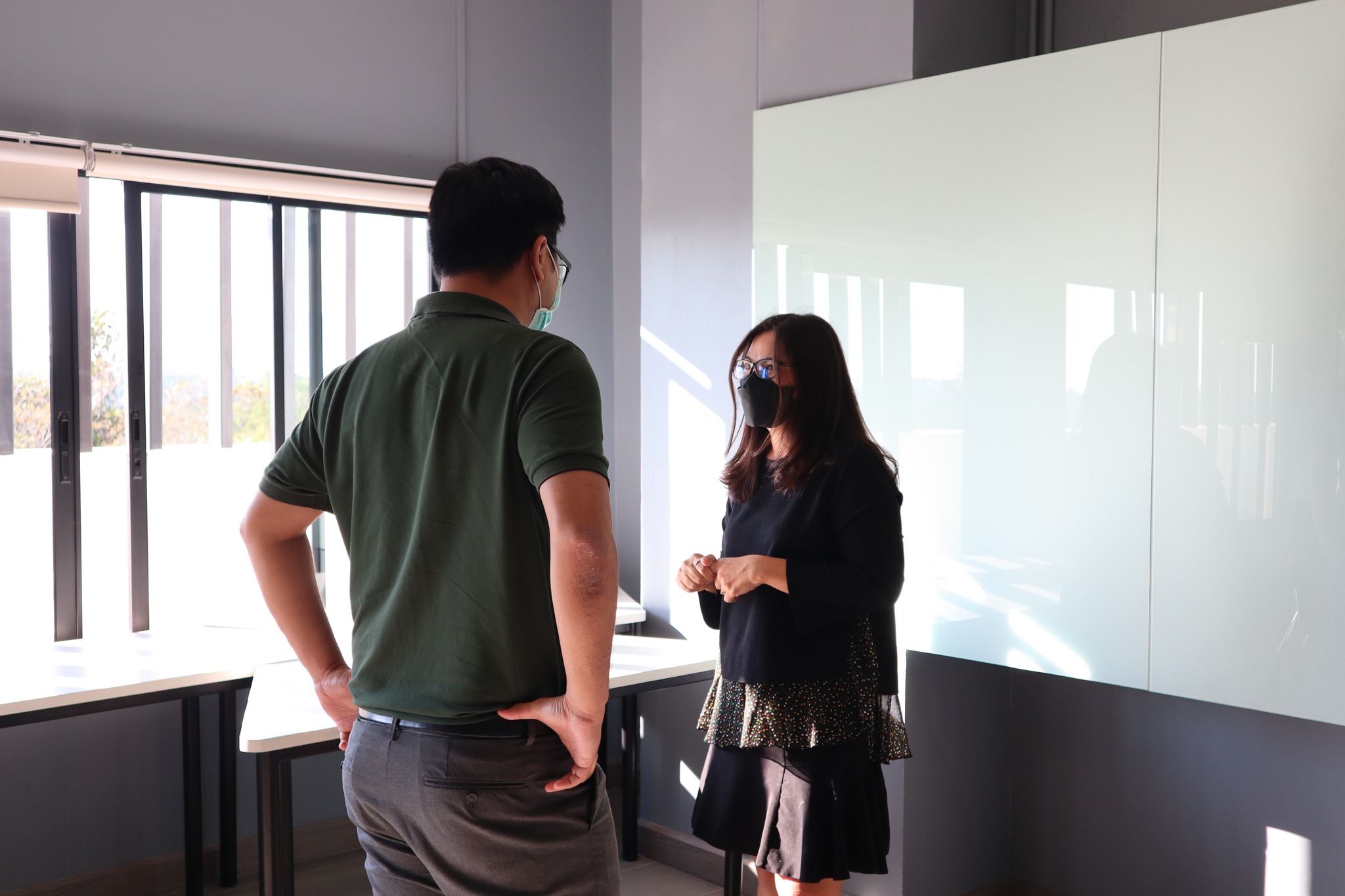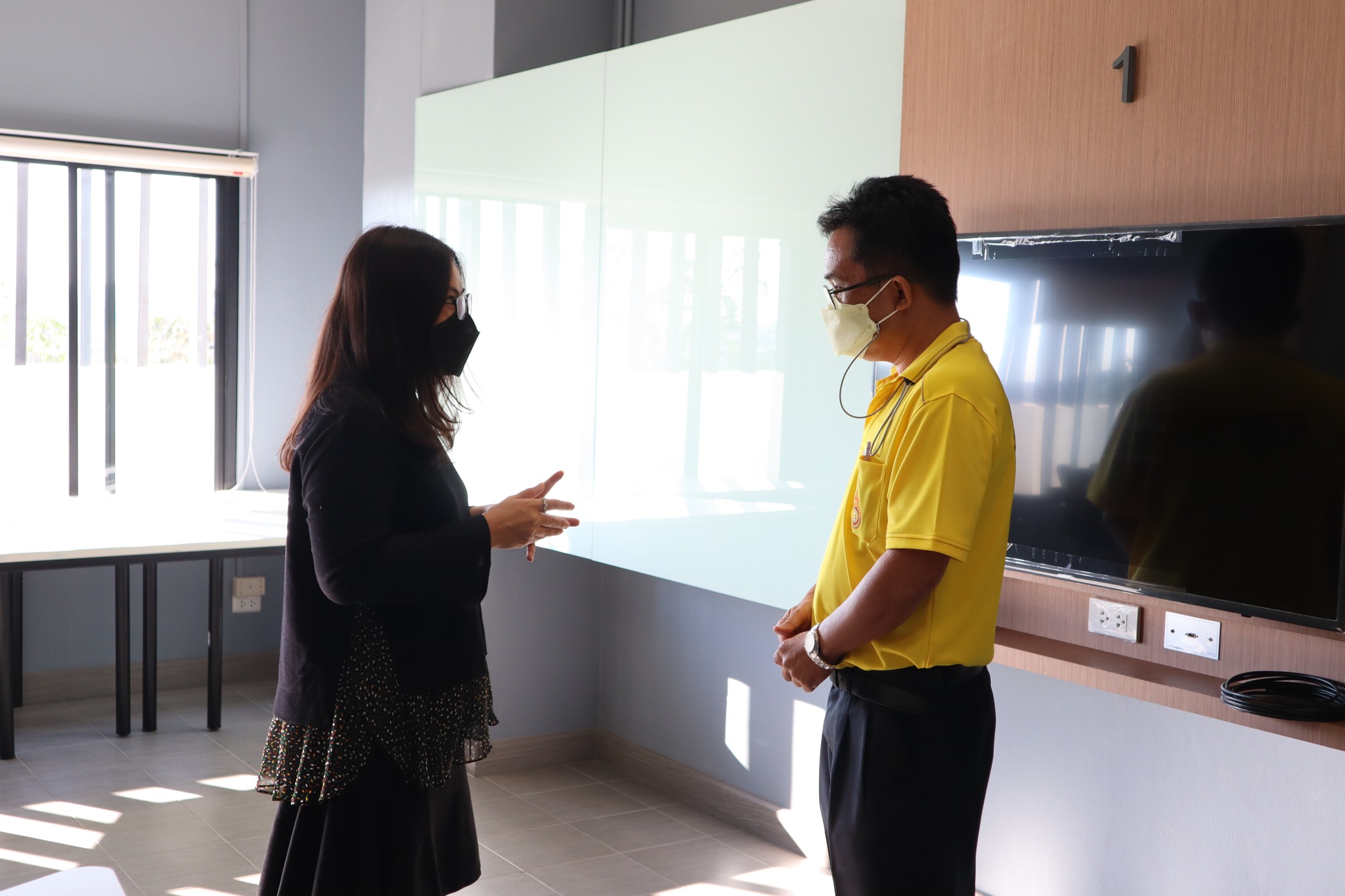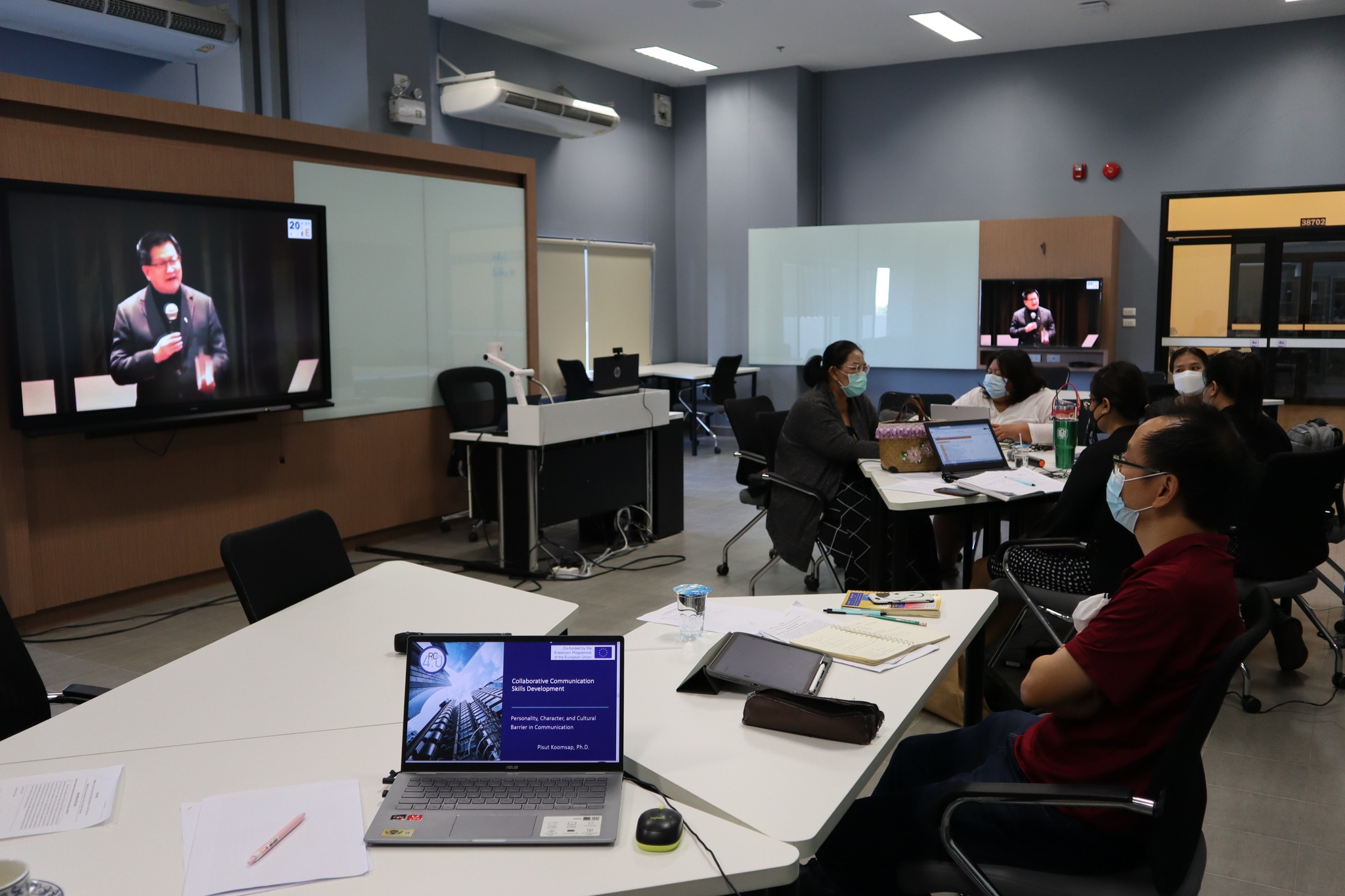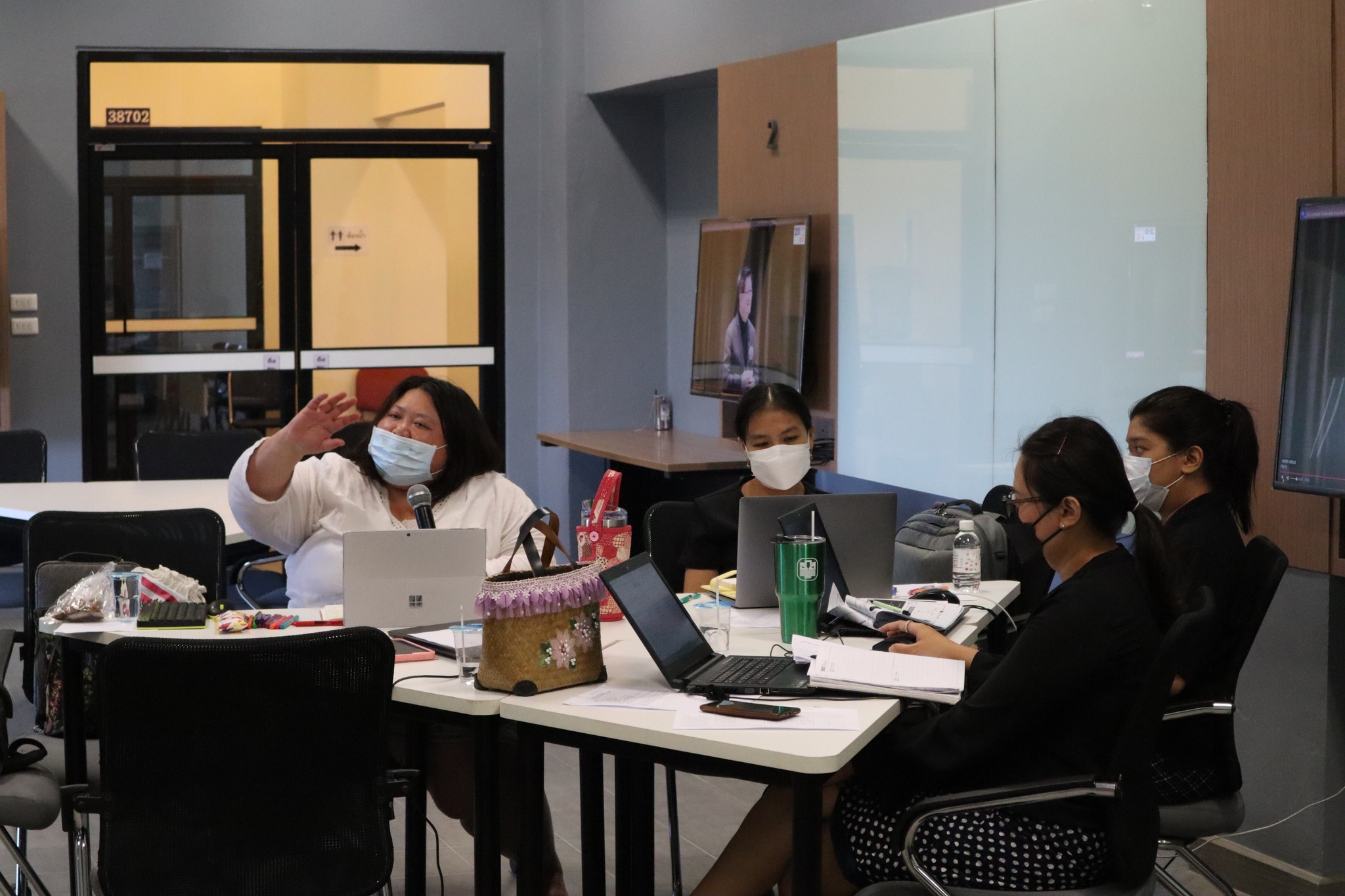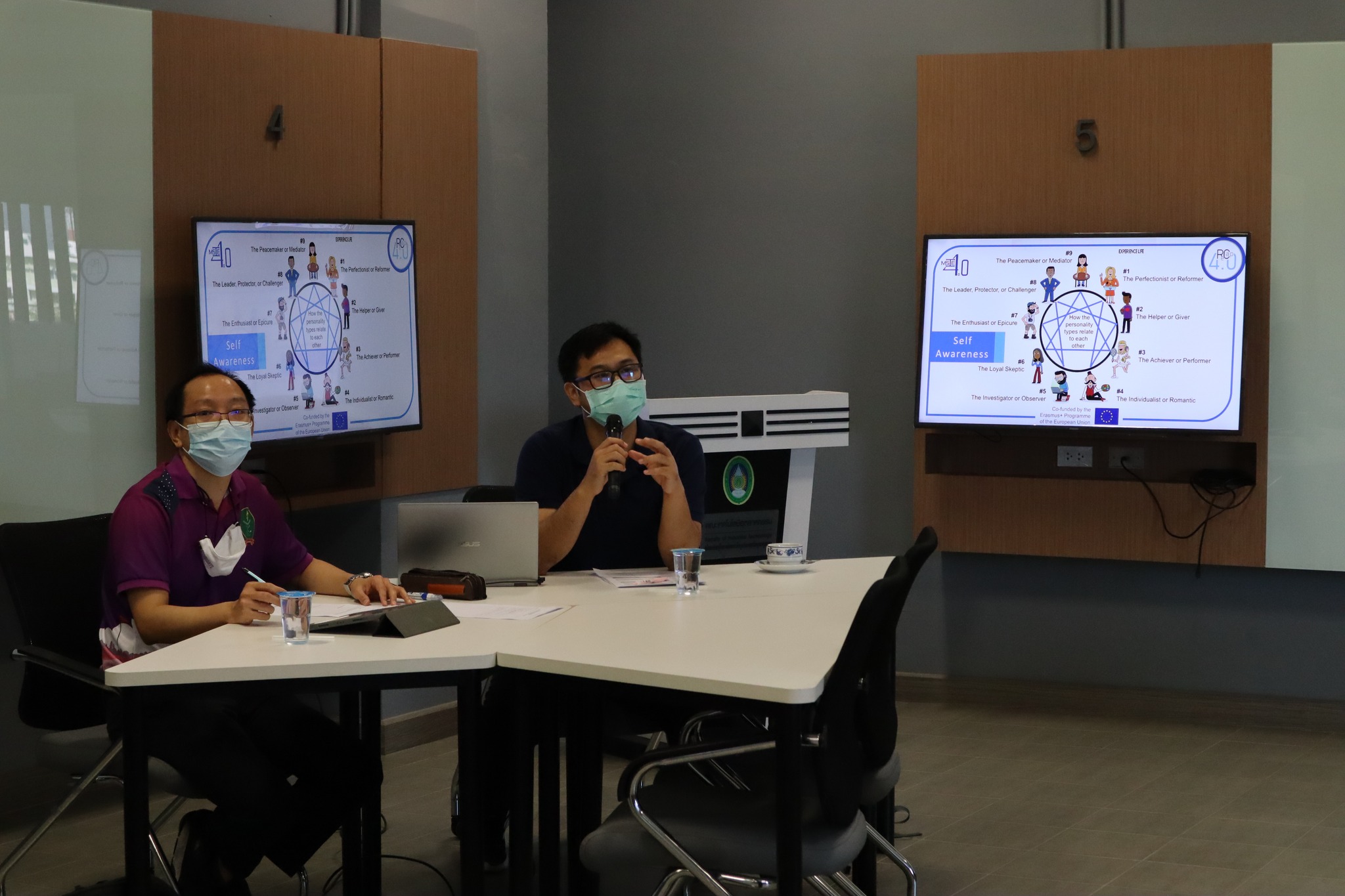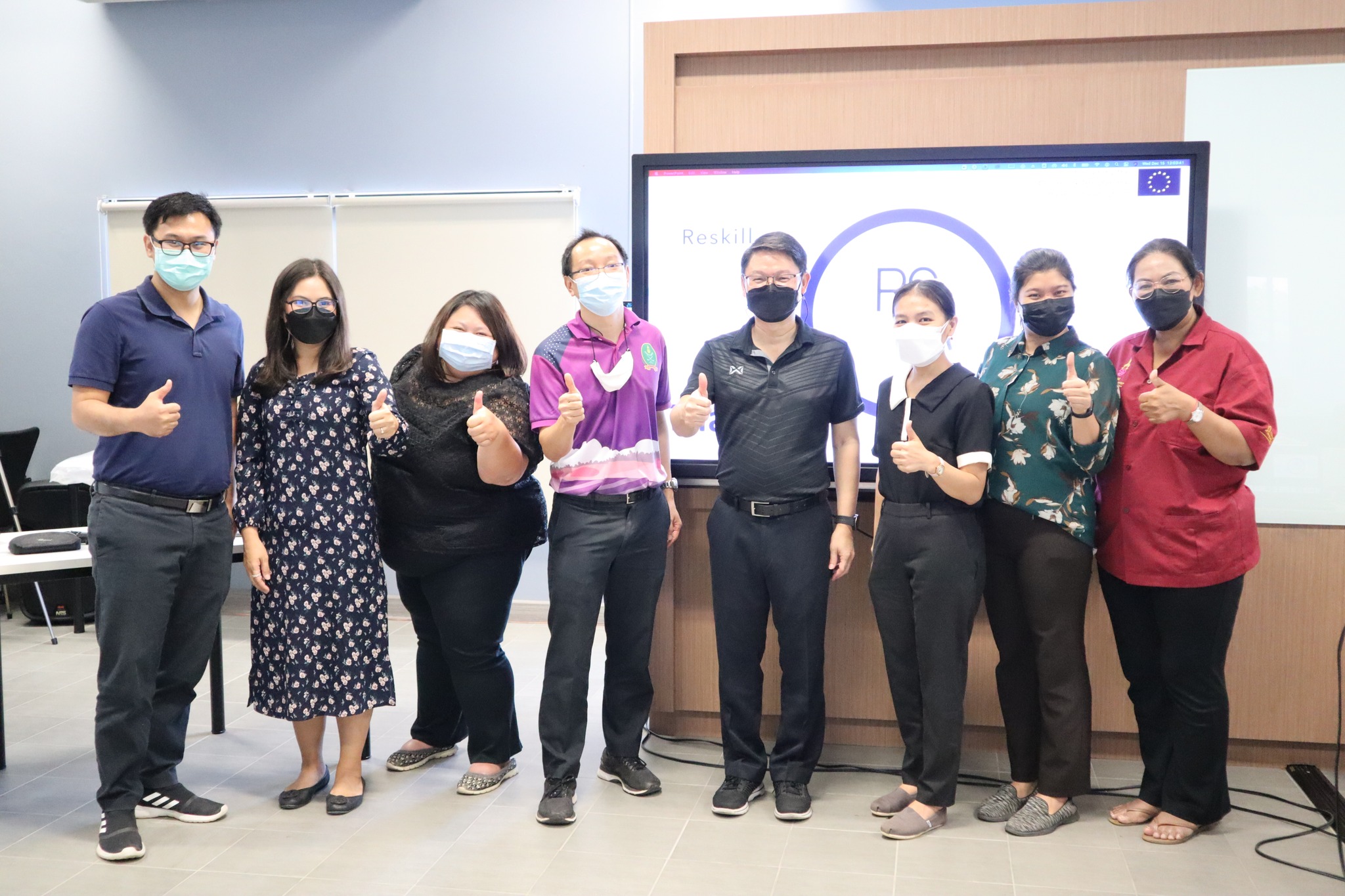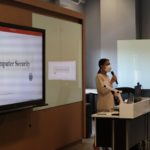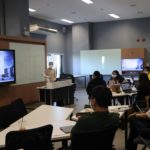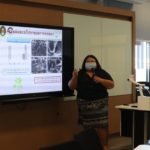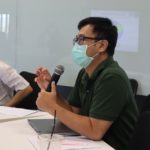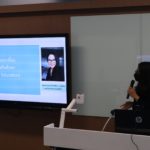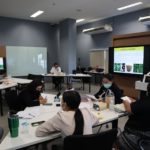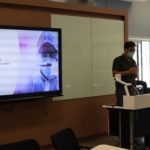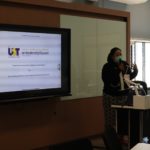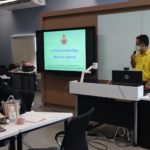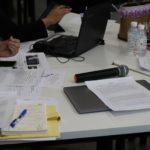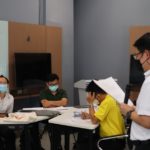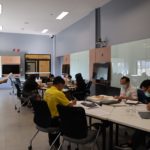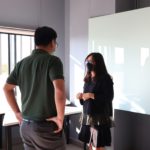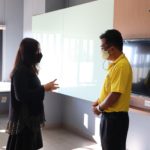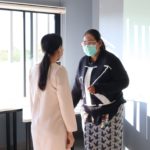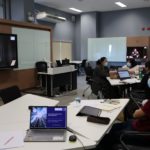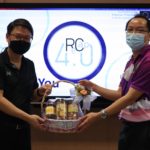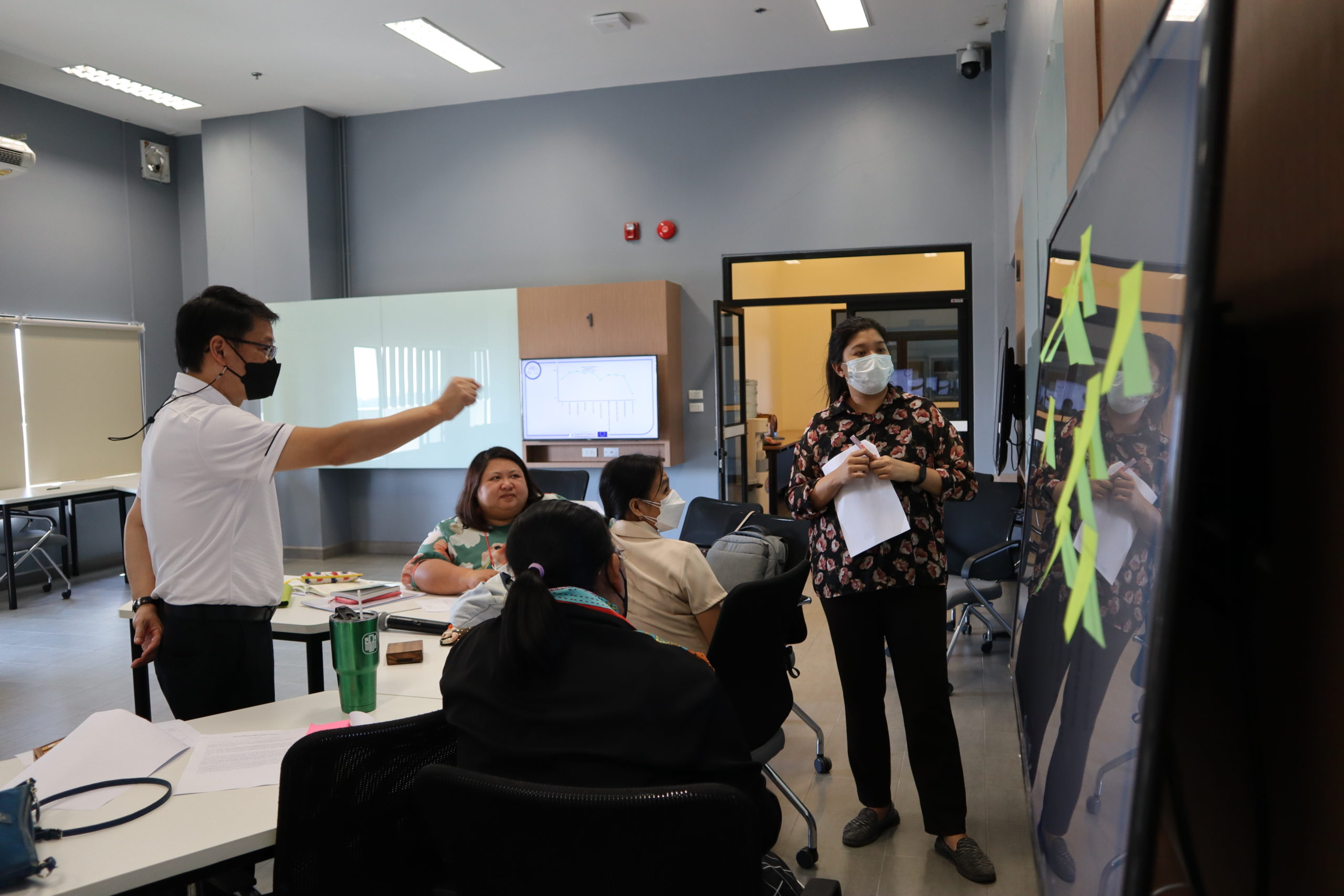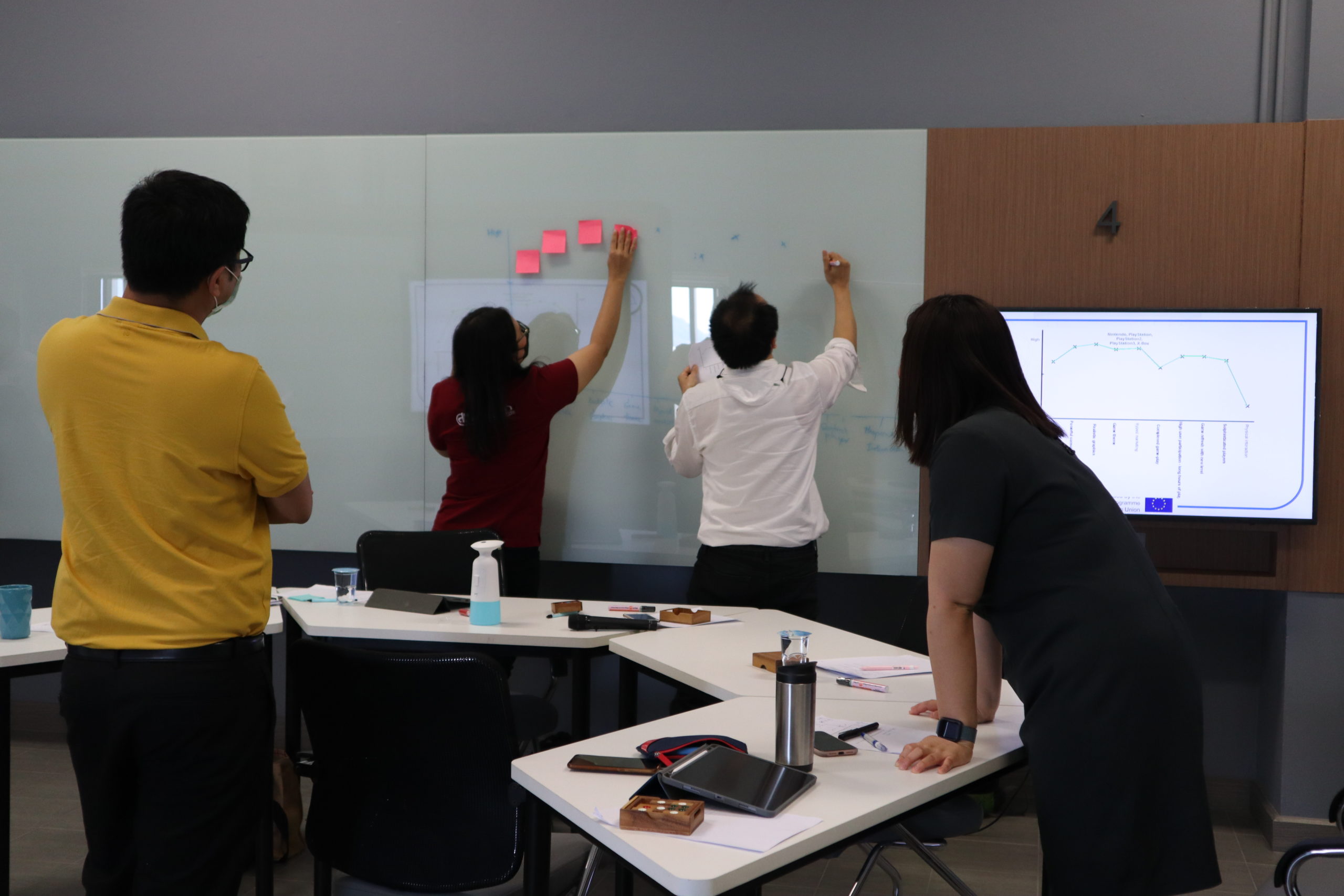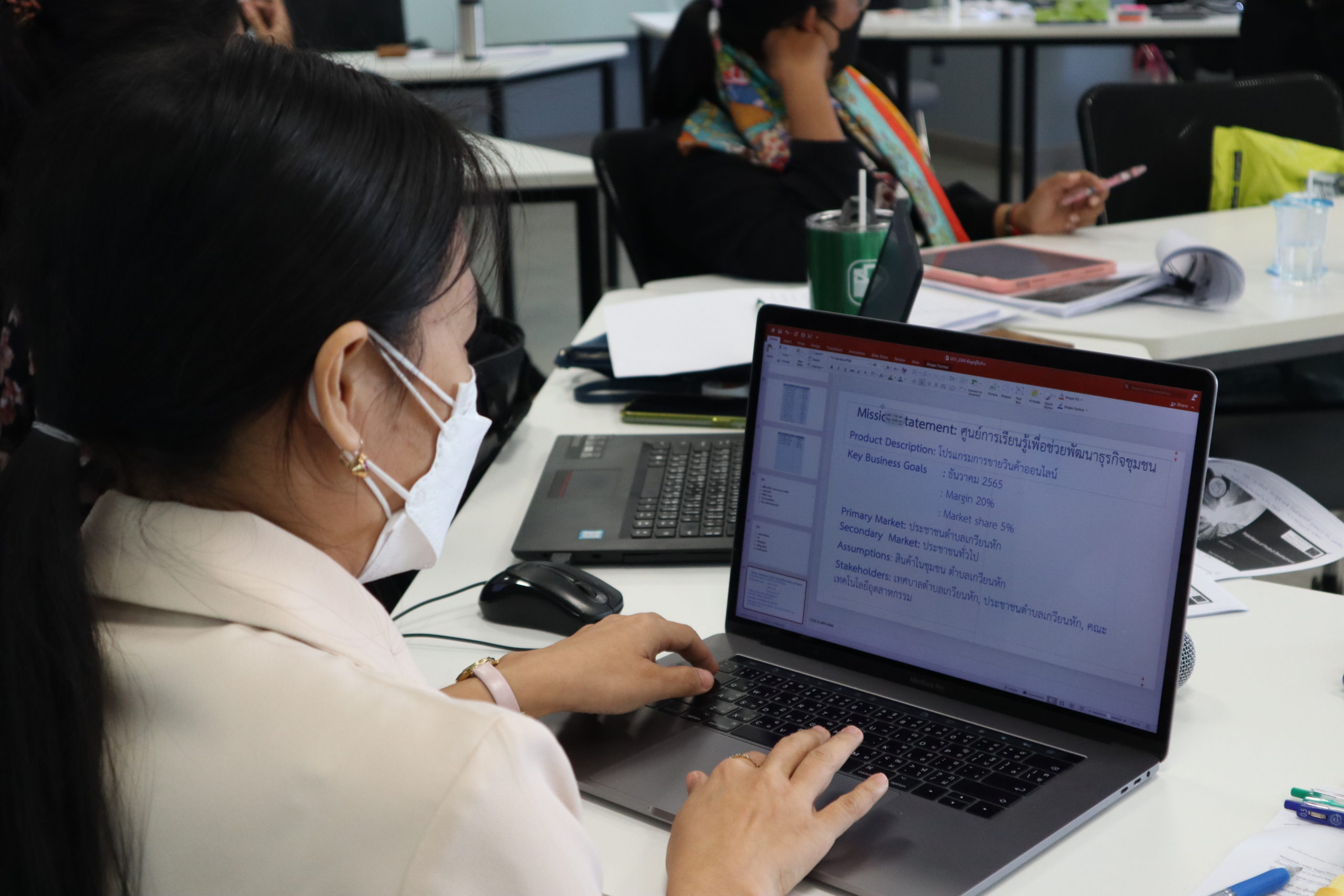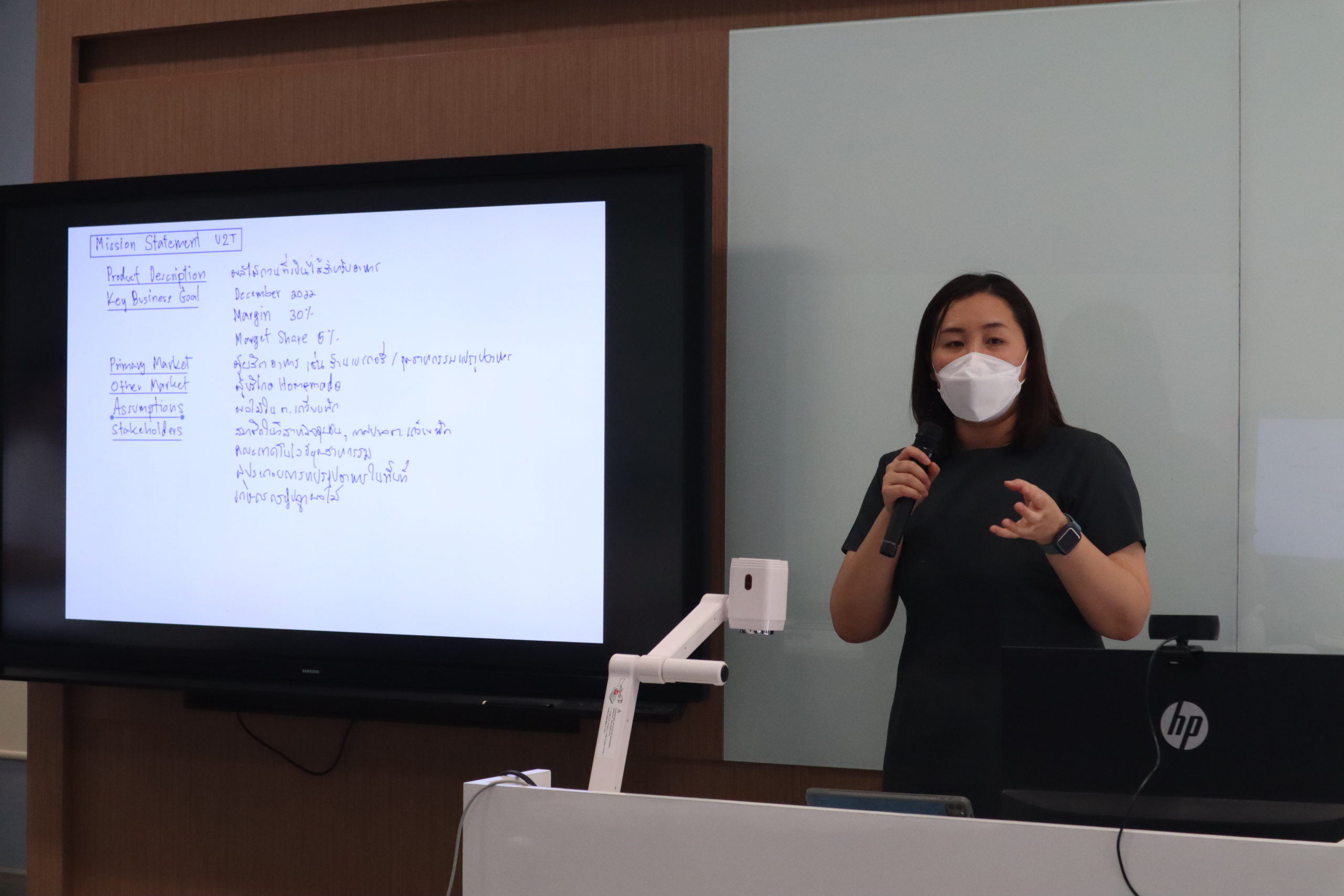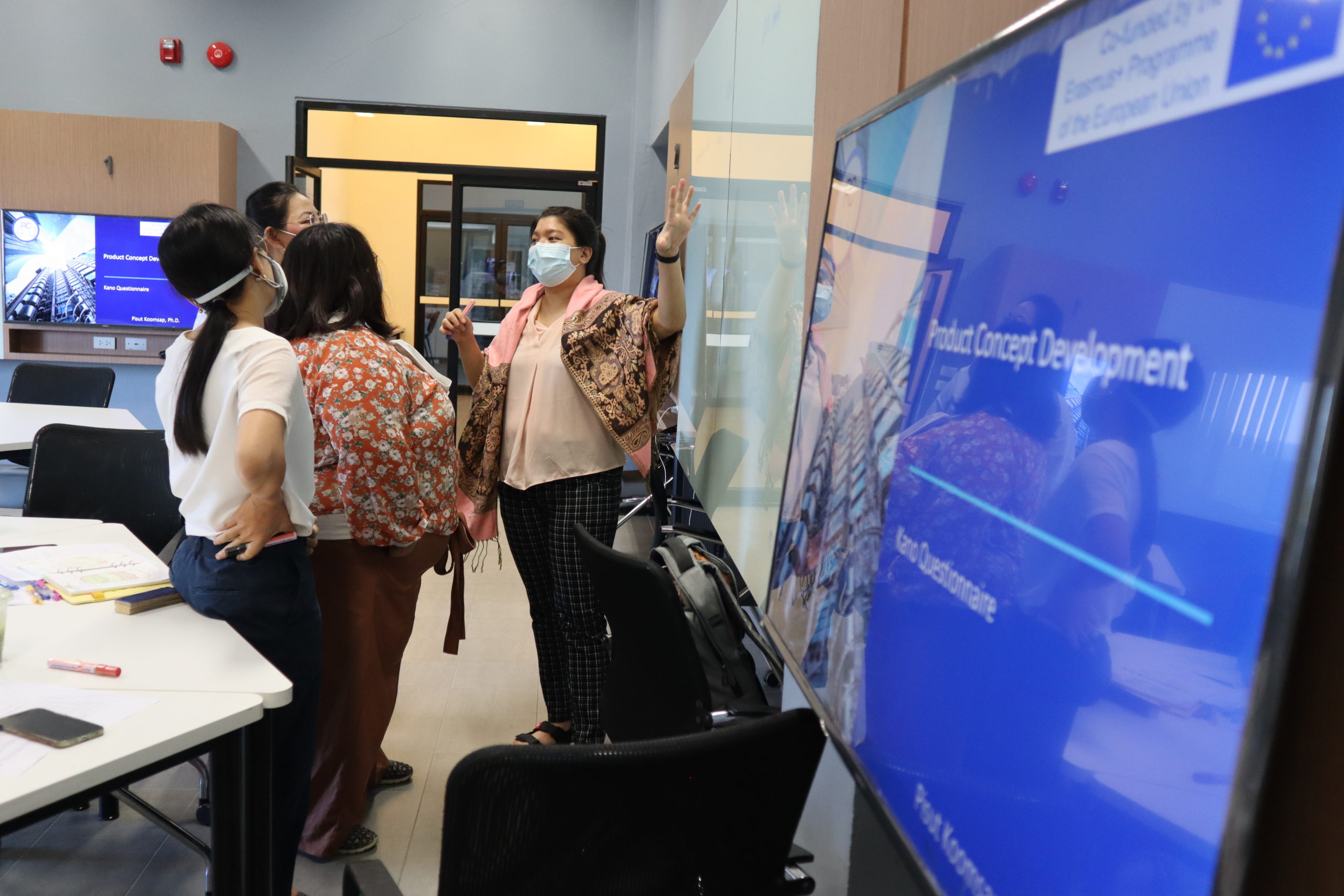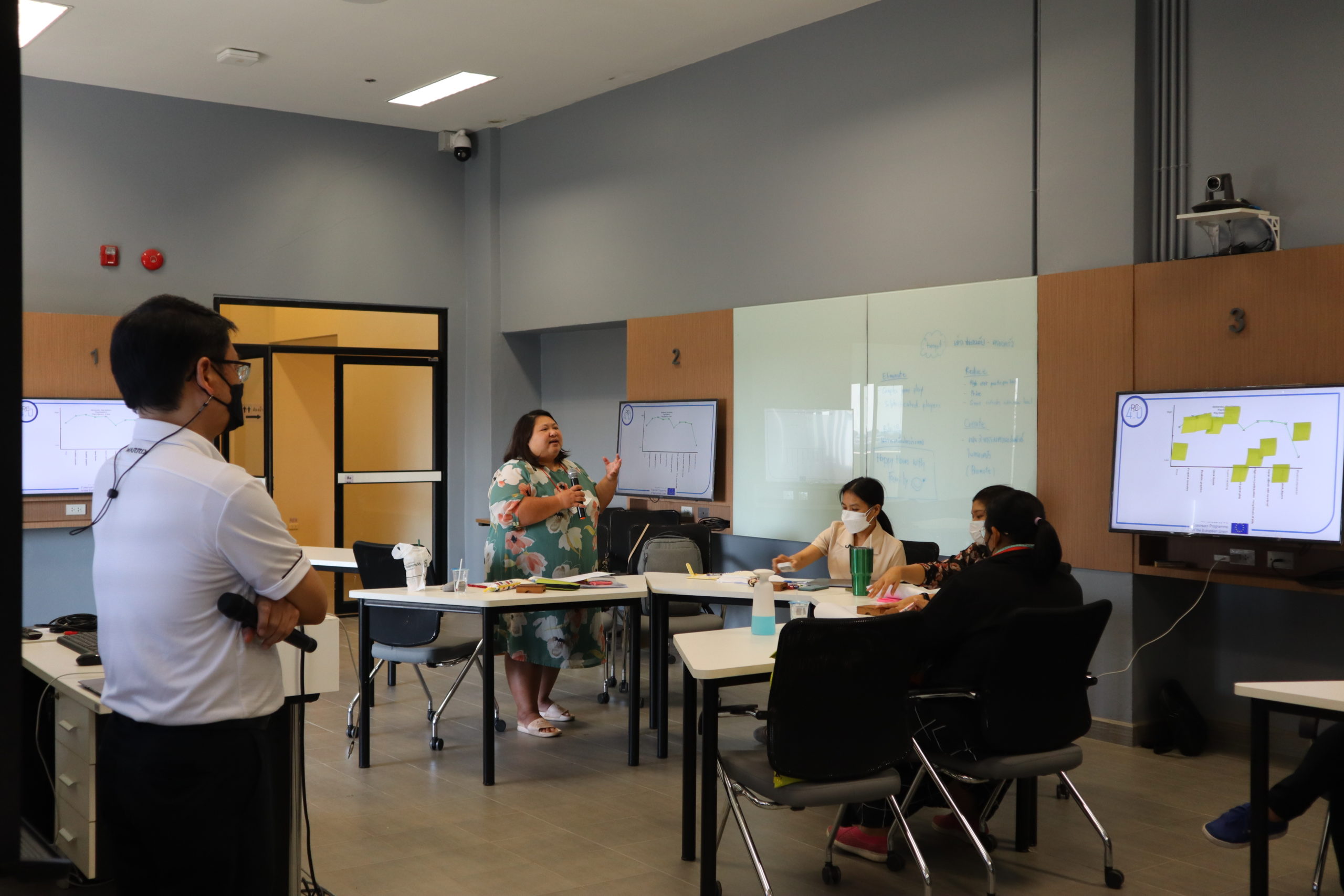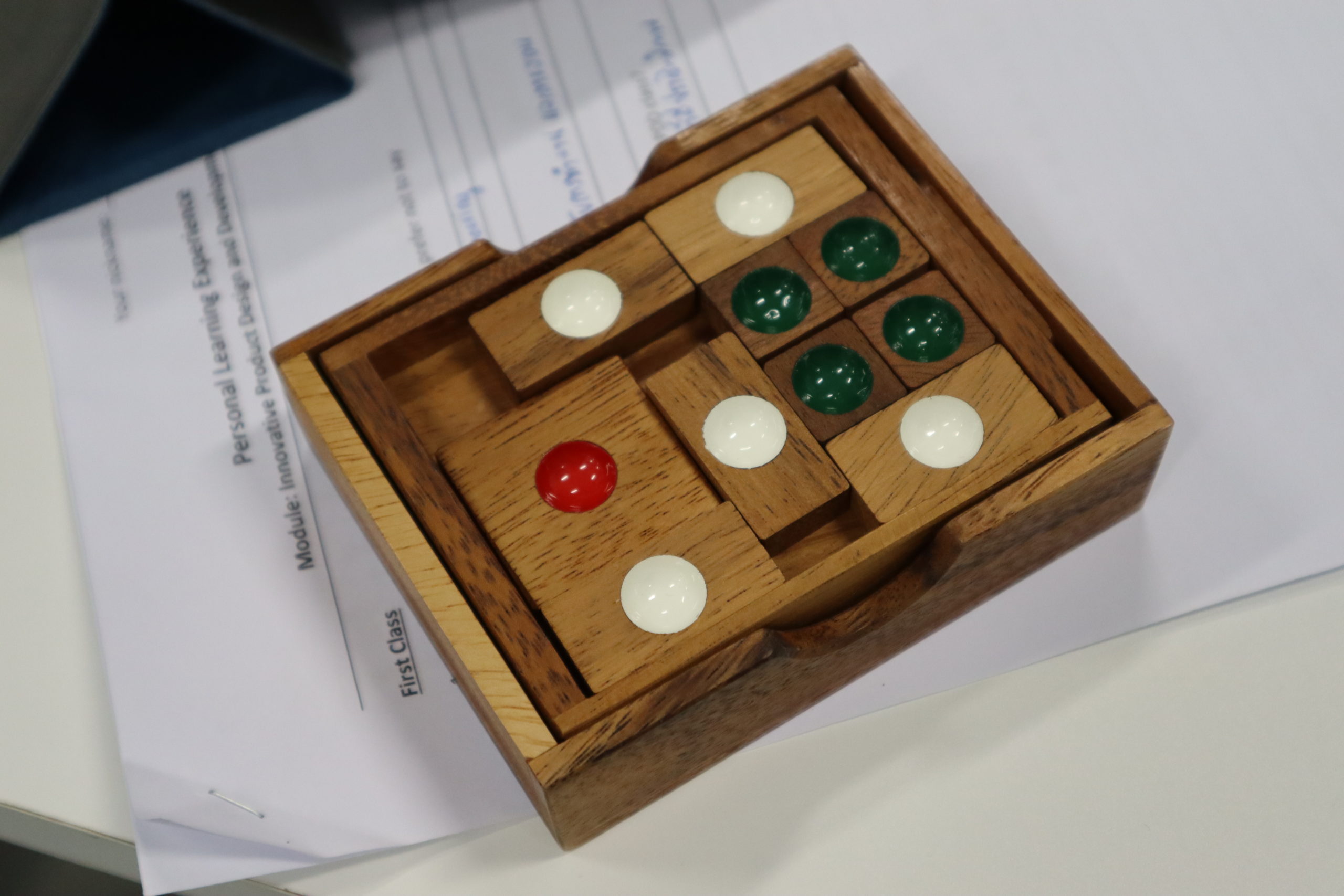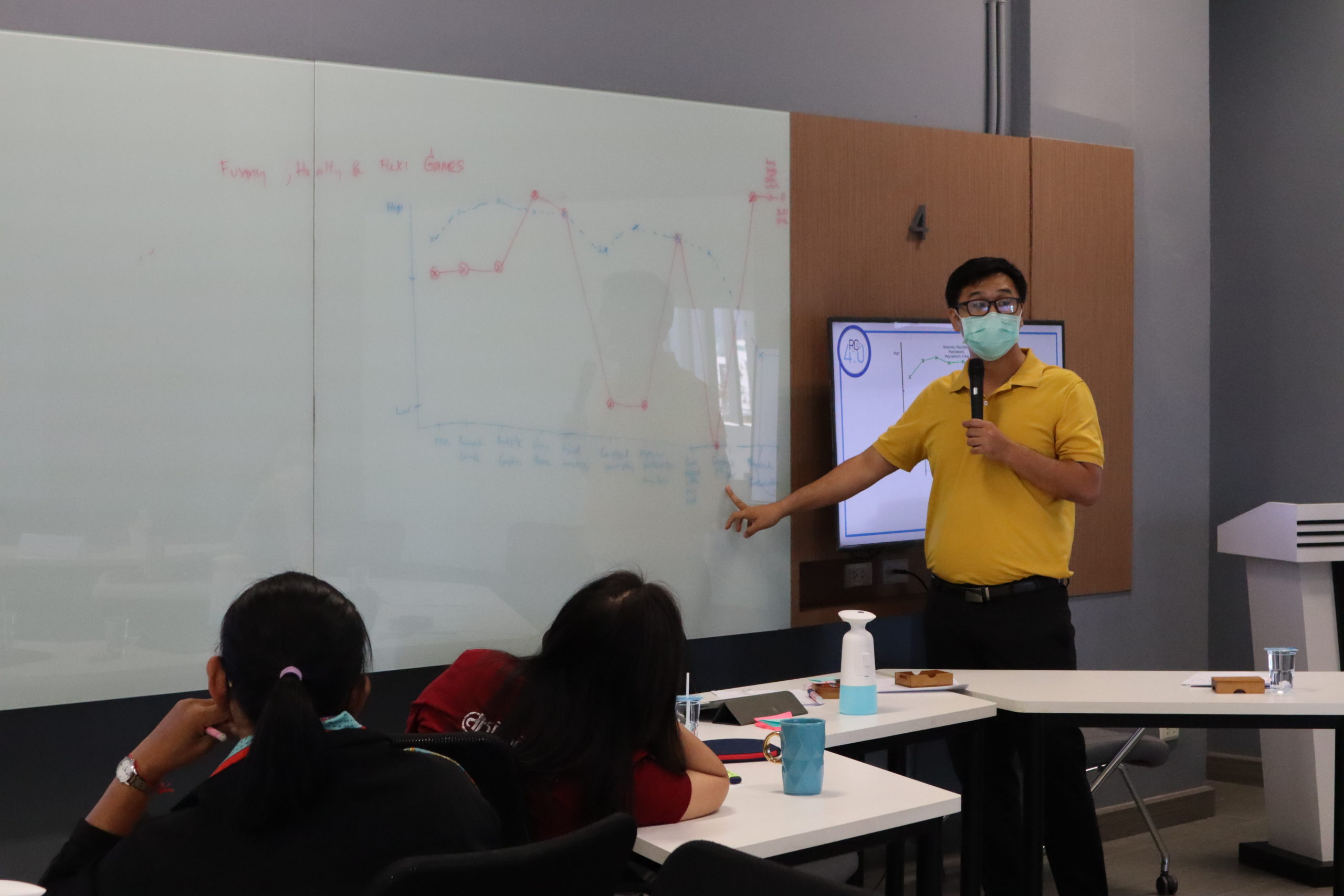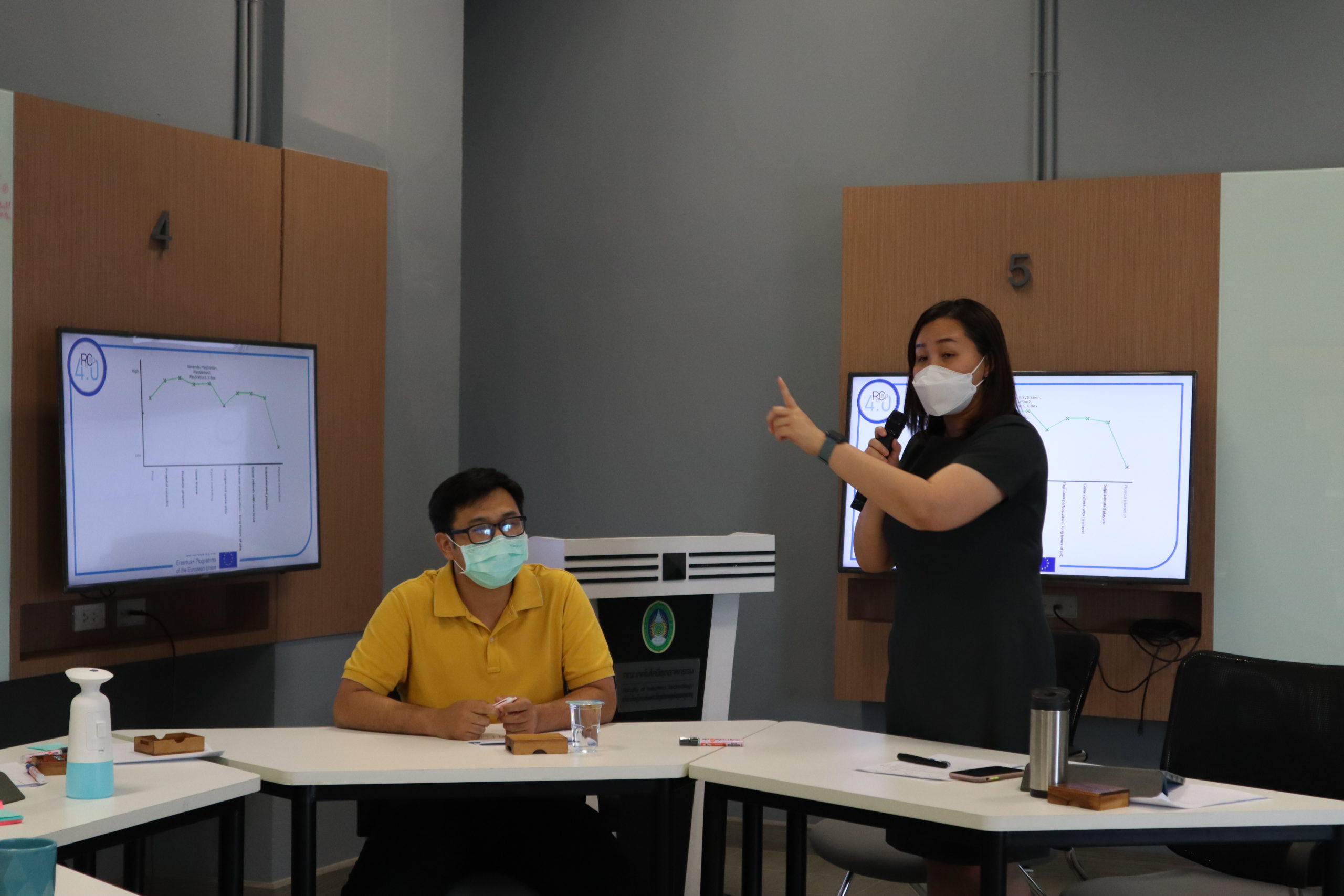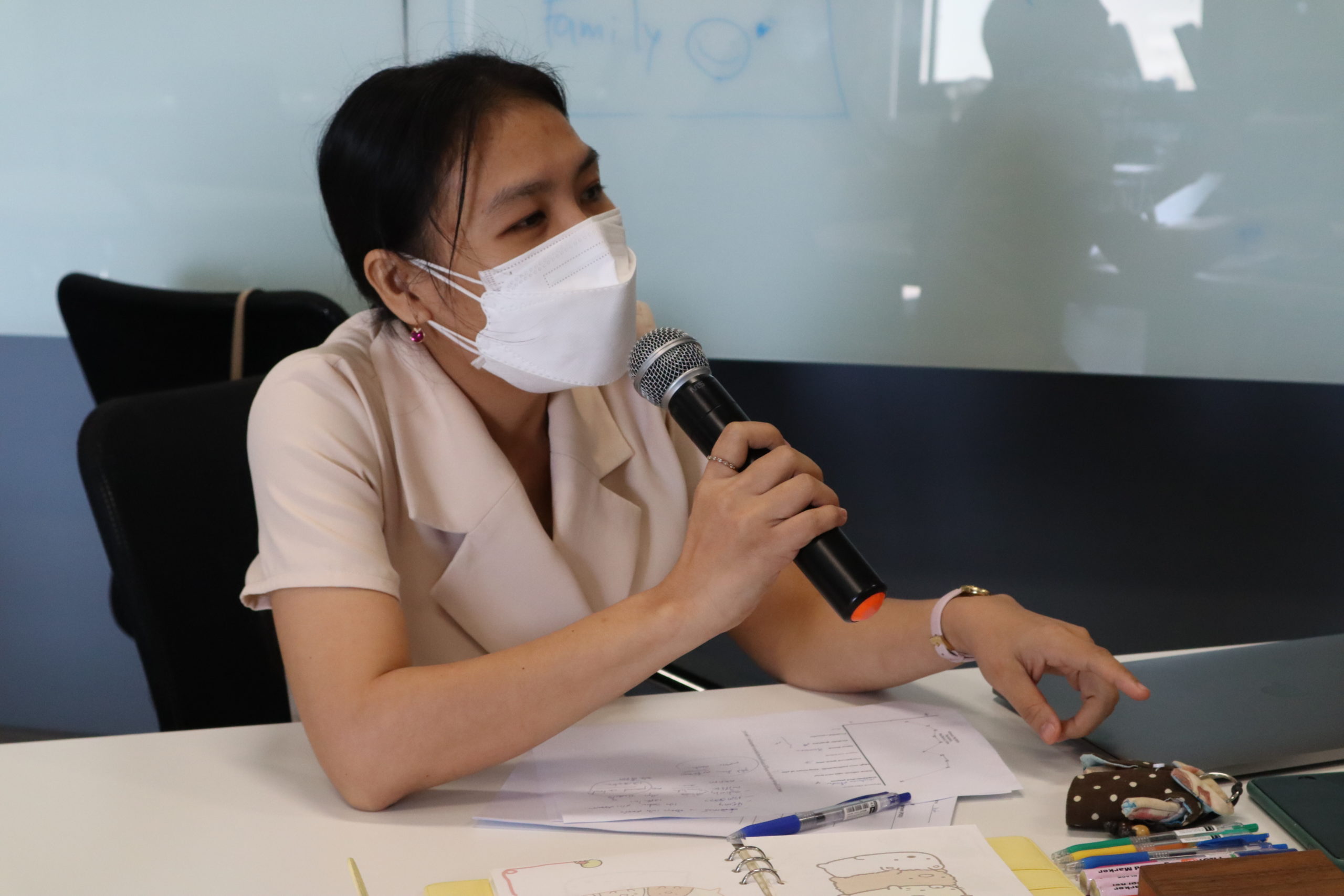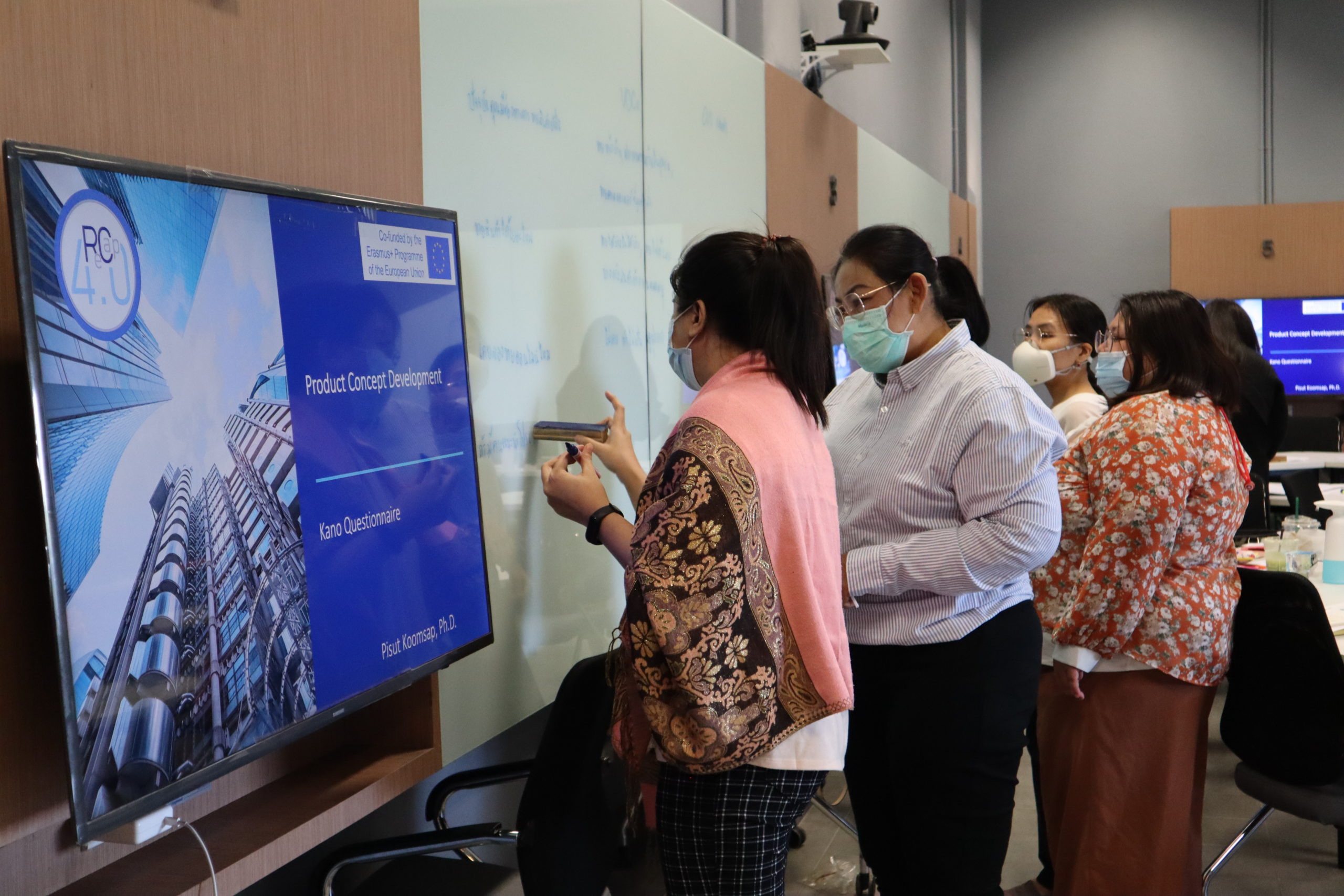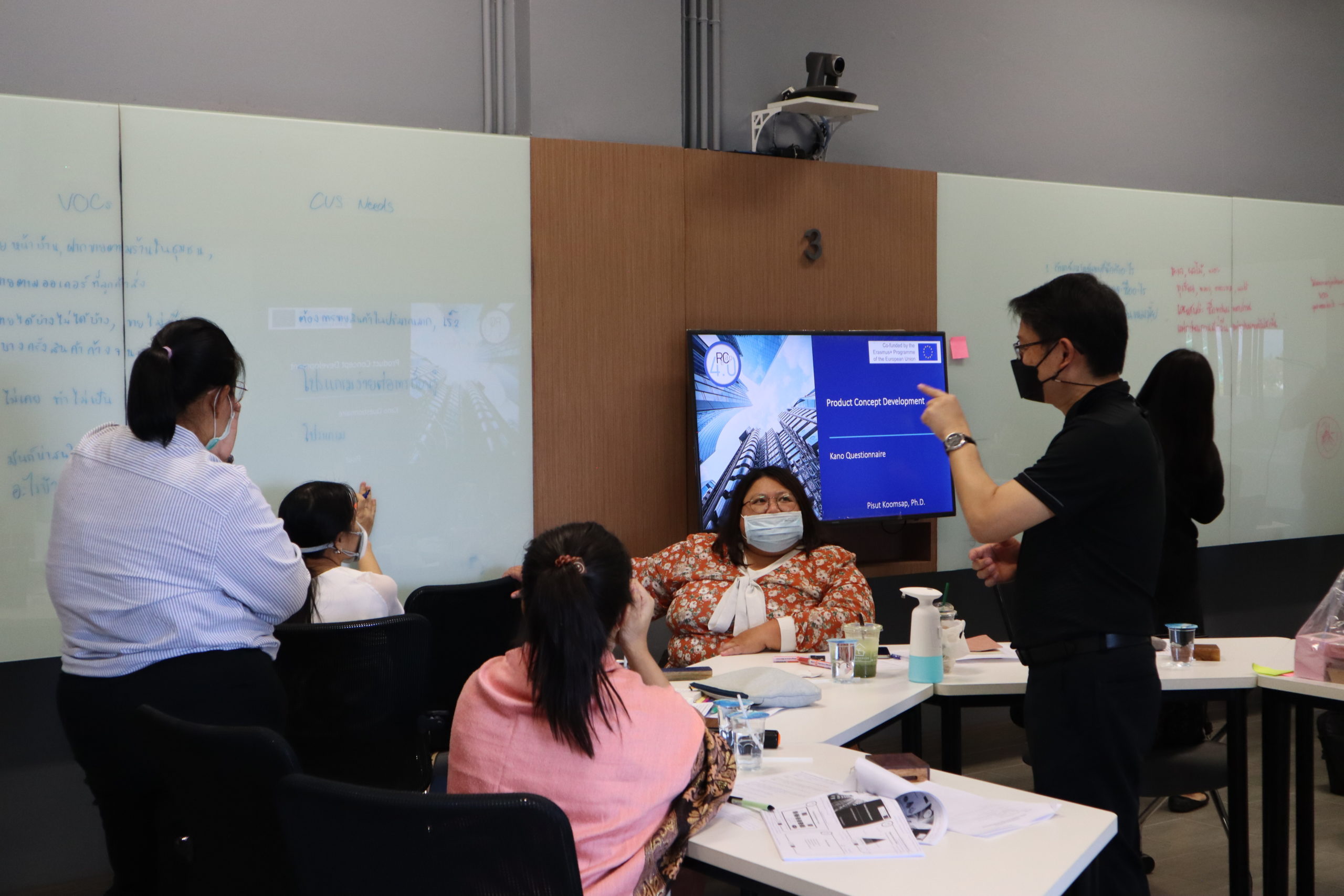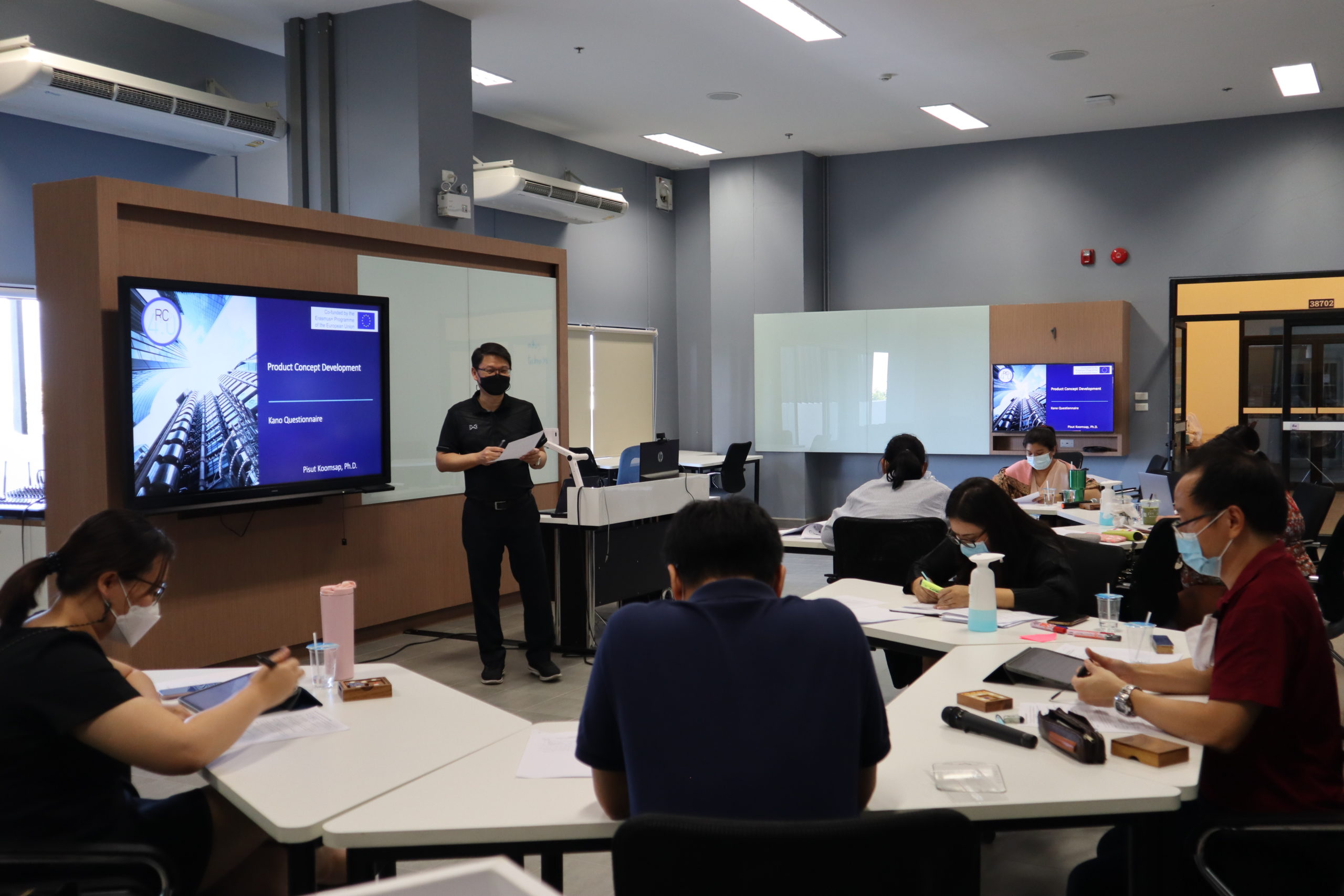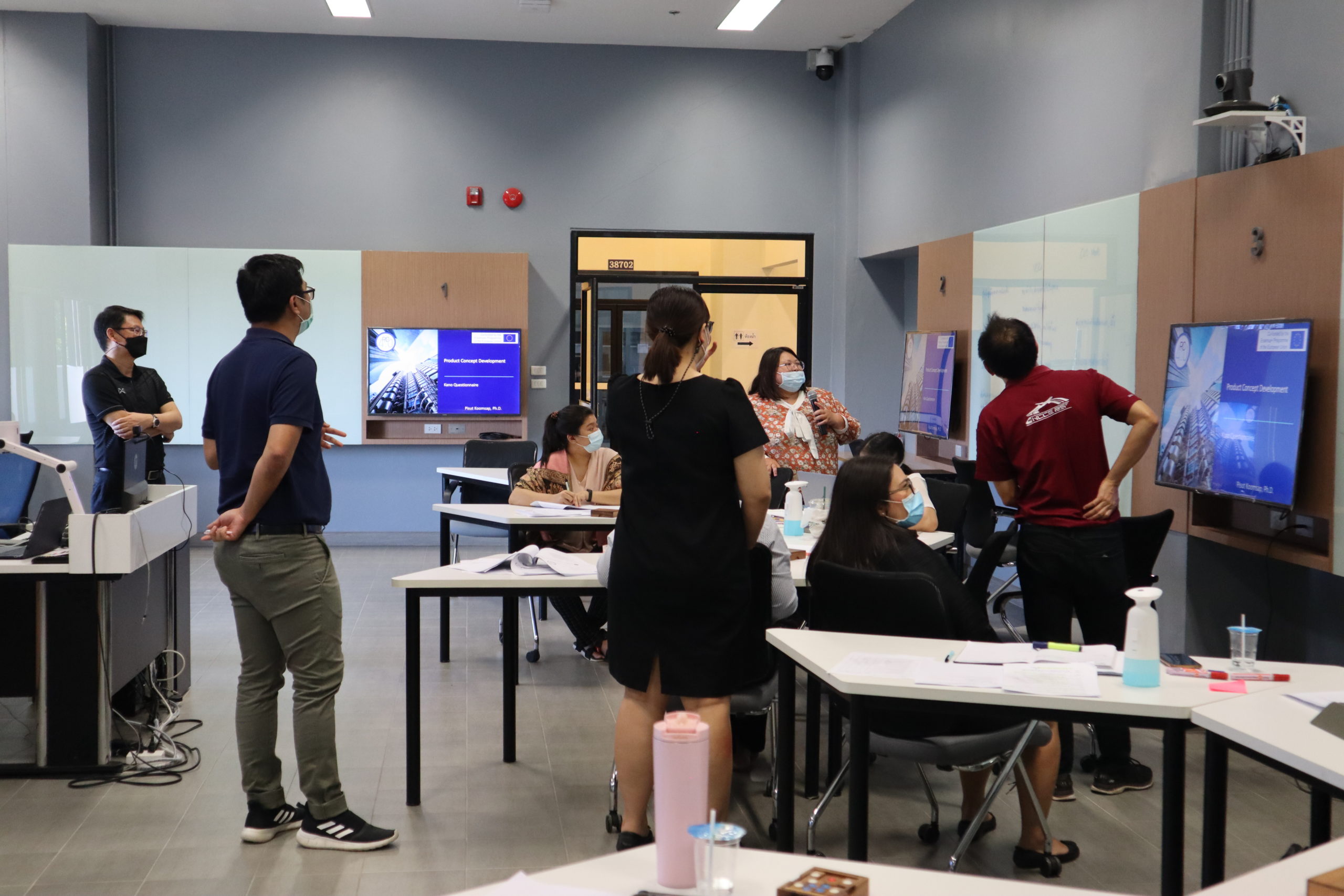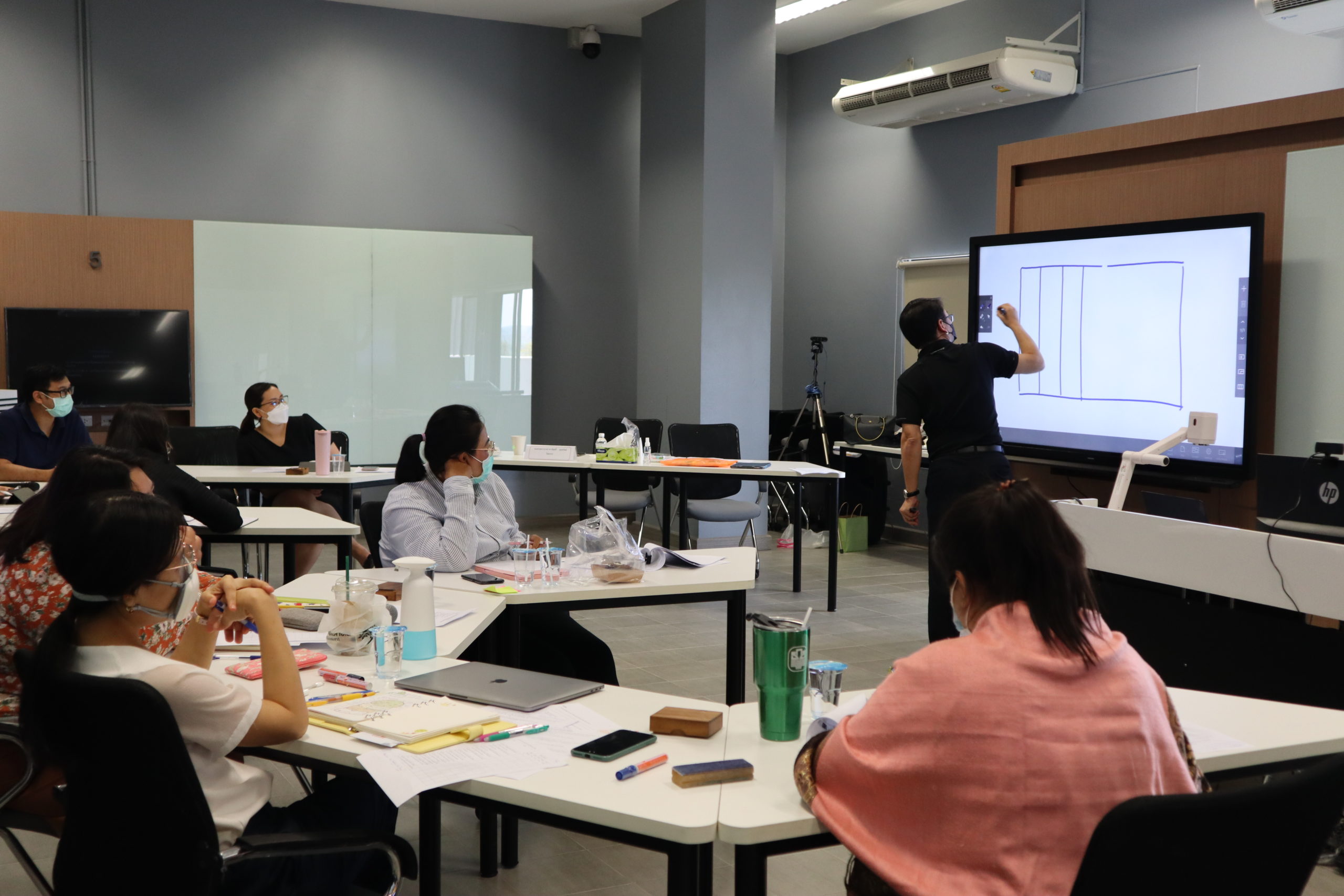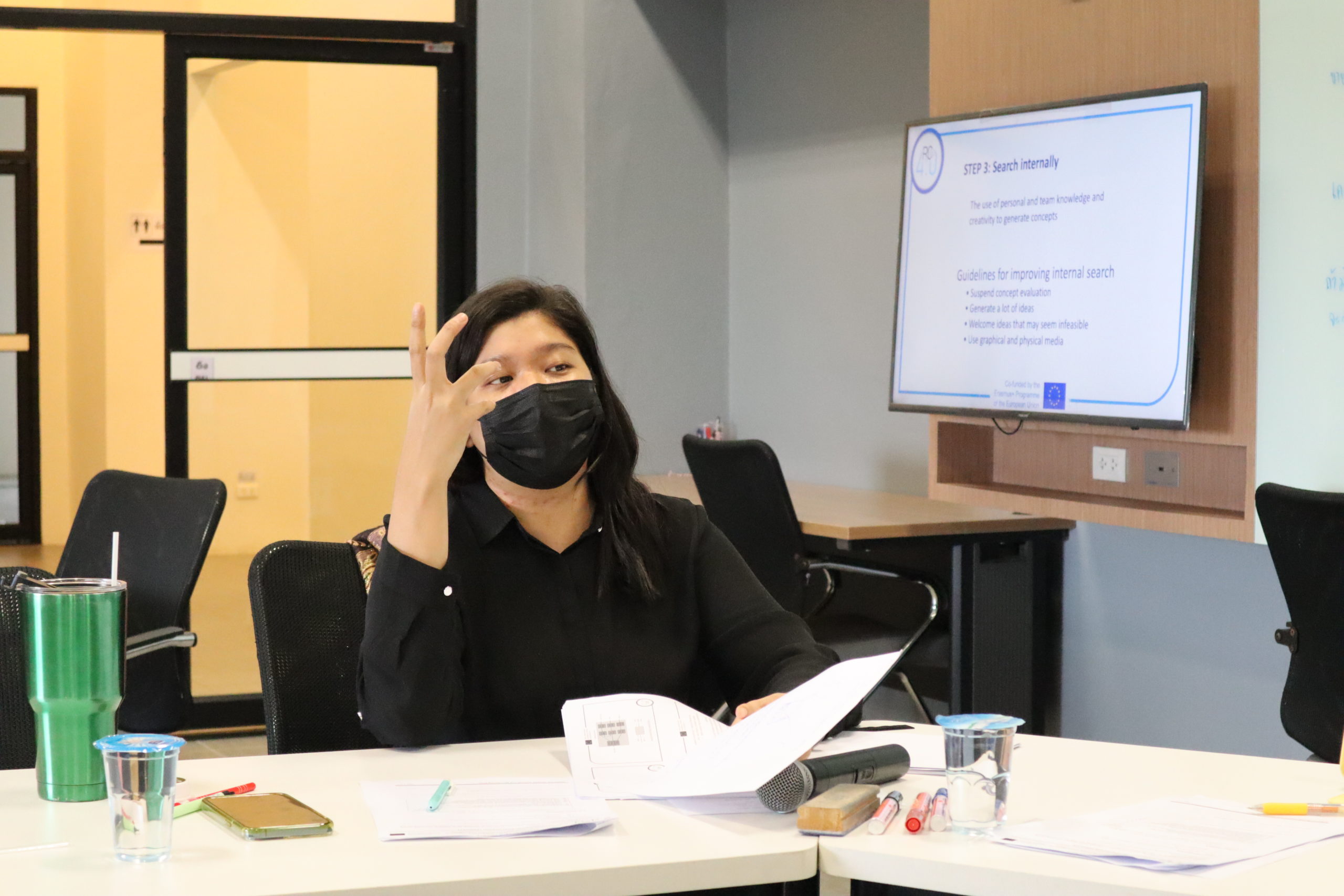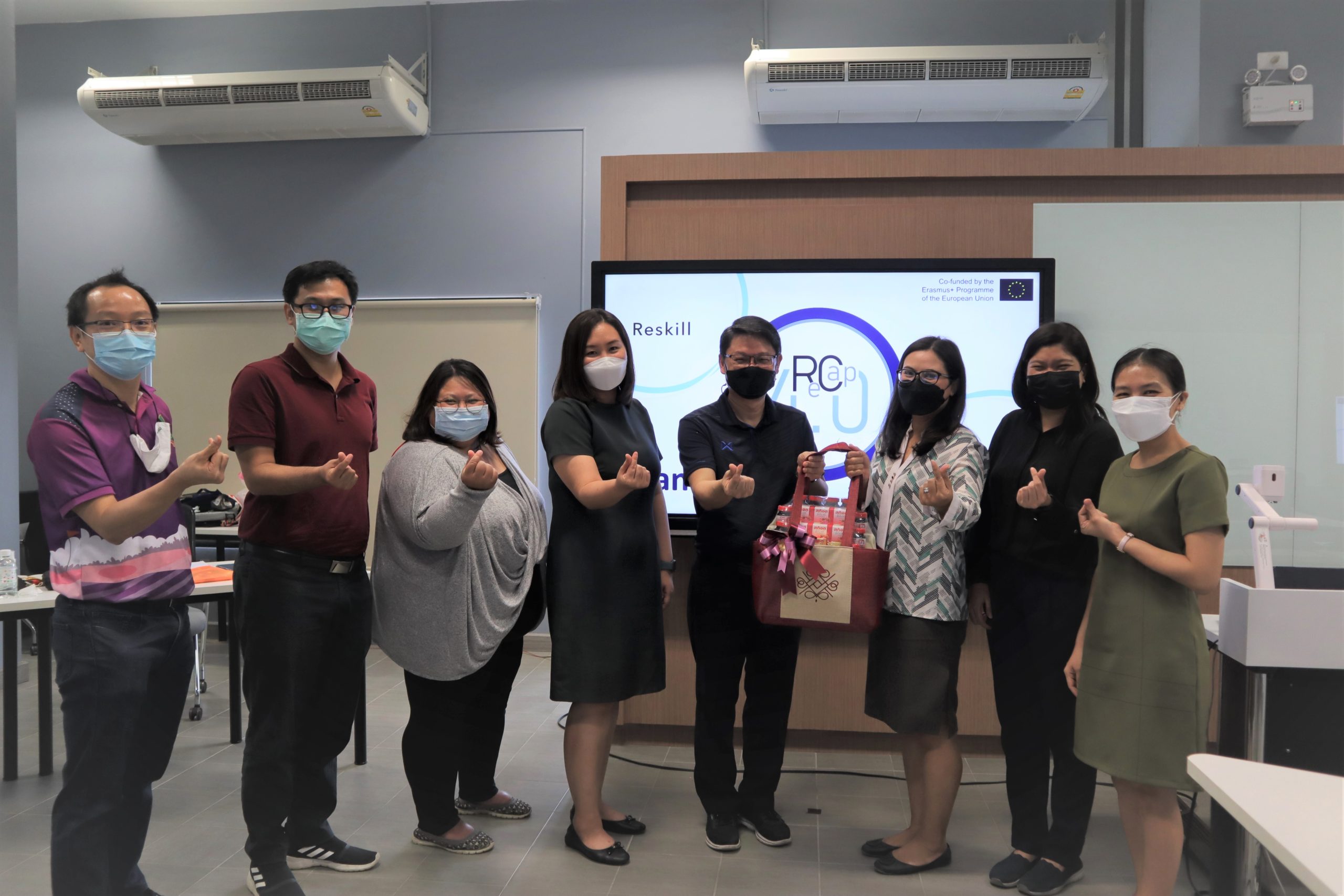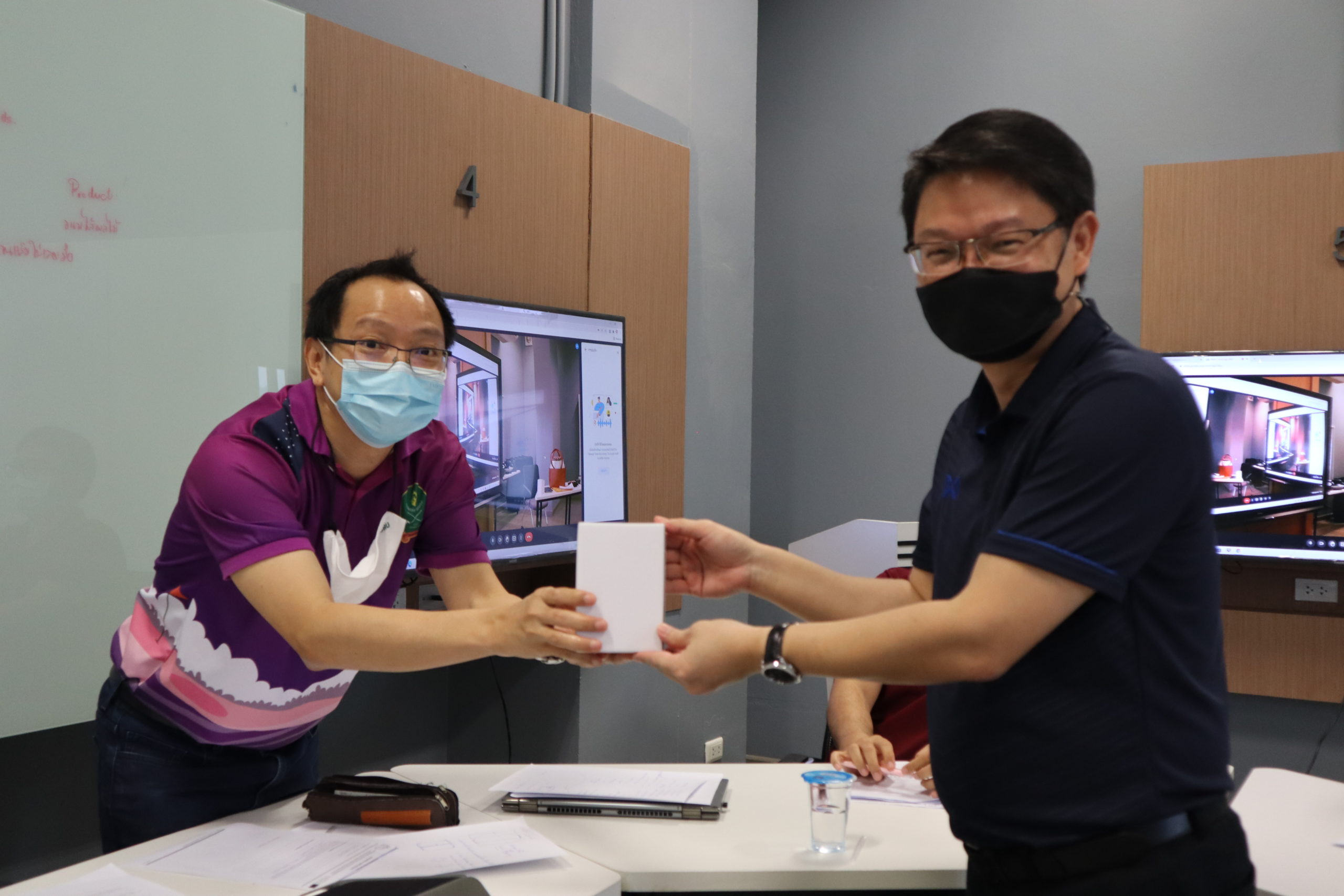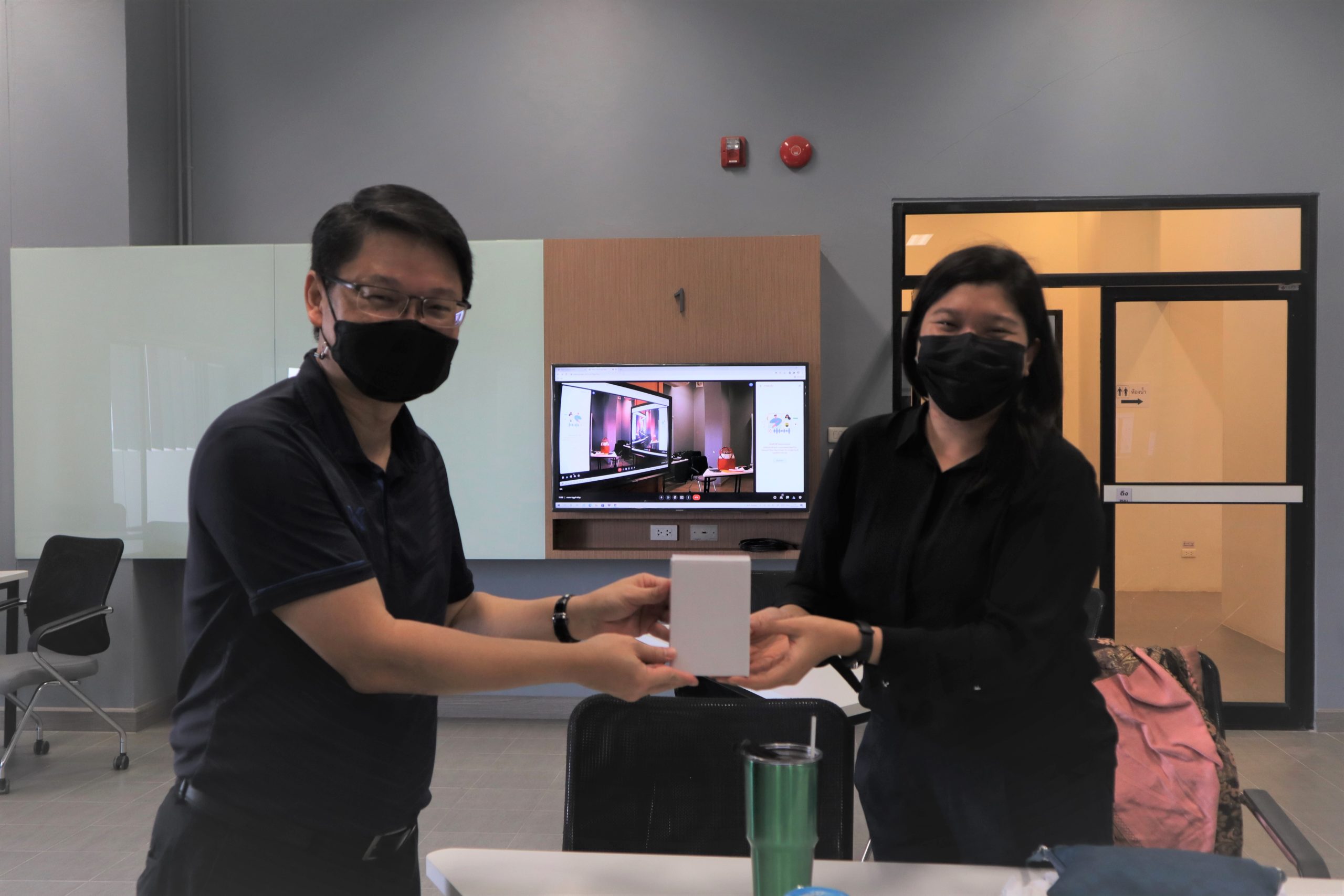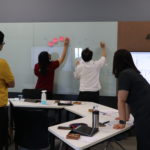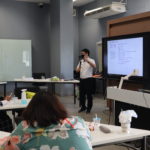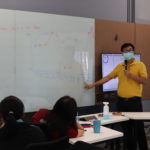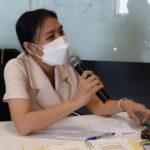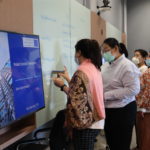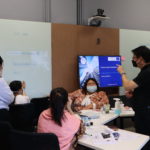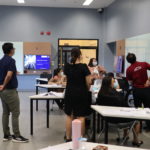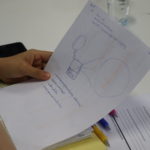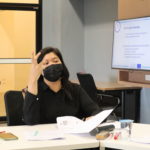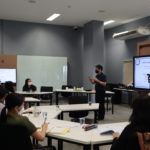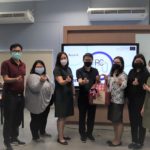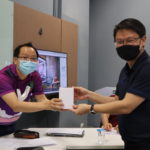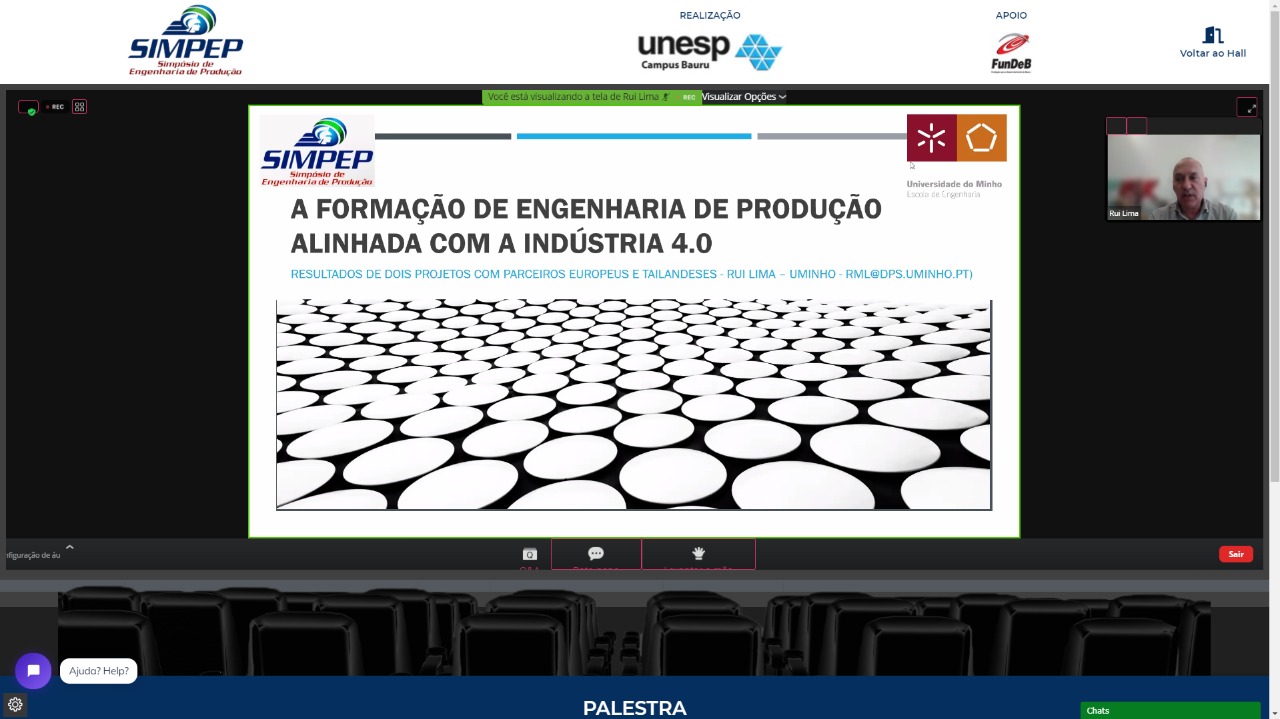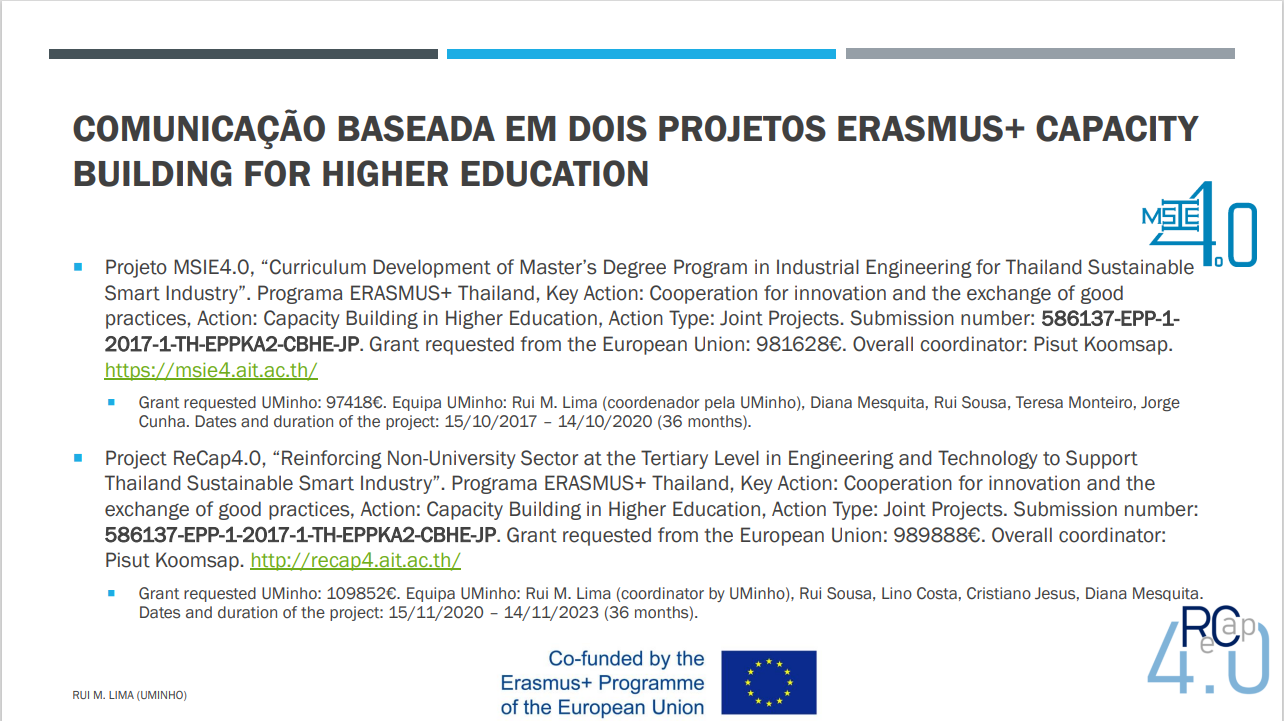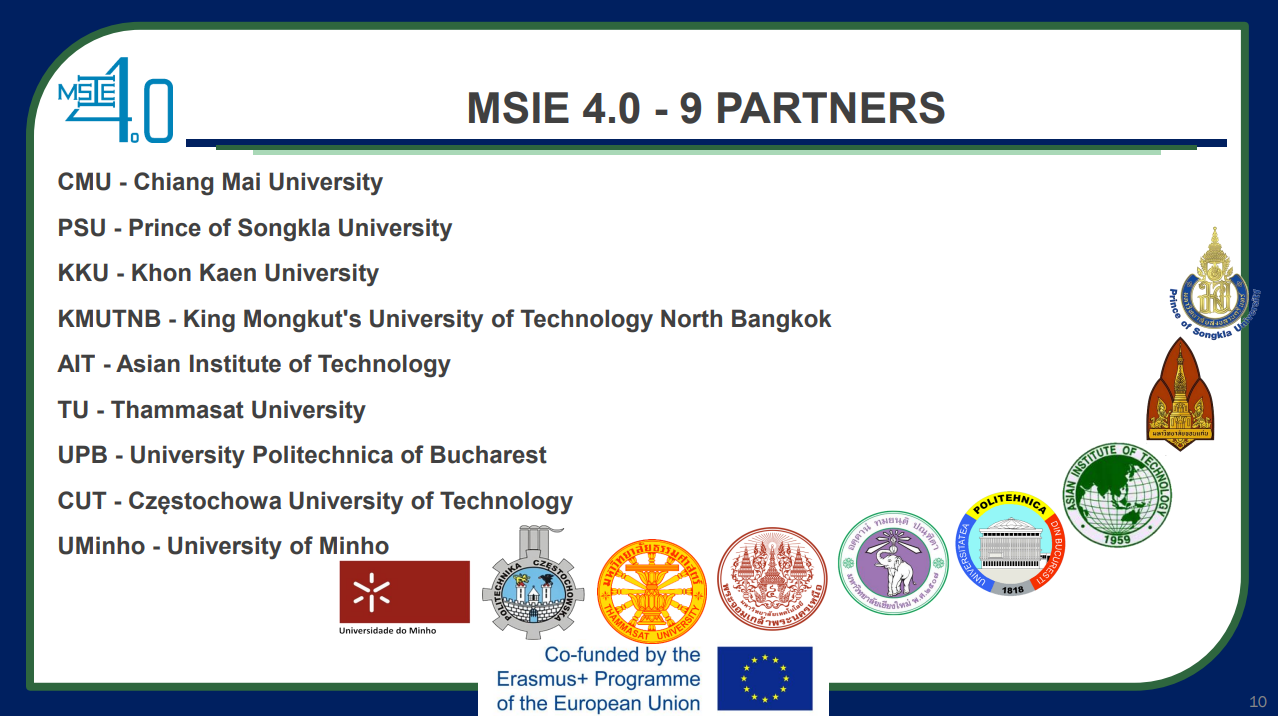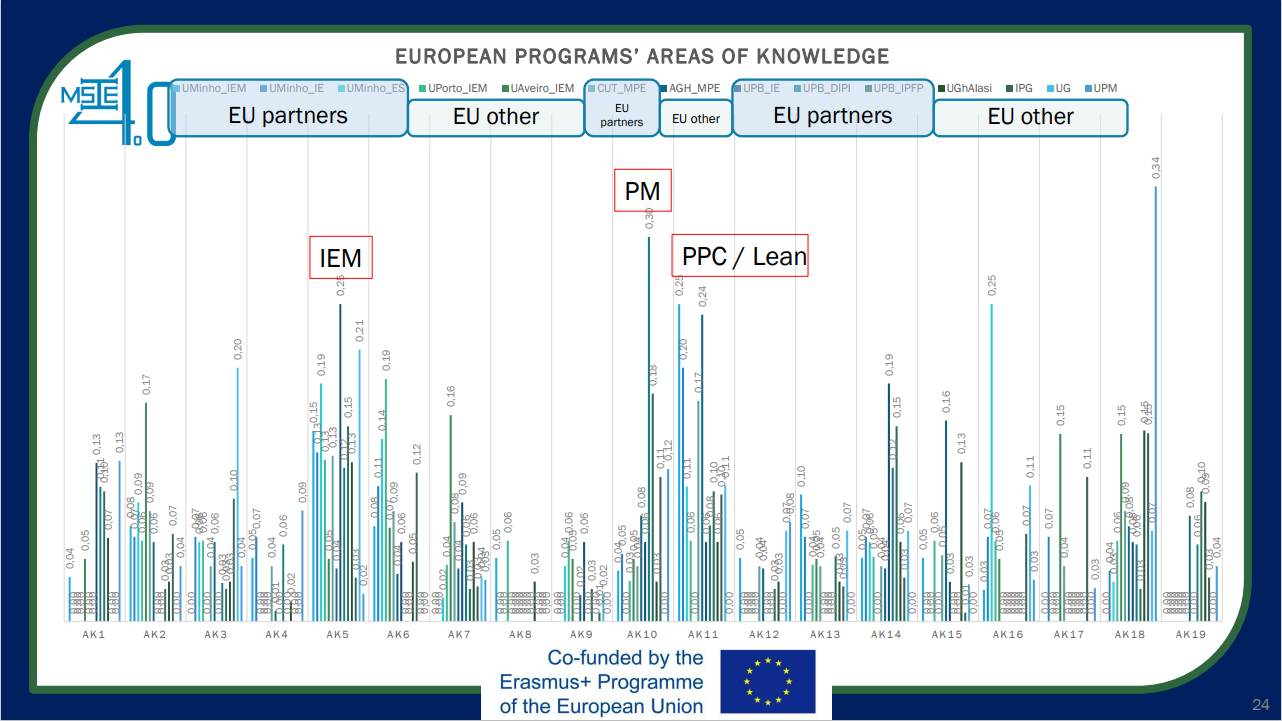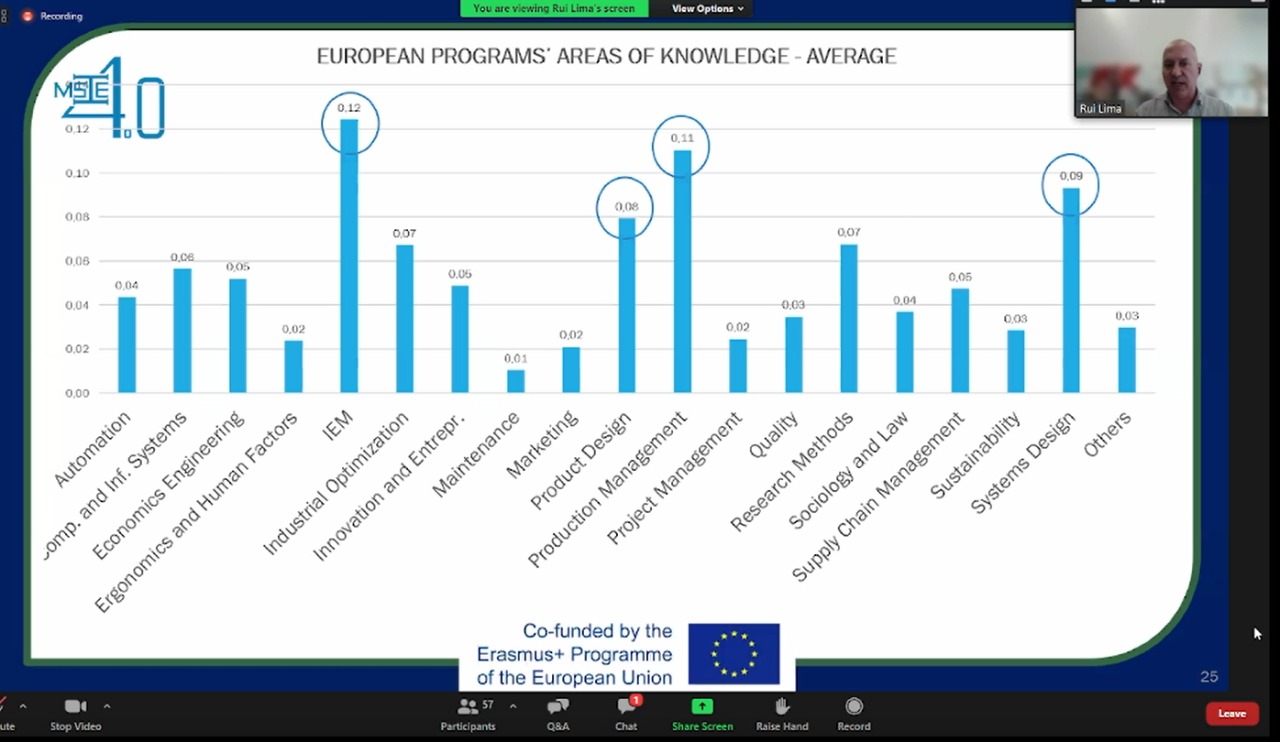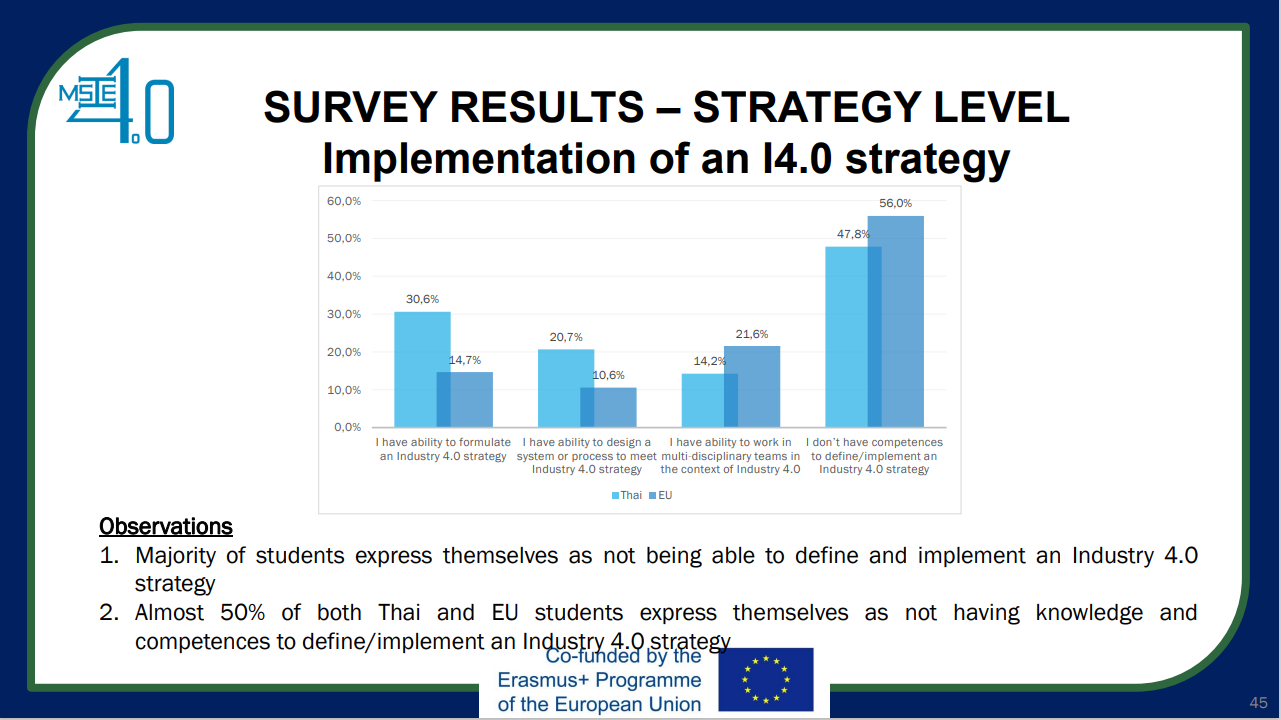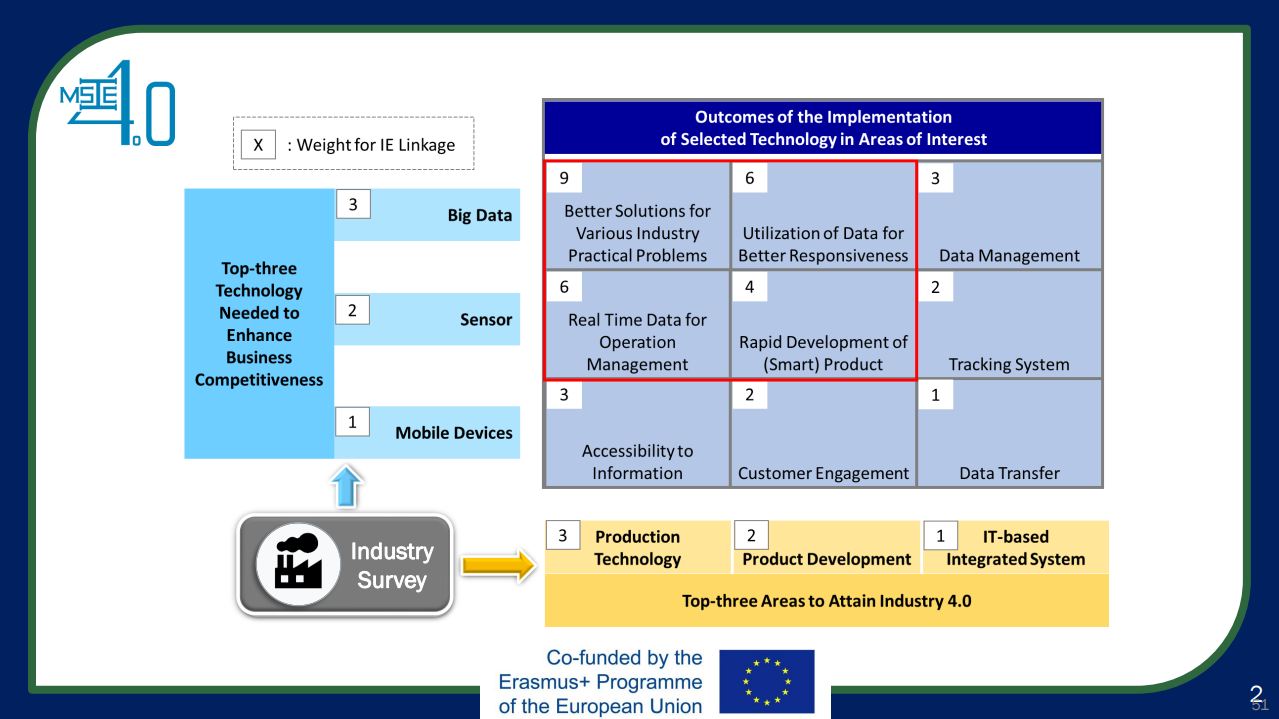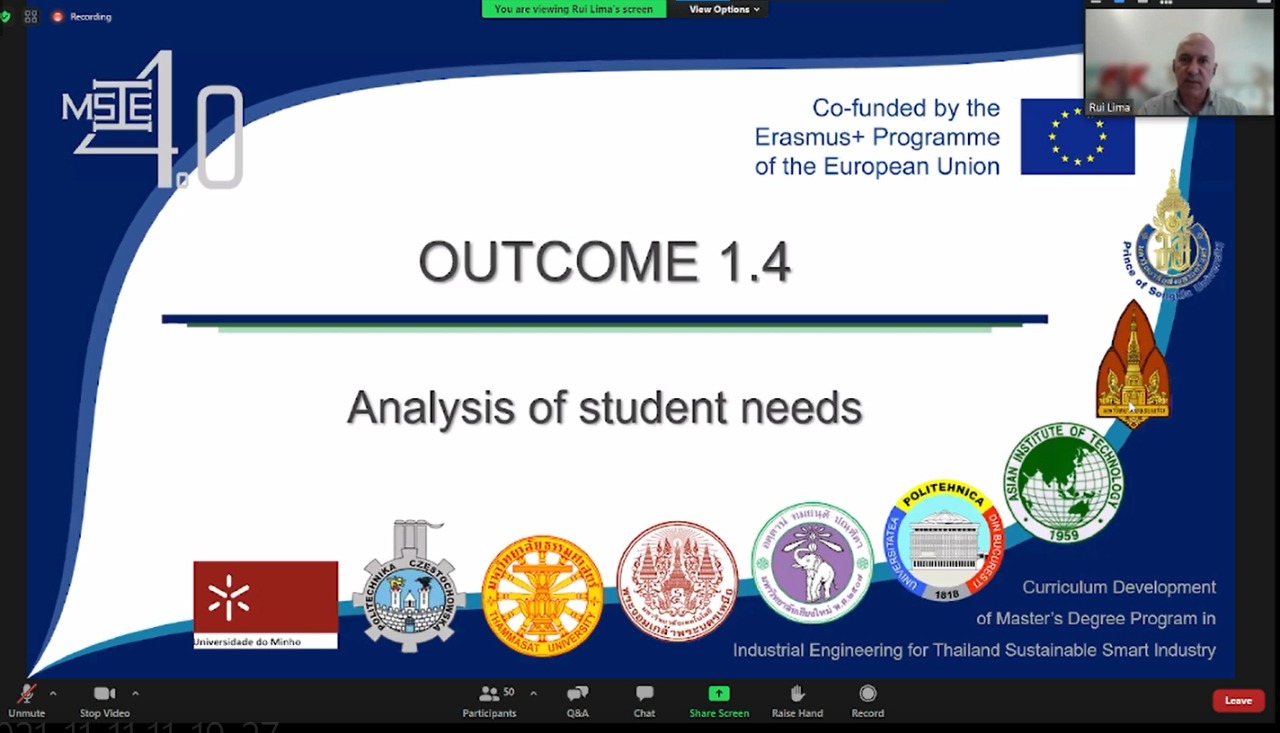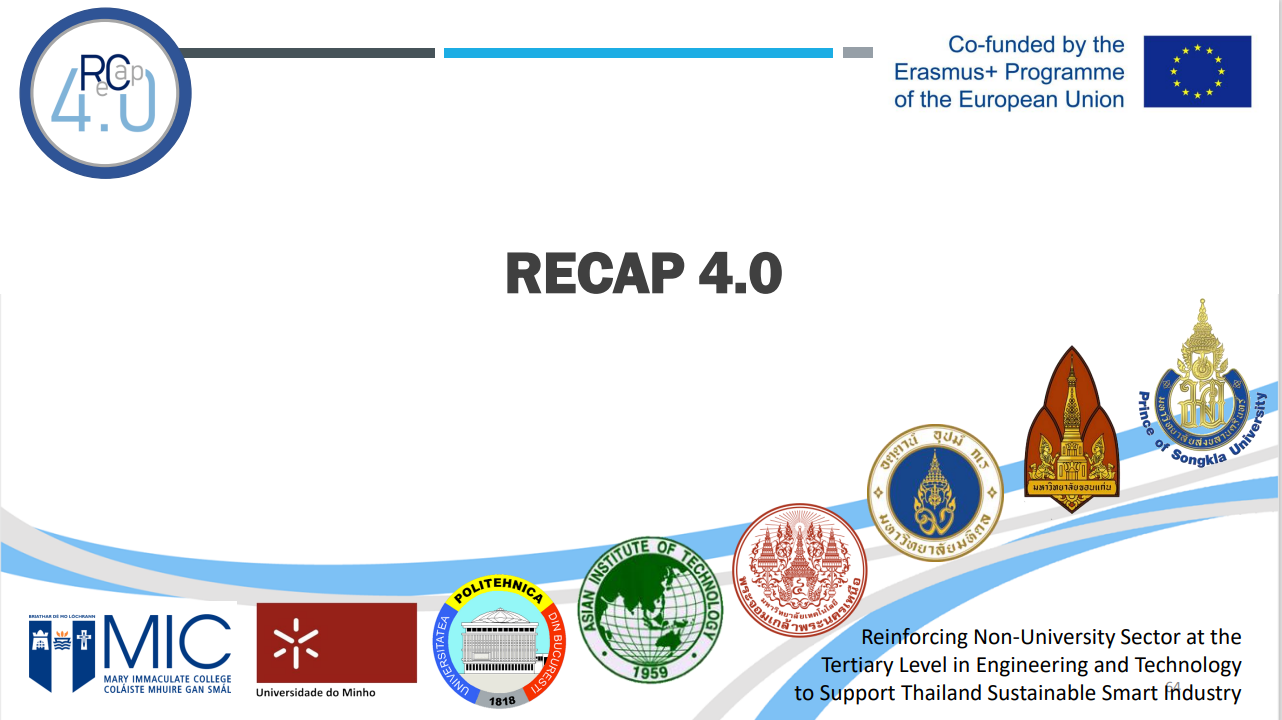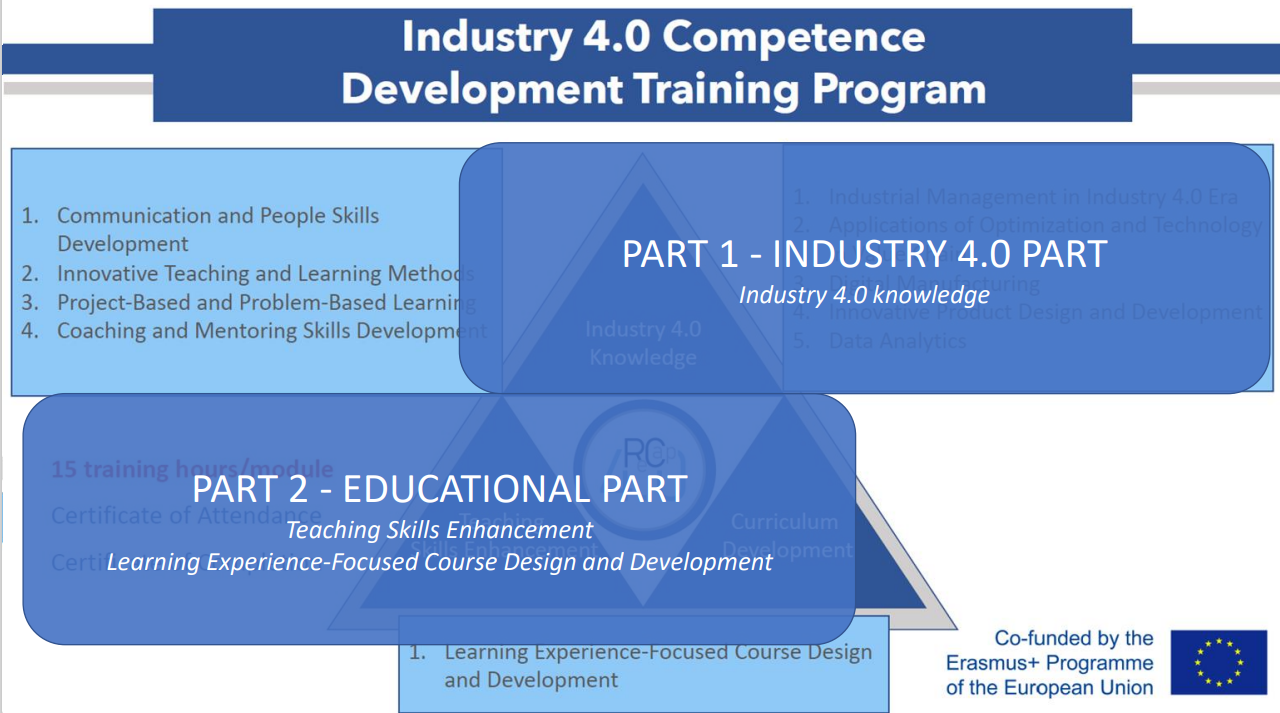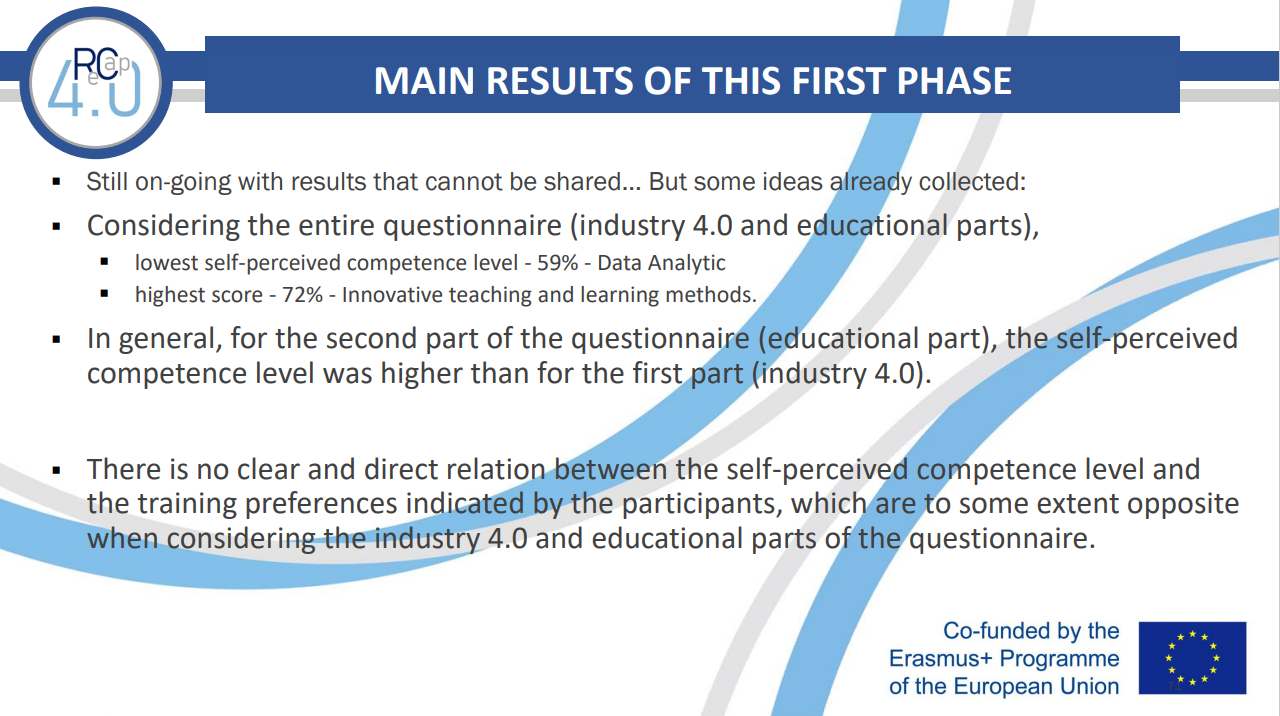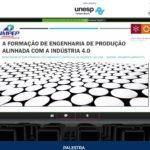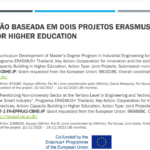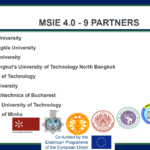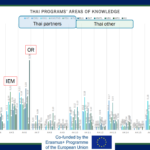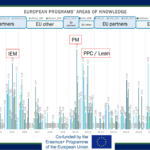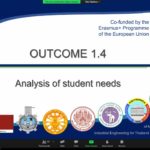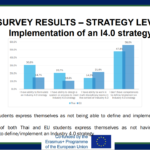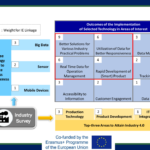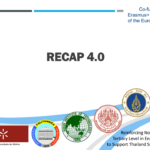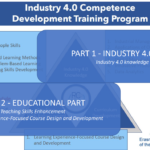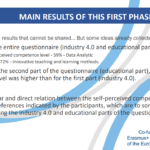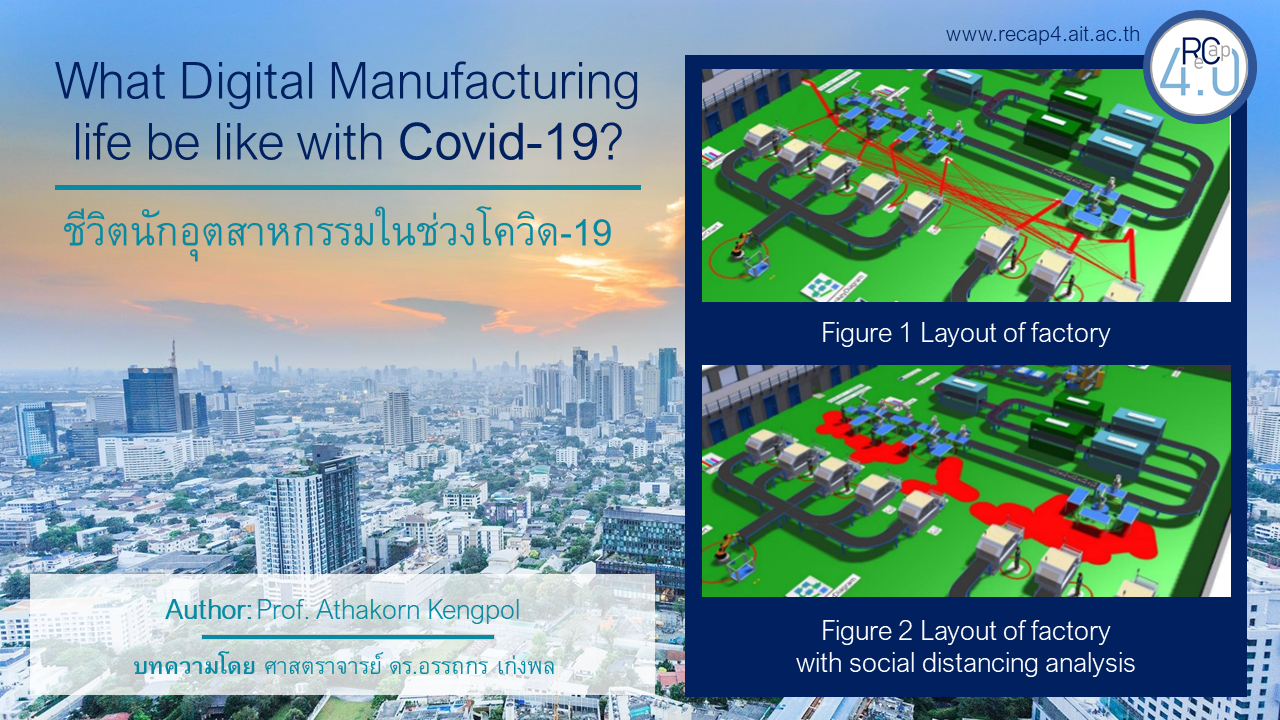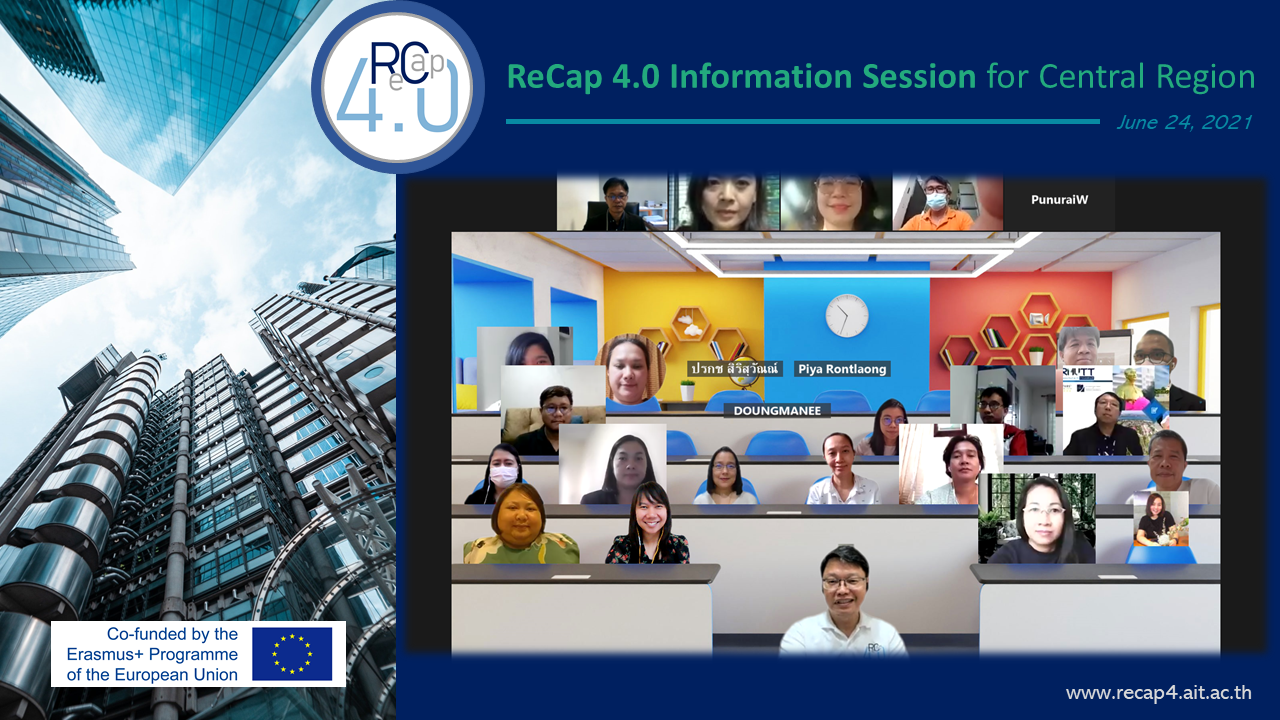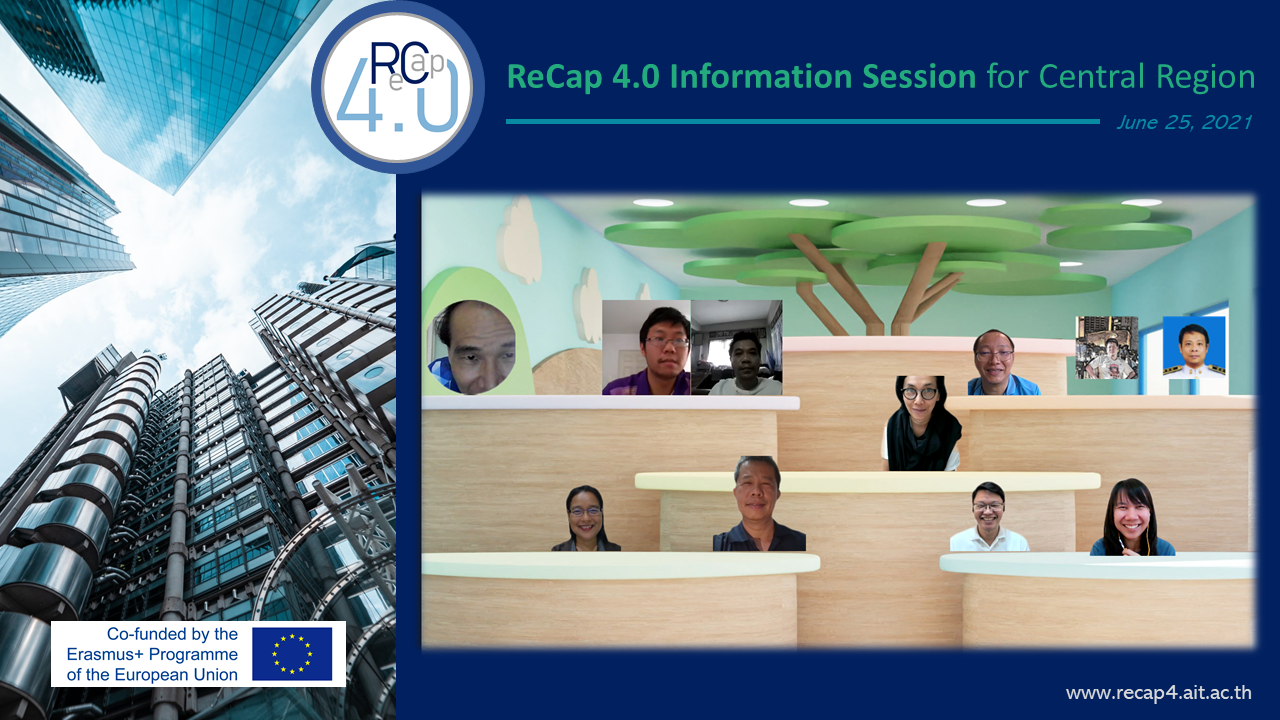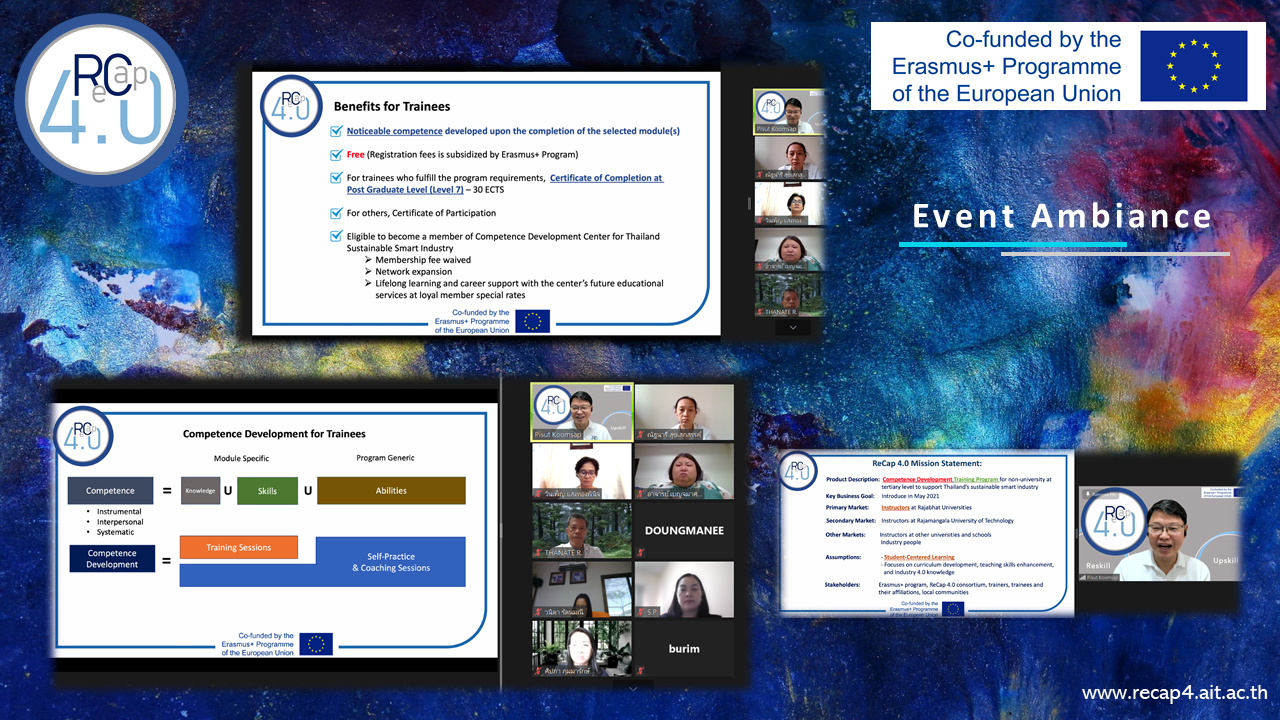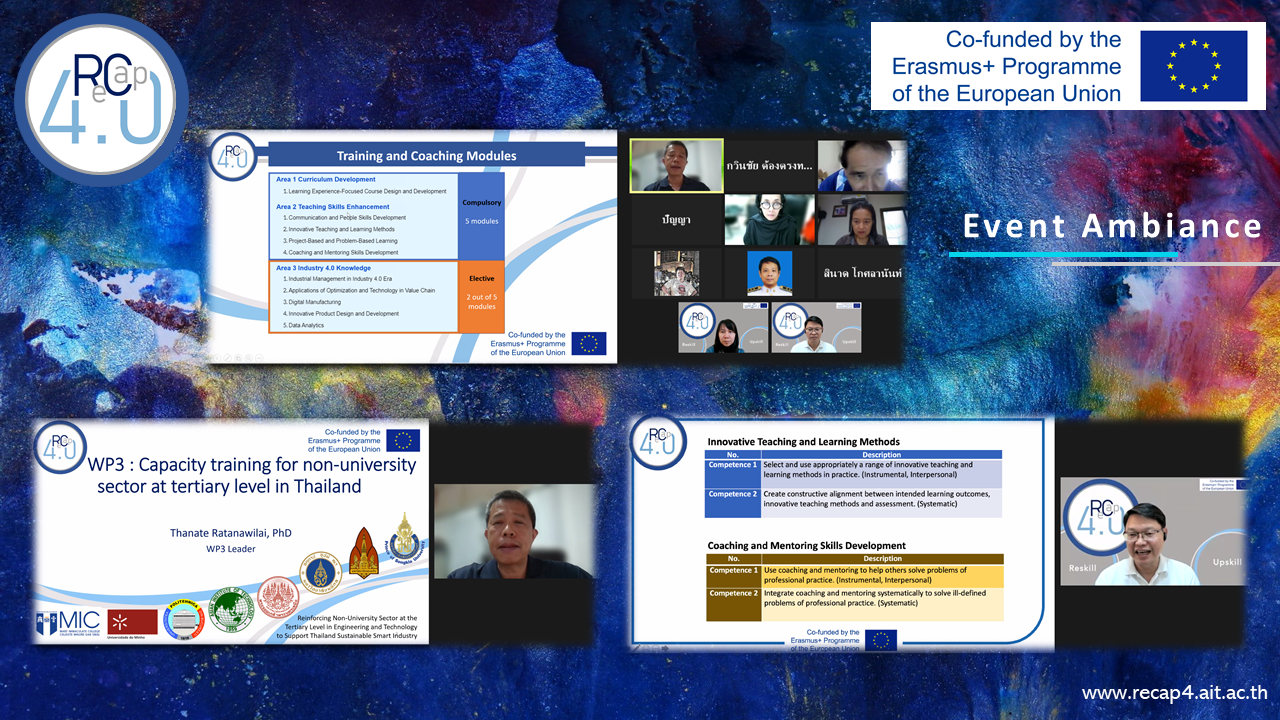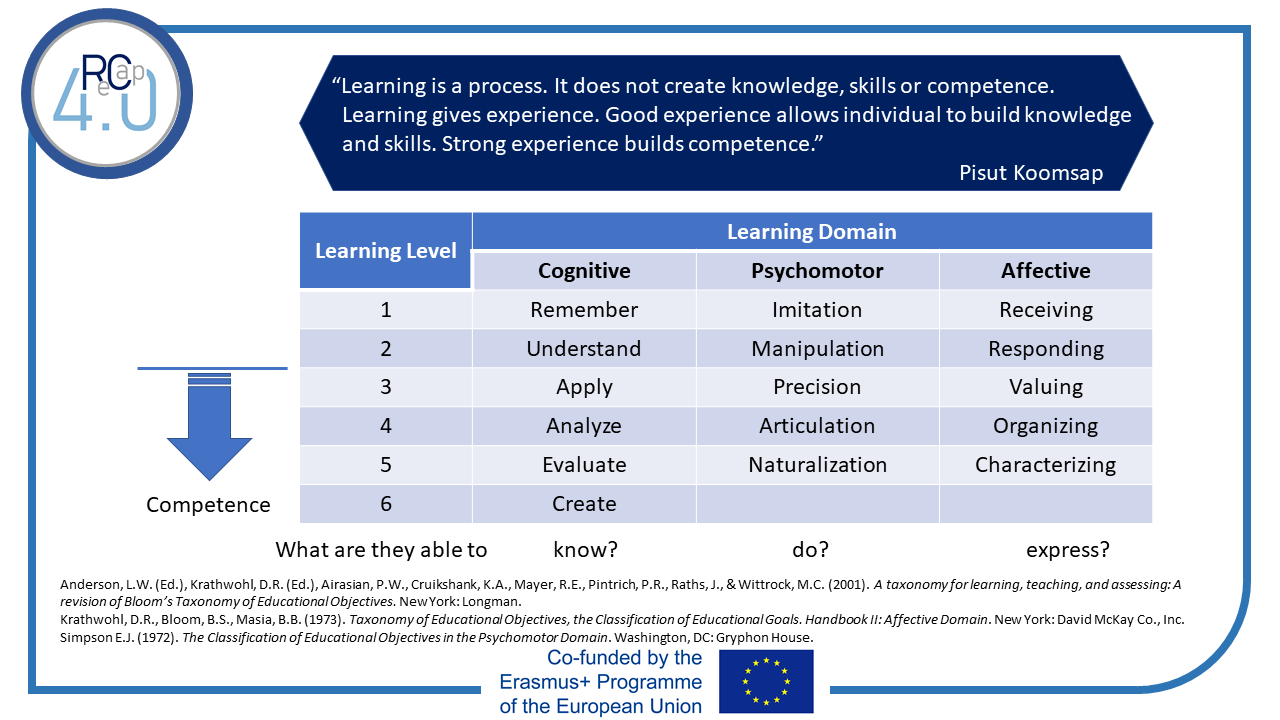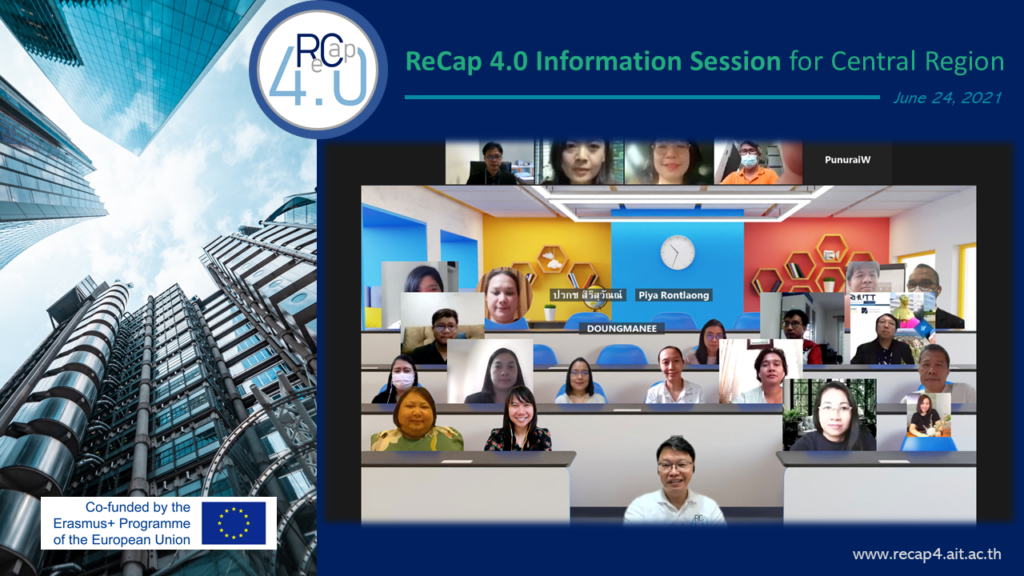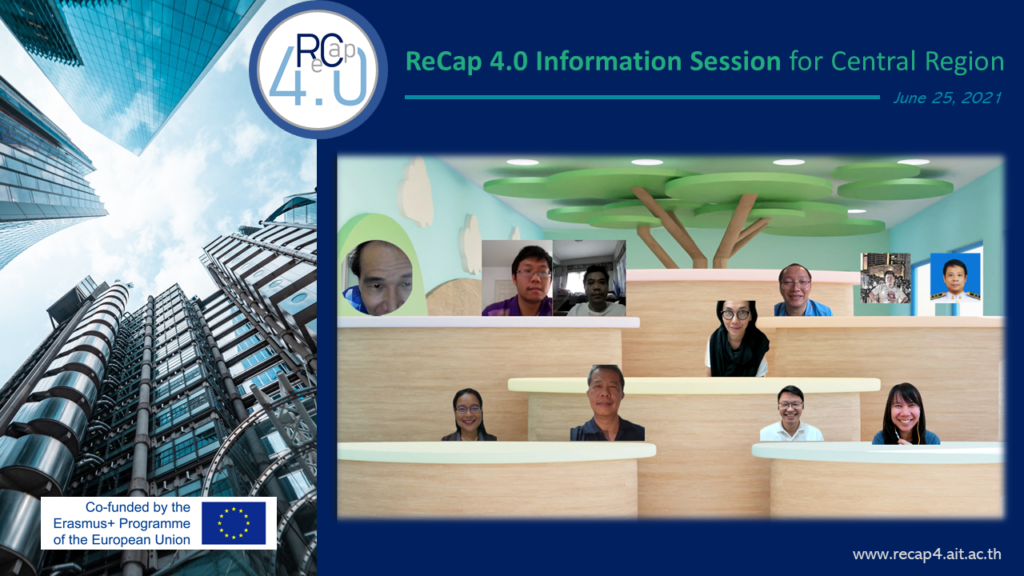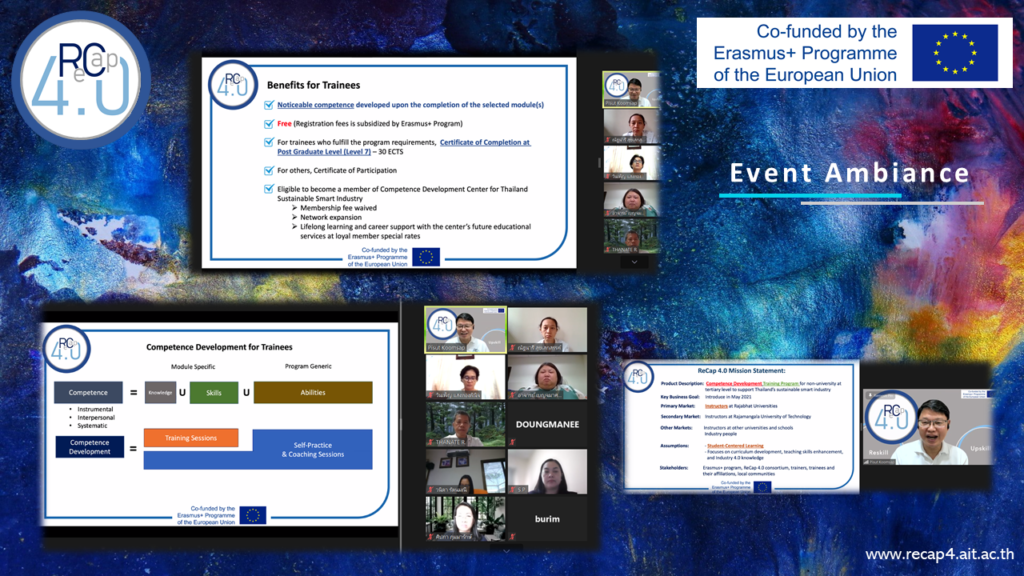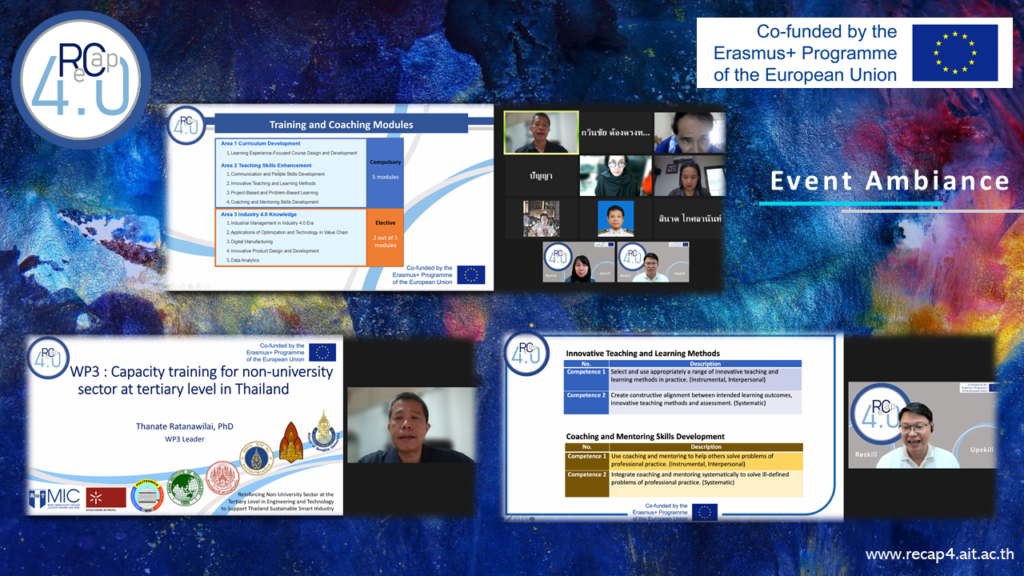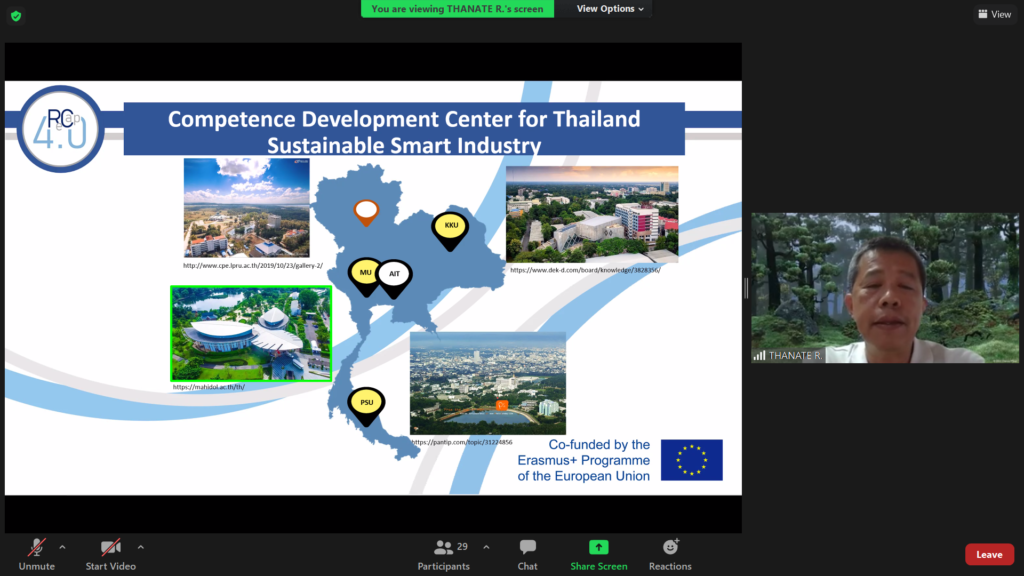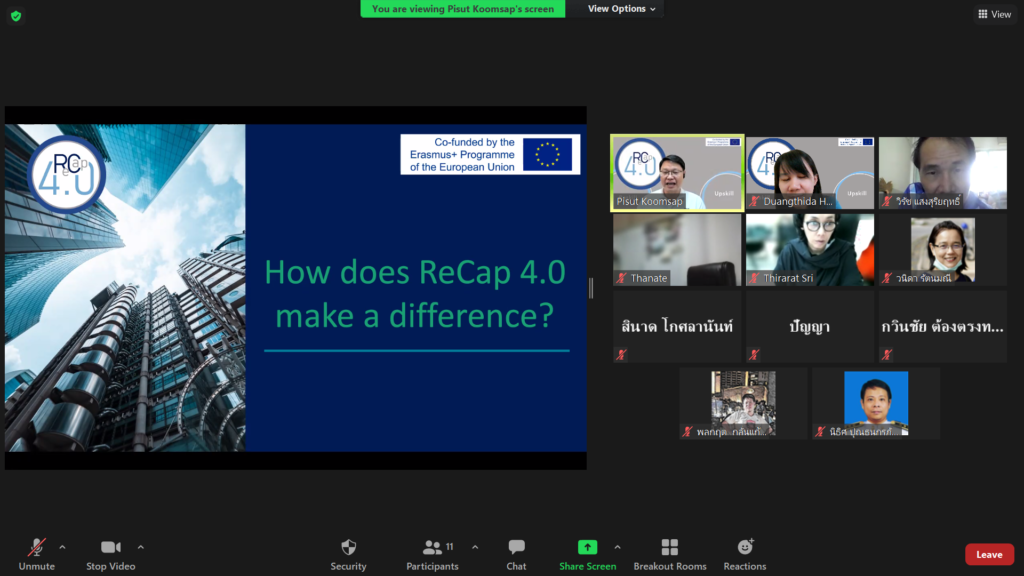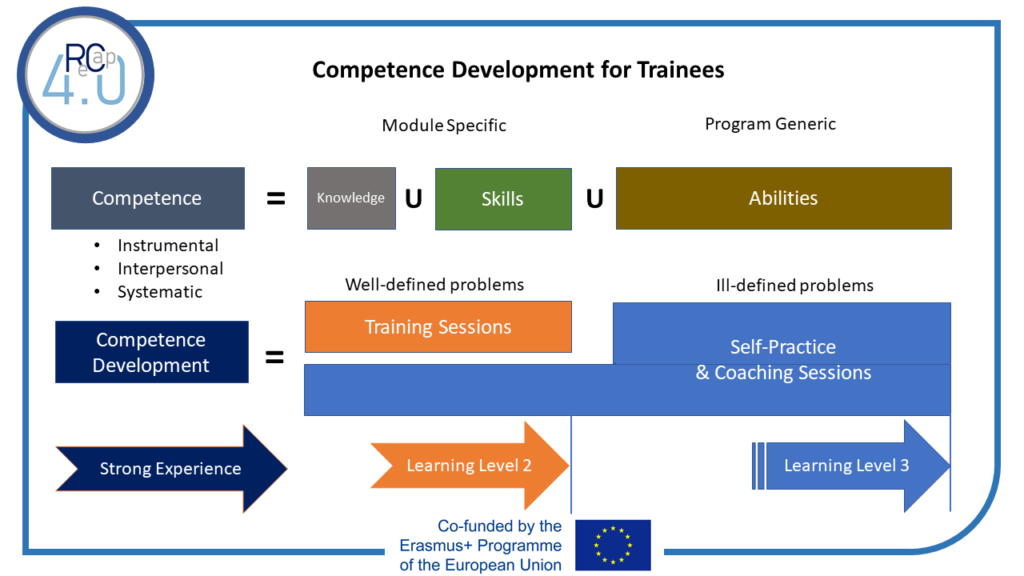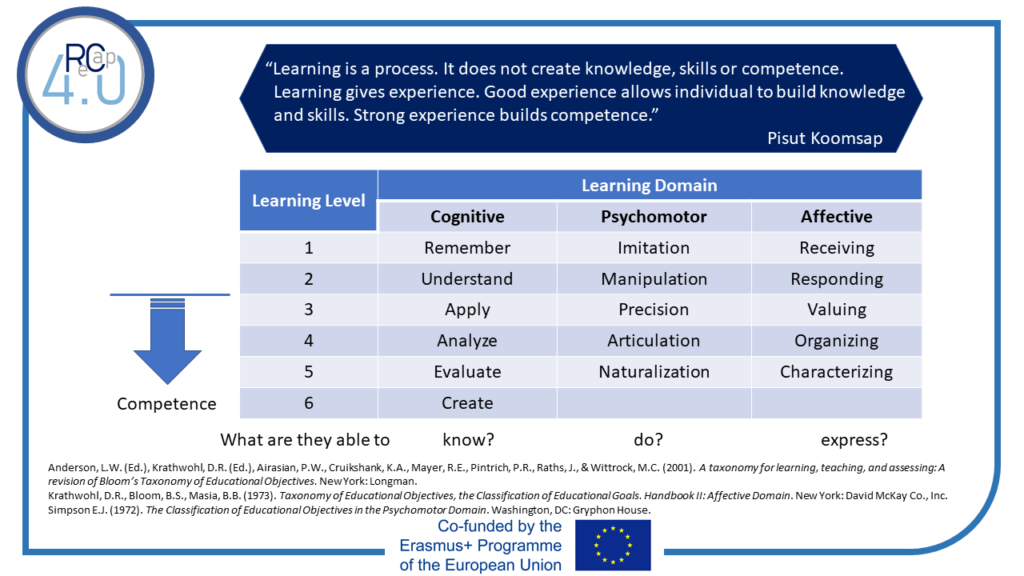Interesting International Conference in 2022 – PAEEALE 2022
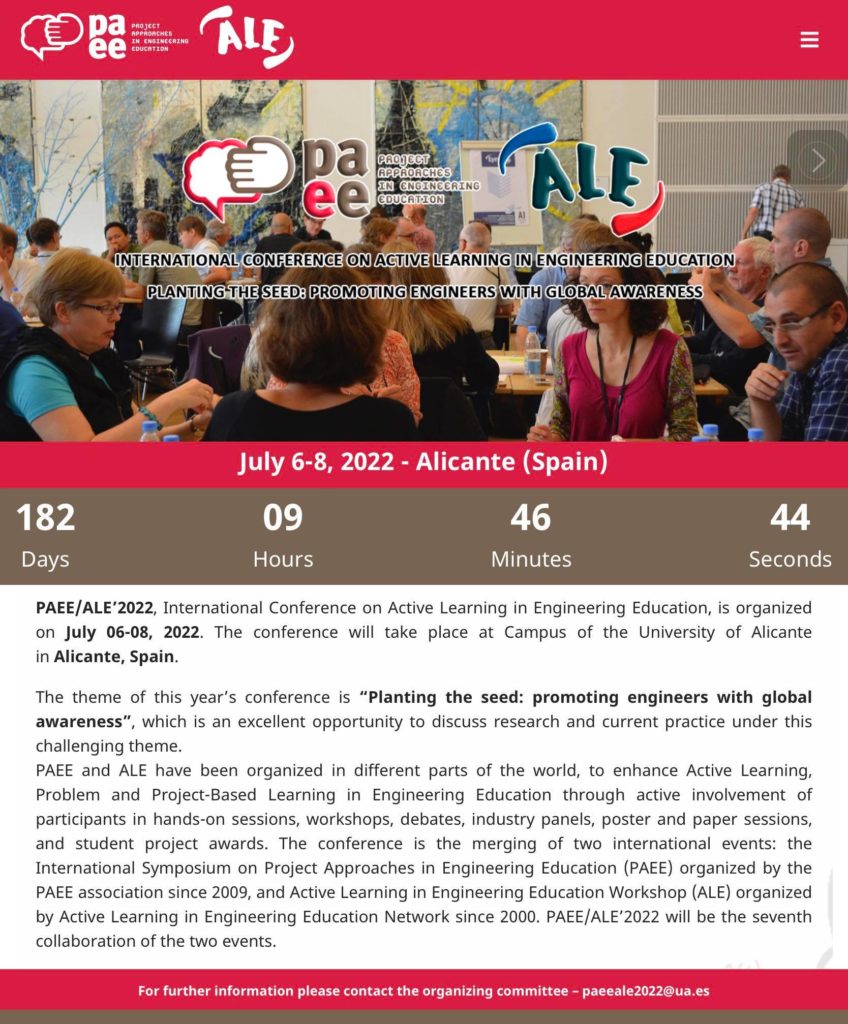
Interesting International Conference in 2022 – TE 2022
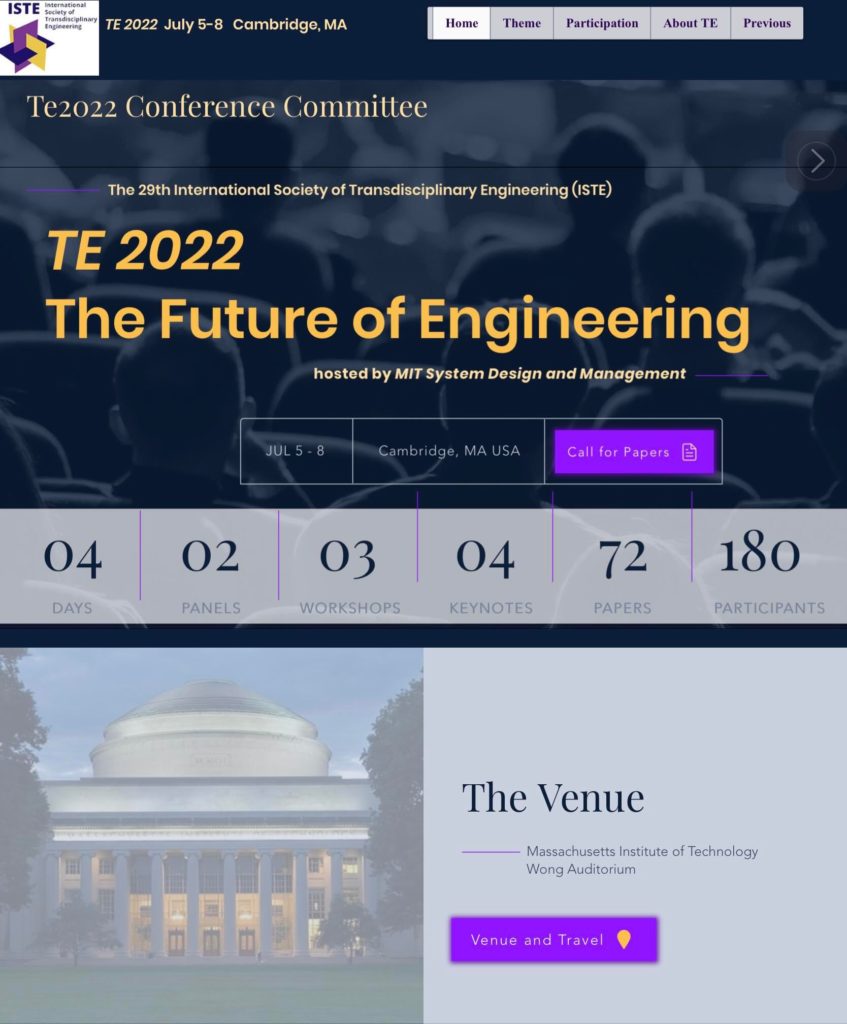
The Kick-Off of ReCap 4.0 Competence Development Training Program at RBRU
The Kick-Off of ReCap 4.0 Competence Development Training Program at RBRU
Two Modules of the ReCap 4.0 Competence Development Training Program were delivered during the mid of December 2021 at Rambhai Barni Rajabhat University, Chanthaburi, Thailand. The following photos capture the learning ambiances during the training sessions of
-
- Communication and People Skills Development (CPD)
- Innovative Product Design and Development (PDD)
Modules instructor: Pisut Koomsap, Ph.D., Asian Institute of Technology, Thailand
.
.
.
.
.
ReCap 4.0 Consortium Delivered a Presentation at SIMPEP
November 10th – 12th, 2021
Organizer: Faculty of Engineering, Universidade Estadual Paulista (UNESP)
.
.
.
.
“Mary Immaculate College, Limerick” by Dr Cathal de Paor

Author: Dr Cathal de Paor
Mary Immaculate College, Limerick – looking forward to Recap 4.0
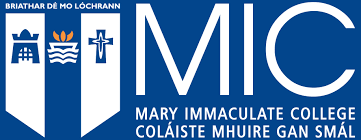 Mary Immaculate College is a publicly-funded higher education institution, academically linked to the University of Limerick, and providing a wide range of programmes in Education and the Liberal Arts from bachelor to doctoral level. There are currently over 5, 000 registered students. The college has two campuses in Limerick and Thurles. The preparation of education professionals account for a major part of the work of the Faculty of Education in particular, i.e., those professionals working as teachers and practitioners in the early childhood sector, primary, post-primary, further/adult education, and higher education.
Mary Immaculate College is a publicly-funded higher education institution, academically linked to the University of Limerick, and providing a wide range of programmes in Education and the Liberal Arts from bachelor to doctoral level. There are currently over 5, 000 registered students. The college has two campuses in Limerick and Thurles. The preparation of education professionals account for a major part of the work of the Faculty of Education in particular, i.e., those professionals working as teachers and practitioners in the early childhood sector, primary, post-primary, further/adult education, and higher education.
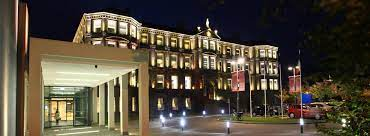 MIC undertakes research and other initiatives in Education together with the University of Limerick (UL) and Limerick Institute of Technology (LIT), in the National Institute for Studies in Education (NISE). NISE builds on well-established regional collaboration since 2006 between these three higher education institutions in the mid-western area having a commitment to develop an internationally significant centre of educational studies in Limerick given: (i) the three HEIs’ proximity, (ii) their endorsement of benefits for the region and each HEI through enhanced collaboration and (iii) the scale of education studies in Limerick within both a regional context (i.e. in 2019 approximately 26% of all students in UL and MIC are registered in education) and national context (i.e. in 2019 with approx. 5,800+ students across UL, MIC and LIT it is now the largest ‘centre of excellence’ and provision nationally for educational studies).
MIC undertakes research and other initiatives in Education together with the University of Limerick (UL) and Limerick Institute of Technology (LIT), in the National Institute for Studies in Education (NISE). NISE builds on well-established regional collaboration since 2006 between these three higher education institutions in the mid-western area having a commitment to develop an internationally significant centre of educational studies in Limerick given: (i) the three HEIs’ proximity, (ii) their endorsement of benefits for the region and each HEI through enhanced collaboration and (iii) the scale of education studies in Limerick within both a regional context (i.e. in 2019 approximately 26% of all students in UL and MIC are registered in education) and national context (i.e. in 2019 with approx. 5,800+ students across UL, MIC and LIT it is now the largest ‘centre of excellence’ and provision nationally for educational studies).
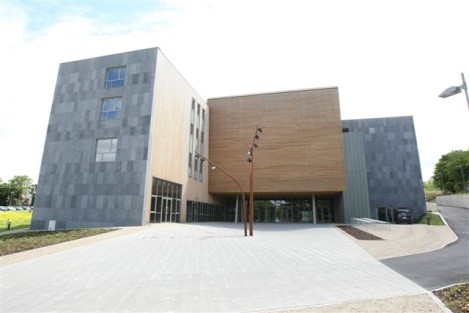 Apart from NISE activities, MIC has its own designated centre devoted to enhancing the quality of teaching and learning in higher education, including the integration of innovative teaching and learning methods using technology. Known as the Learning Enhancement and Academic Development Centre (LEAD), it provides leadership in academic practice and development to ensure the highest quality of student learning in support of the MIC Strategic Plan. The Faculty of Education in MIC also collaborates with other higher education institutions in Ireland in the area of Education. For example, MIC is a founding member of the network of HEIs providing teaching qualifications for the further education (FE), i.e., post-secondary non-higher in Ireland. The Teaching Council is a regular contributor to the work of this network.
Apart from NISE activities, MIC has its own designated centre devoted to enhancing the quality of teaching and learning in higher education, including the integration of innovative teaching and learning methods using technology. Known as the Learning Enhancement and Academic Development Centre (LEAD), it provides leadership in academic practice and development to ensure the highest quality of student learning in support of the MIC Strategic Plan. The Faculty of Education in MIC also collaborates with other higher education institutions in Ireland in the area of Education. For example, MIC is a founding member of the network of HEIs providing teaching qualifications for the further education (FE), i.e., post-secondary non-higher in Ireland. The Teaching Council is a regular contributor to the work of this network.
This provides the context for participation by MIC in Recap 4.0 for which MIC will draw on its experience in teacher education for the further and higher education. As noted by Prof. Michael Healy, Vice President Research MIC at the time of the launch in MIC, this is a first opportunity for MIC to participate in the capacity-building strand of Erasmus+ and one of special interest as a result. Dean of Education, Prof. Emer Ring welcomed an exciting opportunity for the Faculty of Education to work with project leader, Dr Pisut Koomsap (AIT) and the project team on issues of common interest in teaching and learning. As part of its contribution, MIC has begun preparations for developing various professional development courses on innovative teaching methods and active learning.
 MIC has its main campus in the city of Limerick, the third largest city (and fourth largest on the island) in Ireland having a population of about 100, 000. The city lies on the River Shannon, with the historic core of the city located on King’s Island, which is bounded by the Shannon and Abbey Rivers. Limerick is also located at the head of the Shannon Estuary, where the river widens before it flows into the Atlantic Ocean.
MIC has its main campus in the city of Limerick, the third largest city (and fourth largest on the island) in Ireland having a population of about 100, 000. The city lies on the River Shannon, with the historic core of the city located on King’s Island, which is bounded by the Shannon and Abbey Rivers. Limerick is also located at the head of the Shannon Estuary, where the river widens before it flows into the Atlantic Ocean.
Limerick City is almost 1,100 years old. It has been a Viking settlement, a medieval walled town, a Georgian city and is now a modern, vibrant metropolitan area with a rich and historic hinterland. Having been founded by the Vikings from Scandinavia around 922 AD, who were great traders, Limerick developed contacts with other Viking towns all over Europe.

The Normans captured Limerick in 1195 and also left their stamp on the city, principally, King John’s Castle, the walls of Limerick and the local government system they founded, all of which survive to this day.
Limerick gives its name to “The limerick” a popular five line humorous poem, thought to be derived from the 18th century, Maigue Poets of Croom, Co. Limerick.
Dr Cathal de Paor
“What Digital Manufacturing life be like with Covid-19?” by Prof. Athakorn Kengpol

Like it or not, Covid-19 will be with us for some time. Post Covid-19 may be far from real, this means we have to work, learn, and live with a very limited chance of face to face socialisation. Even with National Immunisation has been launched from our Government, however it needs a long time to reach herd immune. This biggest health challenge of our generation cause experts race to come up with solutions and stop the soaring number of deaths. Industrialists are doing their bits with a number of ways beside work from home (WFH).
Take “Digital Manufacturing” as an example, from an ordinary bicycle factory, we can use a simulation software to perform “Digital Twin Factory” where we put a whole factory into the digital form.
At KMUTNB, the research has been done in various application of digital manufacturing using a simulation software from Siemens, called Technomatix software. The layout of the bicycle factory with manufacturing process parameters e.g. cycle time, machining time, working time and waiting time etc. including grouping of machine can be analysed and visualised as illustrated in Figure 1.
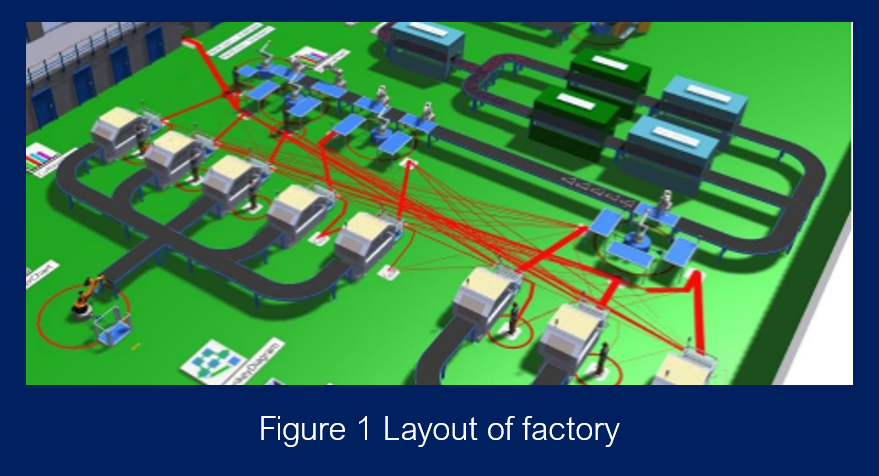
In the light of Covid-19, with some coding, the simulation software can analyse risks of infection by simulating how close of workers in keeping social distancing as can be seen in Figure 2 (in red circle intersection). According to the research, we found more than 20,000 times of social distancing violation during one month of factory operation. There is a substantial need to improve walking path of workers in this digital factory. Even the enhancement has been made in walking path, there is, however quite hard to eliminate the social distancing violation. A number of ways can be applied to this layout e.g. Automatic Guided Vehicle (AGV) or Conveyor etc. with pro and con. The Technomatix simulation software can assist how the engineer should opt for the better off. Benefit and Cost analysis, in particular, is a frequently used in business where during this Covid-19 time, which way should be the most appropriate for the management. The factors that have to be carefully considered are for example, dynamics of business, law and regulation of labour including health and safety of working environment etc.
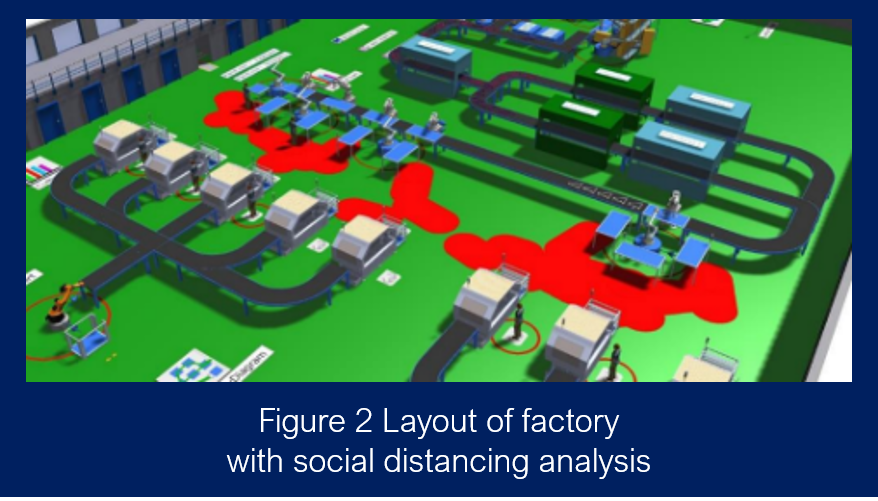
Above is just a single floor of digital factory, if the same amount of area needed is double within the same amount of area on the ground, the double floor with movable overhead hanging racks could be the solution. The simulation software can combine ground floor and movable upper layer racks and optimise the layout to the business needed. The simulation software can offer a great flexibility and agility to the digital twin factory so that the management can make a decisive decision in their product innovation in line with business direction.
As a summary, in recent reports from PricewaterhouseCoopers, at the heart of Europe more than 90% of companies are investing in Digital Factories and all of them expect to achieve higher efficiency.
If industrialist and academia in Thailand want to be forefront in competitiveness, there is an immediate need to gear themselves up for the Digital Transformation.
ชีวิตนักอุตสาหกรรมในช่วงโควิด-19
ชอบหรือไม่ชอบก็แล้วแต่โควิท-19 จะยังคงอยู่กับพวกเราไปอีกนาน กว่าหมดไปของโควิท-19 อาจจะอีกนานกว่าจะเกิดขึ้นได้จริง ซึ่งหมายถึงเราต้องทำงาน ศึกษา และใช้ชีวิตในแบบจำกัดตามมาตรการทางสังคม แม้ว่าทางรัฐบาลจะพยายามให้เกิดภูมิคุ้มกันหมู่ในประชากร แต่ก็ต้องใช้เวลานาน ความท้าทายด้านสุขภาพที่ยิ่งใหญ่ที่สุดในยุคของเรา ทำให้ผู้เชี่ยวชาญทั้งหลายแข้งขันกันหาวิธีการแก้ปัญหาและหยุดยั้งยอดการสูญเสียชีวิตของประชากร นักอุตสาหกรรมก็ช่วยกันหาทางแก้ปัญหาเช่นเดียวกันในขณะที่พวกเราทำงานจากที่บ้าน (WFH)
ดังตัวอย่างจากการผลิตยุคดิจิทัล โดยจากโรงงานจักรยานดั้งเดิม เราสามารถใช้โปรแกรมการจำลอง เพื่อทำโรงงานแฝดดิจิทัล ซึ่งก็คือการนำโรงงานทั้งโรงงานเข้าไปไว้ในรูปแบบดิจิทัล
จากการวิจัยที่มหาวิทยาลัยเทคโนโลยีพระจอมเกล้าพระนครเหนือ ที่ได้ทำการประยุกต์ใช้การผลิตยุคดิจิทัล โดยการใช้ซอฟแวร์จากบริษัท ซีเมนต์ จำกัด เรียกว่าซอฟแวร์ Technomatix โดยพารามิเตอร์ของกระบวนการผลิตในโรงงานจักรยาน เช่น รอบเวลา, เวลางานของเครื่องจักร, เวลาทำงาน และเวลารอคอย ซึ่งรวมถึงการจัดการเครื่องจักรเป็นกลุ่ม สามารถนำมาวิเคราะห์ในซอฟแวร์นี้ ดังแสดงในรูปที่ 1
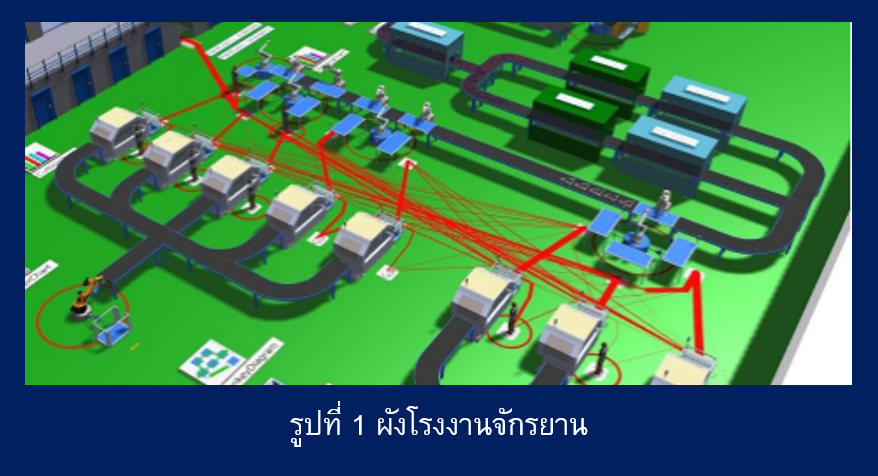
ในช่วงโควิท-19 นี้ เมื่อนำซอฟแวร์มาใช้พร้อมการเขียนโค๊ดเพิ่มเติม โปรแกรมการจำลองนี้สามารถวิเคราะห์ความเสี่ยงของการติดต่อ โดยจำลองการทำงานร่วมกันของพนักงาน โดยควรจะต้องทำงานแบบรักษาระยะห่าง ดังแสดงในวงกลมแดงที่ความเหลื่อมกัน ของรูปที่ 2 จากข้อมูลของการวิจัยพบว่า มีการละเมิดระยะห่างทางสังคมมากกว่า 20,000 ครั้ง ในช่วงหนึ่งเดือนของพนักงานทั้งหมด ดังนั้นจึงมีความจำเป็นอย่างยิ่งในการปรับปรุงทางเดินในการทำงานให้มีการเว้นระยะห่างทางสังคมในโรงงานแห่งนี้ อย่างไรก็ตามเป็นเรื่องยากมากในการกำจัดการละเมิดระยะห่างทางสังคมออกไปให้ได้ทั้งหมด มีหลายวิธีการที่อาจเป็นไปได้ เช่น การใช้พาหนะนำอัตโนมัติ (AGV) หรือสายพาน เป็นต้น แต่ก็มีทั้งข้อดีและข้อด้อย โปรแกรมจำลองสถานการณ์ Technomatix นี้สามารถช่วยวิศวกรสามารถเปรียบเทียบหาทางเลือกที่เหมาะสม เช่น การทำการวิเคราะห์ประโยชน์และต้นทุน ที่มักมีการวิเคราะห์ในธุรกิจ โดยเฉพาะช่วงโควิท-19 นี้ เพื่อหาทางเลือกที่เหมาะสม เช่น ทิศทางการเปลี่ยนแปลงของธุรกิจ, กฎหมายและข้อปฏิบัติด้านแรงงาน ซึ่งรวมถึงสุขอนามัยและความปลอดภัยของสิ่งแวดล้อมในการทำงาน
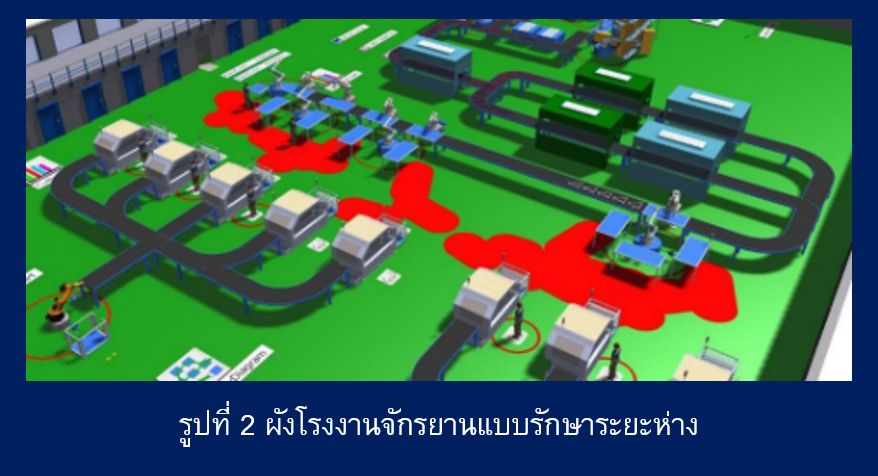
ทั้งหมดนั้นเป็นเพียงแค่โรงงานดิจิทัลแบบชั้นเดียว หากต้องการพื้นที่ทำงานมากกว่านี้ ในจำนวนพื้นที่บนพื้นดินเท่าเดิม จำเป็นต้องทำงานเป็นลักษณะสองชั้นด้วยอุปกรณ์ยกแบบเคลื่อนที่ในชั้นบน โดยซอฟแวร์การจำลองจะต้องรวมการทำงานทั้งสองชิ้นเข้าด้วยกันและทำการเชื่อมโยงกระบวนการผลิตบนอุปกรณ์ยกแบบเคลื่อนที่ในชั้นบน มาประสานกับการผลิตหรือประกอบที่อยู่บนพื้นและหาวิธีการทำงานที่เหมาะสมที่สุดในการผลิต รวมถึงปรับการวางผังโรงงานให้เหมาะสมที่สุดด้วย ดังนั้นซอฟแวร์การจำลองสถานการณ์นี้สามารถทำให้การทำงานออกแบบกระบวนการผลิตในโรงงานดิจิทัลมีความยืดหยุ่นและมีความคล่องตัวในเวลาเดียวกัน เพื่อให้ผู้บริหารของบริษัทสามารถผลิตนวัตกรรมให้ตรงกับทิศทางการบริหารของบริษัทได้
โดยสรุป จากรายงานของบริษัท PricewaterhouseCoopers ที่ศูนย์กลางของยุโรปบริษัทมากกว่า 90 เปอร์เซ็นได้ลงทุนในโรงงานดิจิทัล ซึ่งทั้งหมดคาดว่าจะทำให้มีประสิทธิภาพในการทำงานสูงขึ้น
หากนักอุตสาหกรรมและนักการศึกษาในประเทศไทยต้องการเป็นผู้นำในด้านความสามารถในการแข่งขันในธุรกิจ เราต้องนำพาตัวเองเข้าสู่การเปลี่ยนแปลงสู่ยุคดิจิทัล
References:
https://www.pwc.de/de/digitale-transformation/digital-factories-2020-shaping-the-future-of-manufacturing.pdf
https://www.amrc.co.uk/files/document/406/1605271035_1604658922_AMRC_Digital_Twin_AW.pdf
https://www.pwc.com/gx/en/industries/industrial-manufacturing/digital-supply-chain/digital-champions-2025.html
.
“University of Minho, Portugal” by Cristiano Jesus

Author: Cristiano Jesus
Founded in 1973, the University of Minho received its first students in the academic year 1975/76. Today, the University of Minho is a reference in Education and Scientific Research in Portugal, Europe, and the world. It is a Research University focusing on the regional, national and international socioeconomic environment. It invested in growing the Knowledge, RD&I chain, namely through intellectual property management, standing as one of the Portuguese Higher Education Institutions with more registered patents.
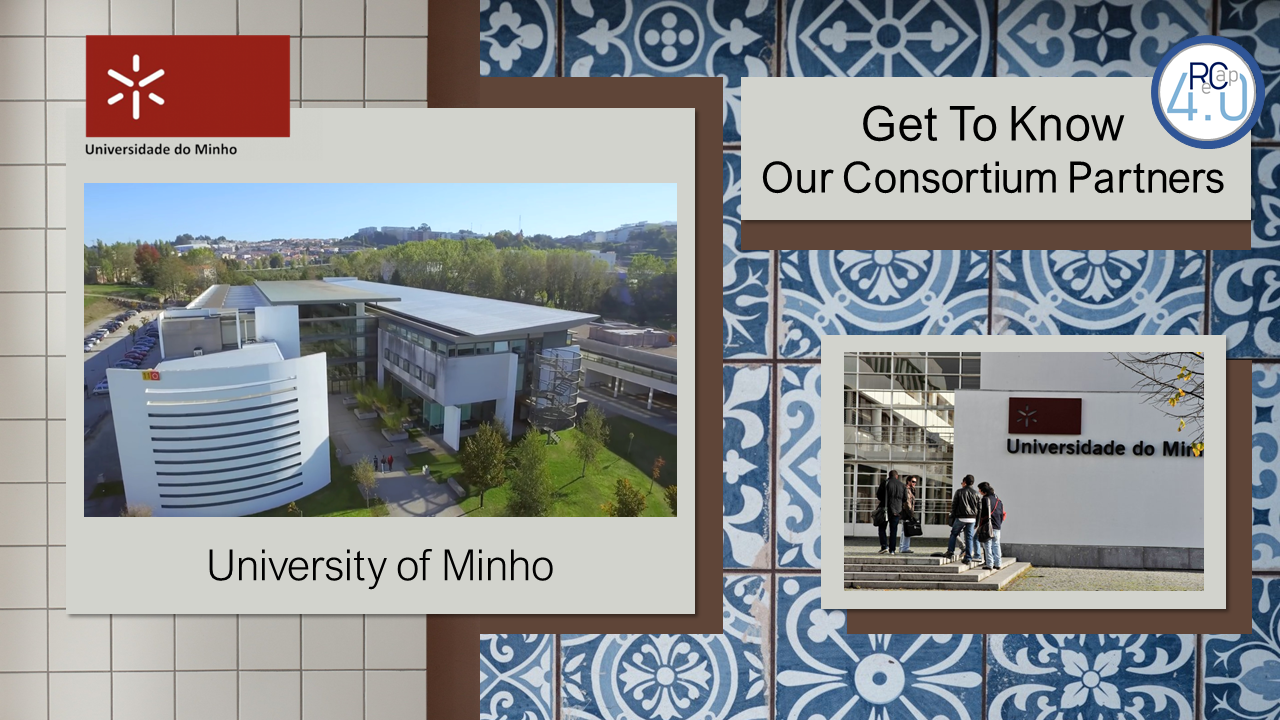
The Gualtar campus in Braga hosts the Schools of Sciences, Law, Psychology, Nursing, Medicine, the Institutes of Social Sciences and Humanities, Education, and Letters and Human Sciences, as well as a portion of the School of Engineering. The Azurém campus (Guimares) hosts the School of Engineering and almost all of its courses. Also, it hosts the School of Architecture and some courses from the School of Sciences and the Institute of Social Sciences. The Couros campus is the place where the Advanced Postgraduate Training Center, the Degree in Theater, and the Institute of Design are located. Within 12 Schools and Institutes and over 30 research units and 1,000 teaching staff, UMinho currently receives almost 20,000 students, including over 2,000 foreign students. Since the past 5 years, UMinho has been ranked in the TOP 500 universities worldwide. It is the Portuguese institution holding the highest number of Highly Cited Researchers in the 2019 edition from the Web of Science Group (Clarivate).

Braga and Guimarães combine tradition and history with a current and cosmopolitan experience.

Braga, founded in Roman times, has over 2000 years of history, and is one of the oldest Portuguese cities. Braga is also one of the oldest Christian cities in the world and is, at the same time, one of the youngest cities in Europe in terms of average age of population, making it dynamic and energetic. Guimarães is one of the most significant historical cities in the country, and its historical center is recognized as World Cultural Heritage, making it one of the region’s most important tourist destinations. Its streets and monuments reverberate with history and fascinate visitors. Guimarães has a millennium of history and blends it with the dynamism and entrepreneurship that characterize modern cities. It is often called the “Cradle City” since it was the place establishing the administrative center of the Condado Portucalense, which later became Portugal.
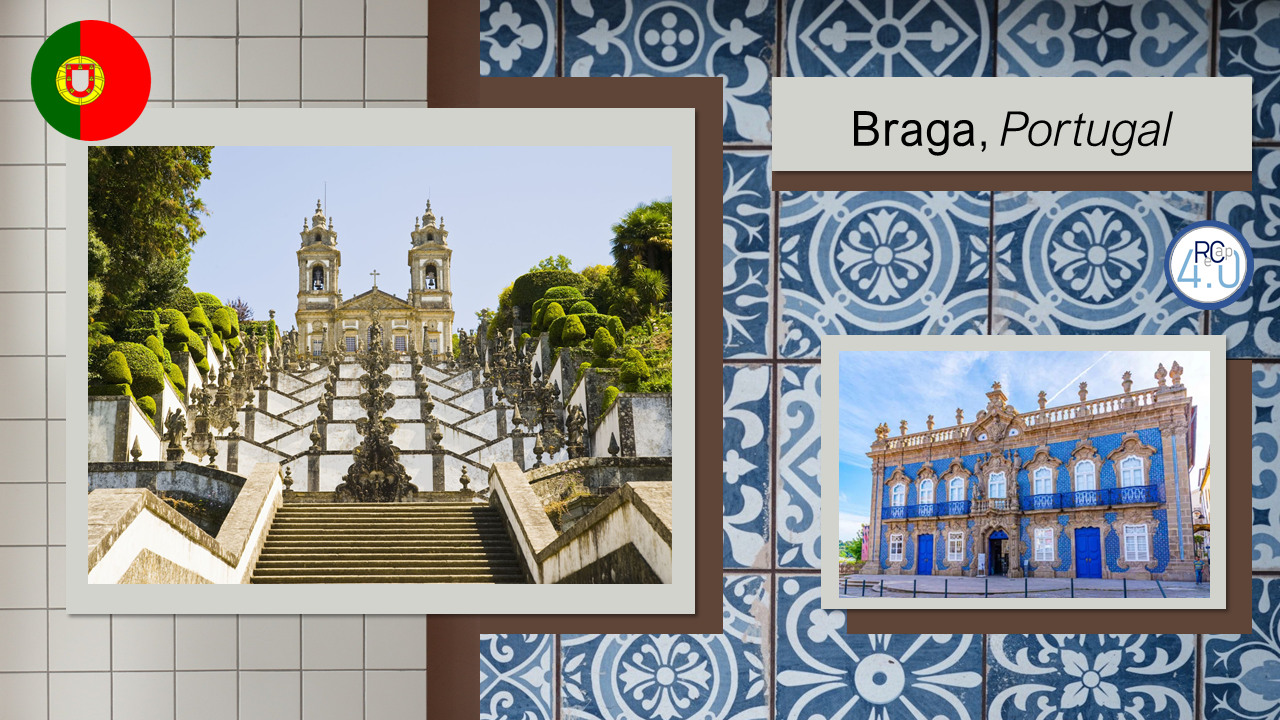
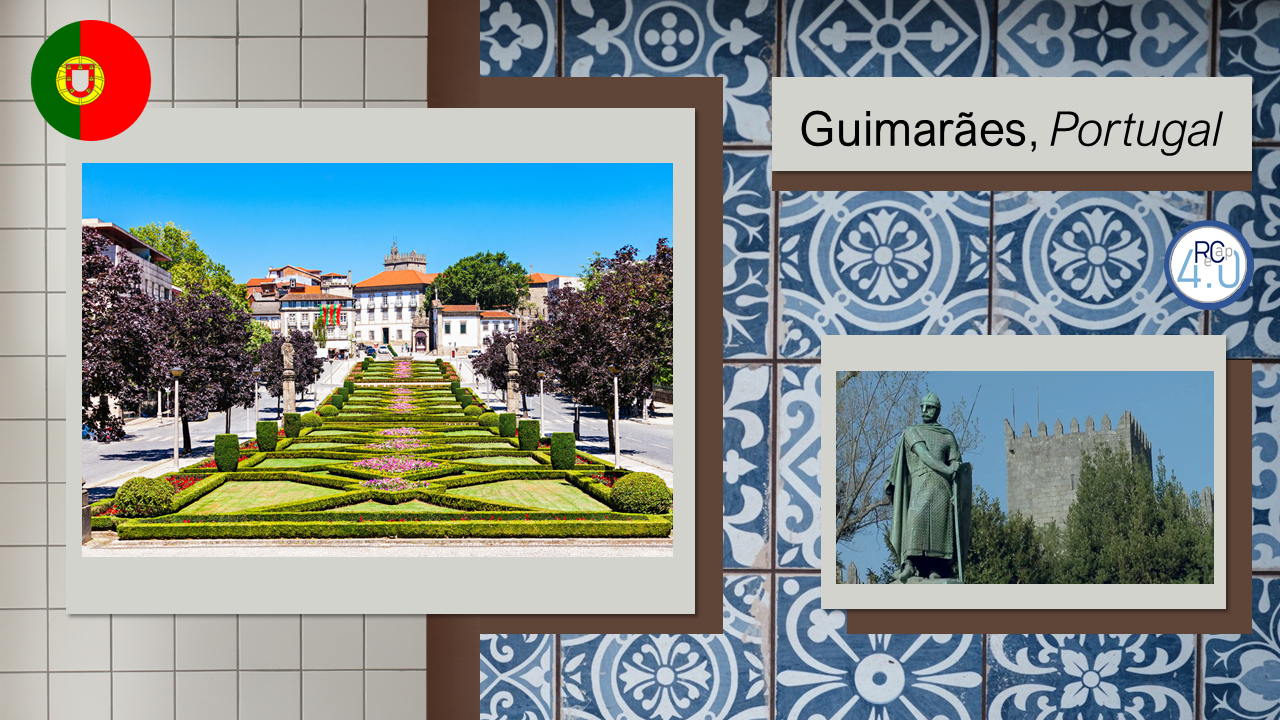
.
“Industry 4.0 & Small and Medium-Sized Enterprises in the context of European Union and Thailand” by UMinho Team

By Cristiano Jesus; Rui M. Lima; Rui M. Sousa
University of Minho, ALGORITMI Centre, Production and Systems Department – Guimarães, Portugal
———————————————————————————————————–
The reconfiguration of business models to the Industry 4.0 is an urgent demand and a clear concern that emerges from current economic relations. However, the concepts of Industry 4.0 and the ways of implementation in various contexts are not yet assimilated at all by the agents of the productive sector.
In addition, scientific researches often present solutions that are too generic, so that the Small and Medium-Sized Enterprises (SME), in turn, find difficult to recognize those solutions as applicable in their particular reality. There are some important findings reported by recent scientific publications, namely:
• Existing models have in common the fact that they are not geared to specific situations, so that they can only be applied by hiring external consultancy;
• Many studies present solutions that have a greater emphasis on technology;
• Many other studies argue that the best results occur from approaches that involve BPI – Business Process Improvement, BPM – Business Process Management and Maturity Models for a realistic and progressive reconfiguration of the business model and the organizational culture;
• SMEs are not always able to perceive any relationship between their activities and the definition of Industry 4.0 presented both in scientific studies, consulting services as well as and in the big media – Newspaper, Magazines, Blogs, etc.
According to OECD – Organization for Economic Cooperation and Development (2020), 99.7% of the companies in Thailand are SMEs. In Ireland, the CSO – Central Statistics Office informs that 99.7% of enterprises are SMEs and in Portugal, the Francisco Manuel dos Santos Institute considers that this index reaches 99.9% of Portuguese business organizations. Therefore, the social and economic importance of this sector is undeniable.
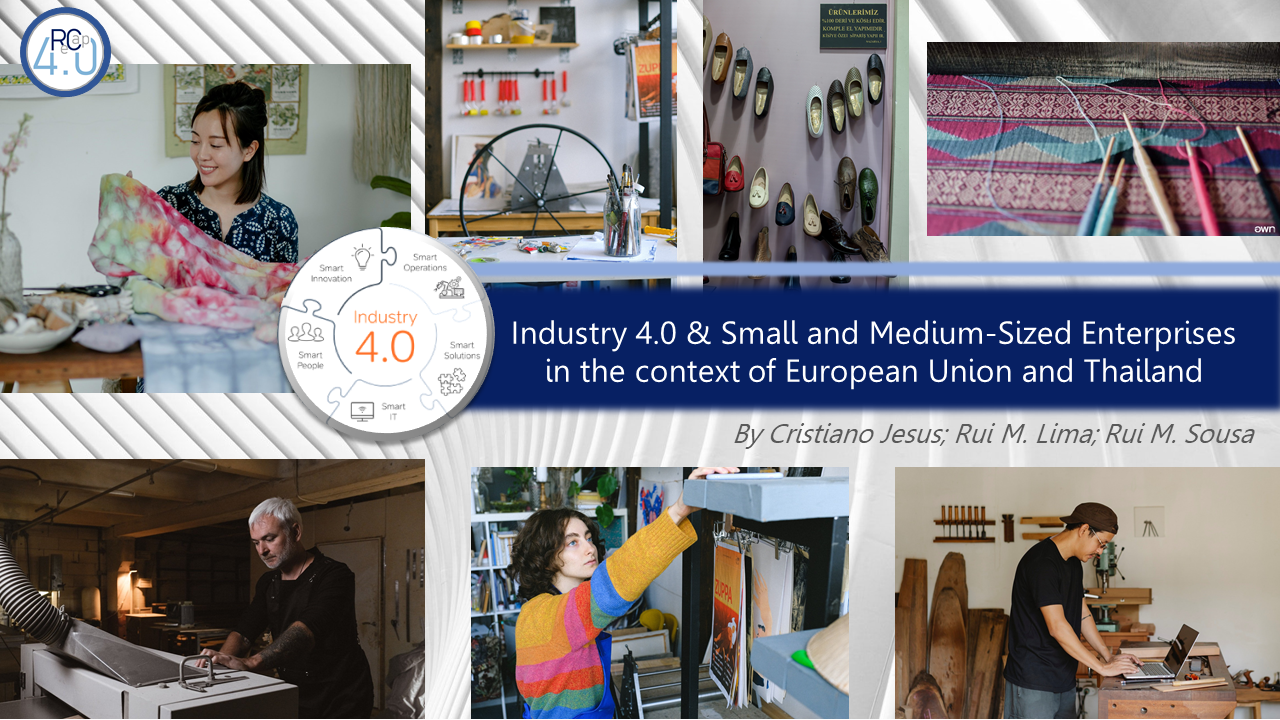
As for the context of Portugal in the European Union, for example, data from the World Economic Forum (WEF) indicates that the evaluation of Readiness for the Future of Production places Portugal among the countries with high potential of development with significant possibilities to be among the leading countries in this process. In order to identify the areas of greatest impact for the application of Industry 4.0 solutions and implementation models, the investigation of reports from local associations and working groups revealed that (i) most large companies in Portugal already have Industry 4.0 implementation projects; (ii) 75% have well-defined strategy and leadership for this implementation; (iii) 20% have isolated initiatives managed by several departments, and; (iv) only 5% have no ongoing initiative.
As previously mentioned, SMEs do not have the perception that this topic concerns them, nor that in their businesses there is some possibility of applying Industry 4.0, largely because they almost always relate Industry 4.0 exclusively to Artificial Intelligence, Virtual Reality, Machine Learning, Big Data, etc.
Therefore, any improvement in SMEs can bring significant progress in the conditions presented by Portugal. This is where the opportunities for improvement are found, since among the large companies this work has already been done, of course with opportunities for improvement. According to WEF, this scenario is similar in all world, as can be seen in its reports.
It is usual to mention the worry about labor qualification when the topic of discussion is Industry 4.0. Concerning this, it is important to consider a factor that is present in Portugal as well as in many other countries. Portuguese universities have quality and perform the practice of updating their academic projects regularly, including in the topic of Industry 4.0. Therefore, Portugal does not have a problem with qualified labor; the problem is that professionals are more interested in working in large companies, or even outside Portugal.
Portugal, in particular, has a high potential and adequate structural conditions, but relative difficulty in retaining talent, low confidence in professional and scientific management, and low professional mobility. Labor mobility refers to the capacity of personnel to move between positions, organizations and regions, within an economy and between different economies. This indicator is important because it affects growth and production. Large companies have their own resources, but SMEs cannot attract qualified labor and have difficulties to recognize themselves in the universe of Industry 4.0.
To conclude, it can be stated that SMEs do not recognize that Industry 4.0 is applicable to their business, but any developments in these companies have the potential for high economic and social impact.
There is a need for implementation models designed to meet their specificities and action for the development in these companies of a culture of valuing professional and scientific management. The companies need to be willing for professionalizing not only operations but also strategies and concepts of management, employing qualified professionals and developing a new organizational culture by adopting policies of permanent development of new competences dedicated to current staff.
Usually SMEs have neither the knowledge nor the financial conditions to count on consulting services. Therefore, applied research or targeted actions of higher education institutions have a great importance in this context.
———————————————————————————————————–
References
CSO. Small and Medium Enterprises. Central Statistics Office. https://www.cso.ie/. Accessed 9 Jul 2021.
Jesus, C., & Lima, R. M. (2022). Study of the Portuguese Challenges in the Context of European Union to Identify Adaptation Strategies for the Industry 4.0. Em J. Machado, F. Soares, J. Trojanowska, & V. Ivanov (Eds.), Innovations in Industrial Engineering (pp. 25–35). Springer International Publishing. https://doi.org/10.1007/978-3-030-78170-5_3
OECD. Thailand – Financing SMEs and Entrepreneurs 2020: An OECD Scoreboard. https://www.oecd-ilibrary.org/. Accessed 9 Jul 2021.
Pordata. Retrato de Portugal na Europa. Fundação Francisco Manuel dos Santos. https://www.pordata.pt/. Accessed 9 Jul 2021.
WEF. Reports. World Economic Forum. https://www.weforum.org/reports/. Accessed 9 Jul 2021.
.
Information Session for Central Region
On June 24 and 25, 2021, our organizing team invited registered trainees in the Central, East, and West of Thailand to the information session. Thirty-one trainees attended the meeting.
On this occasion, Dr. Pisut Koomdap (the Project Coordinator) and Prof. Thanate Ratanawilai (WP3 Leader) welcomed, introduced ReCap 4.0 project, provided additional information on the training activities and the 10 training modules, and answered questions.
.
.
.

